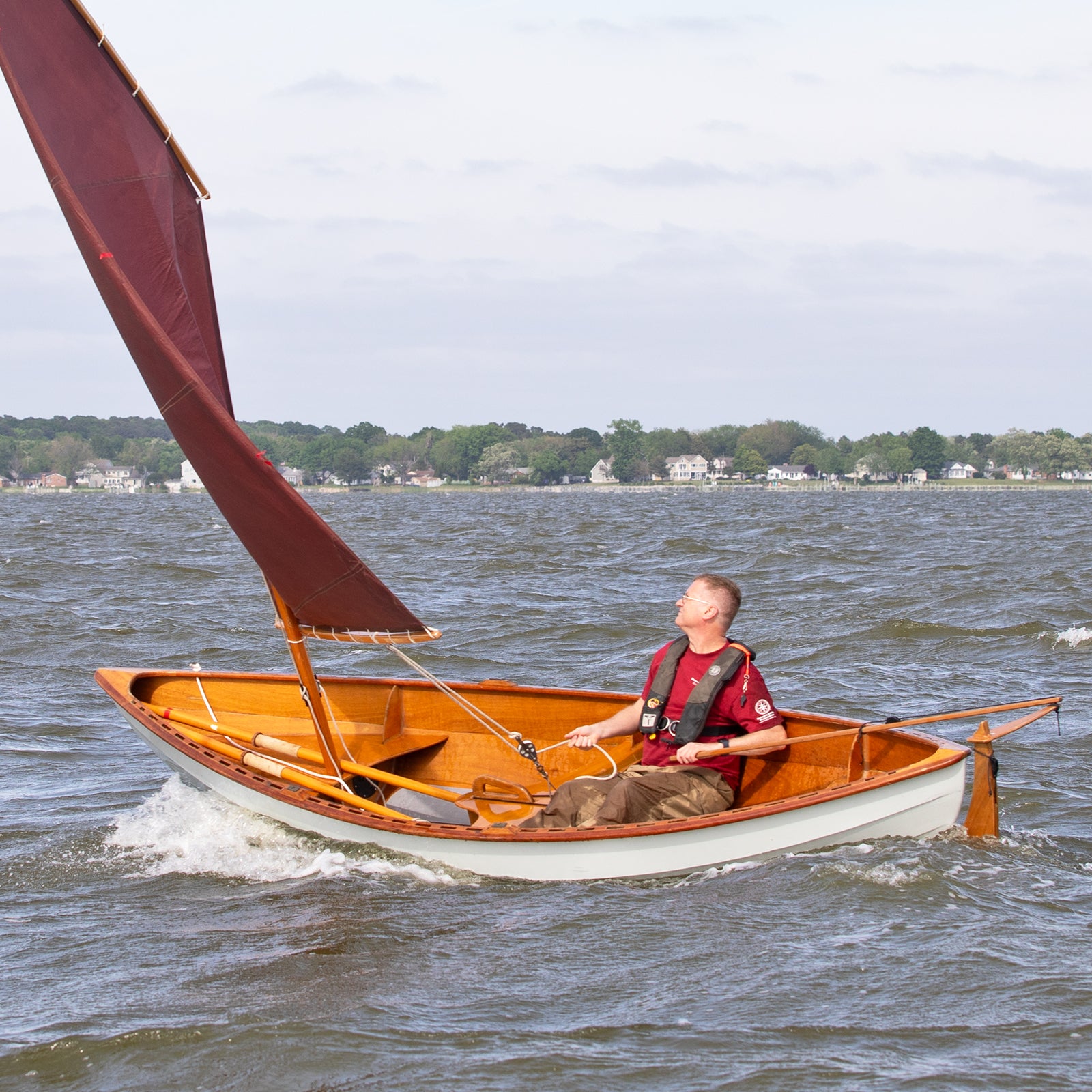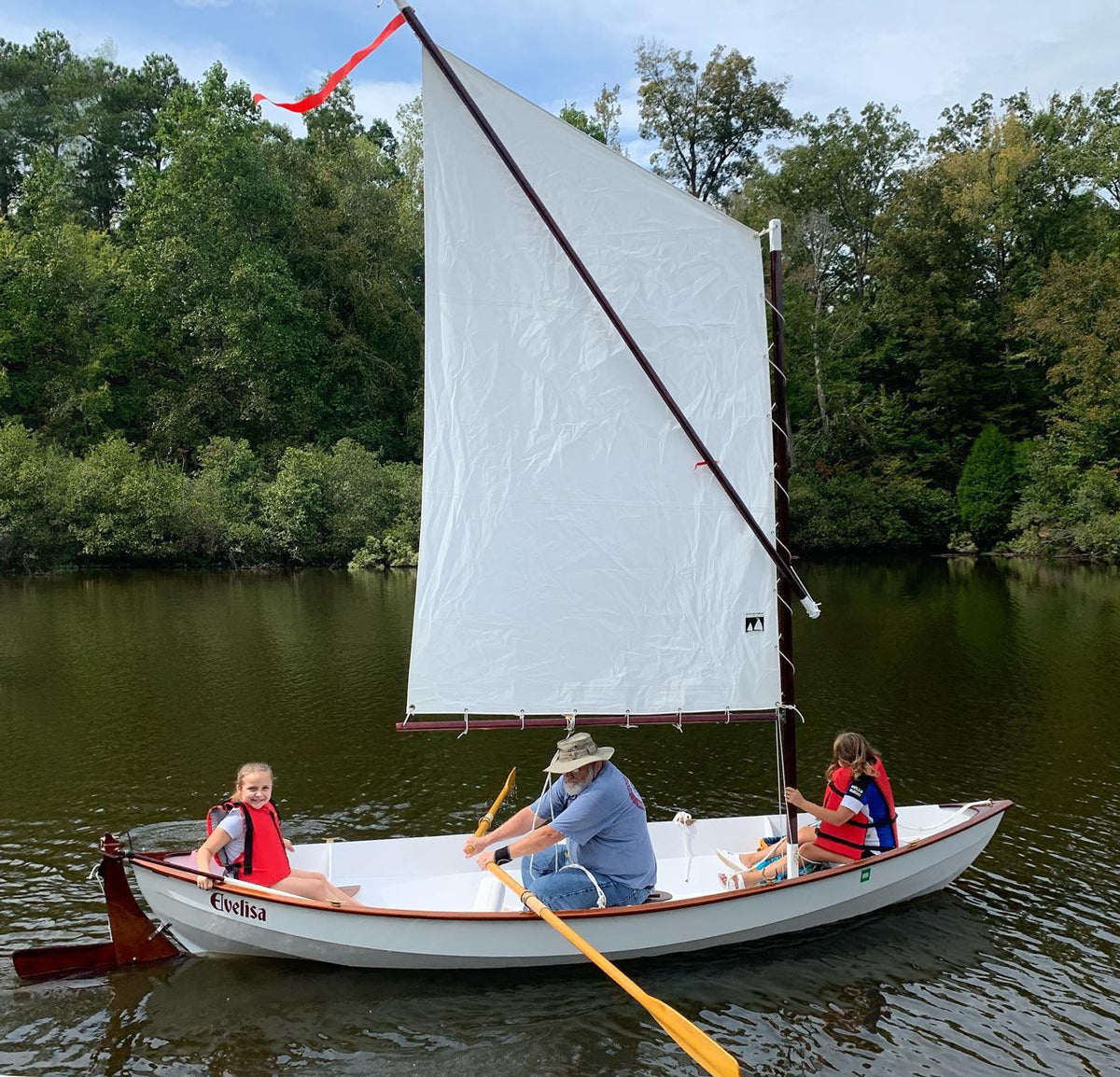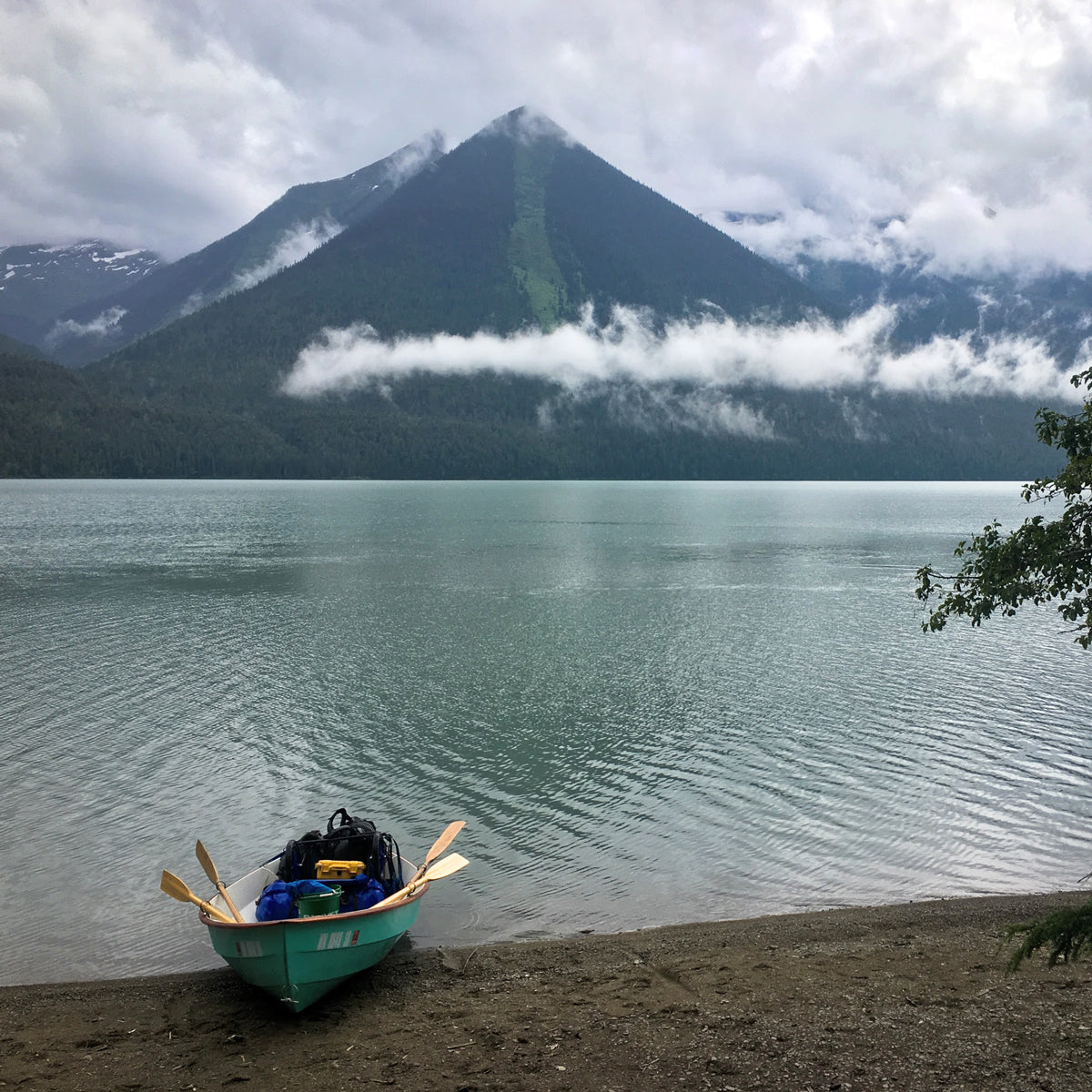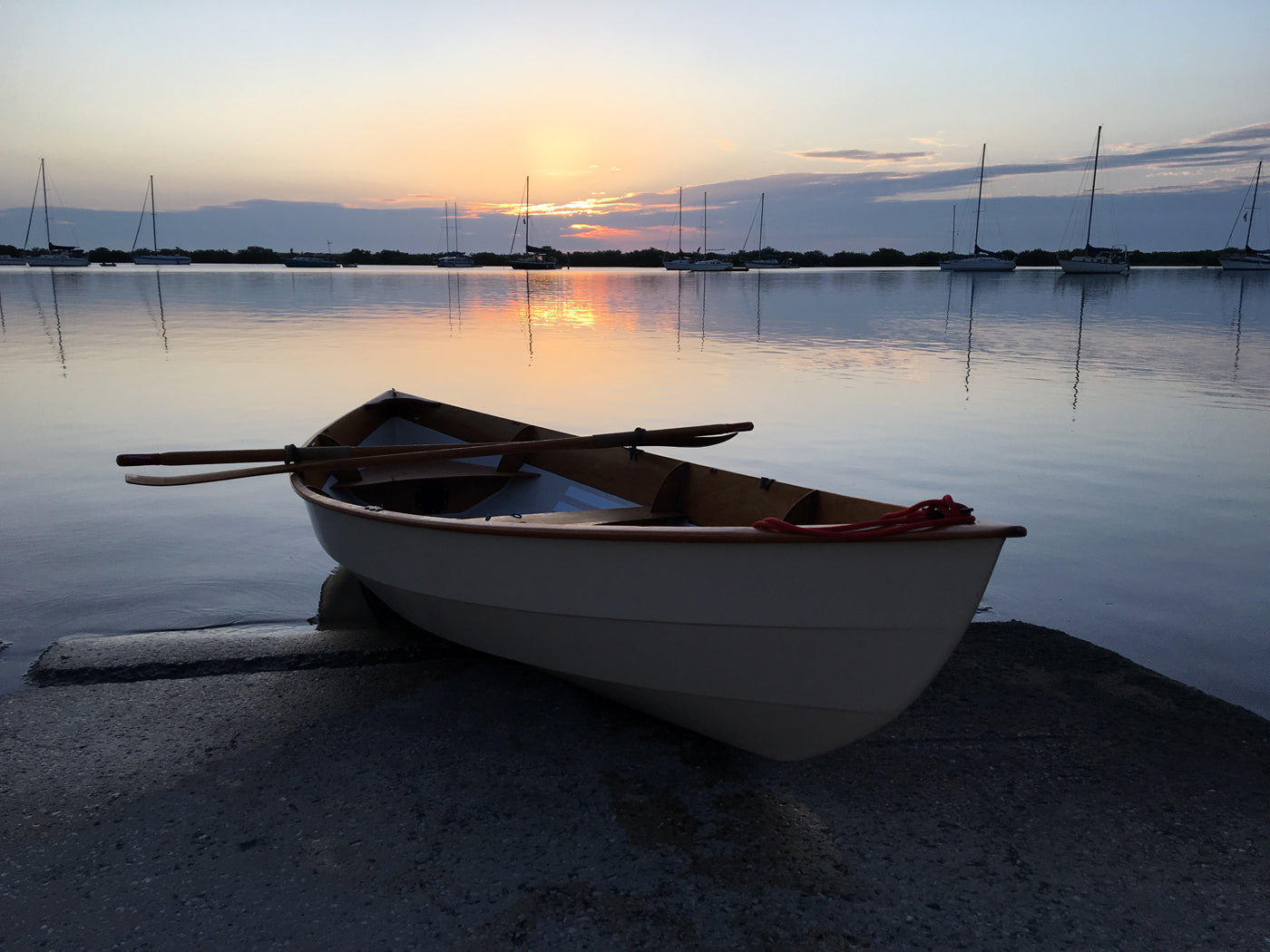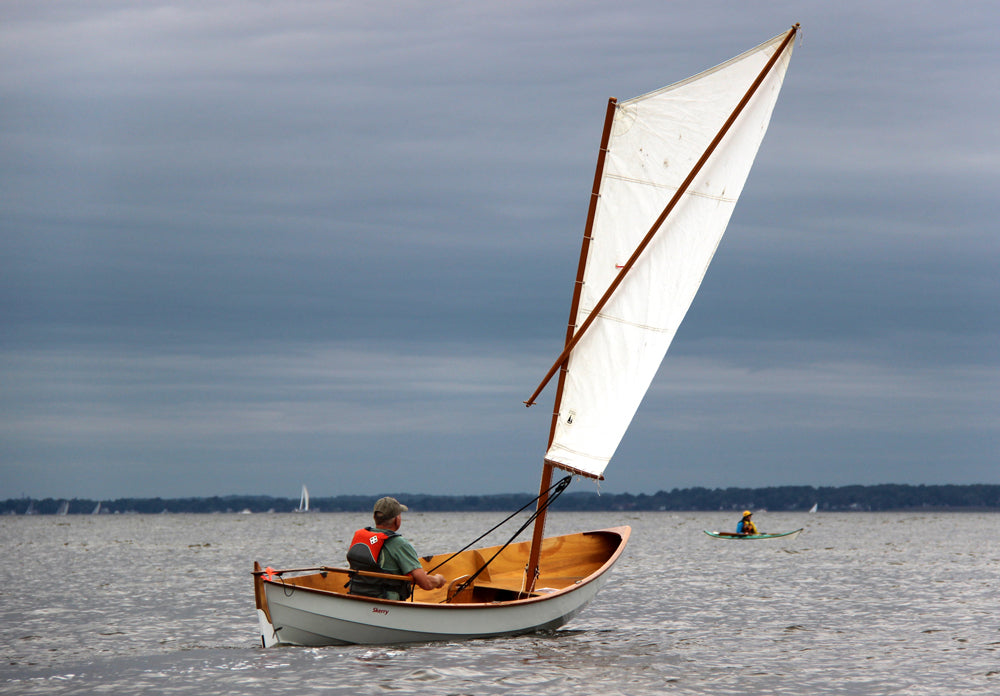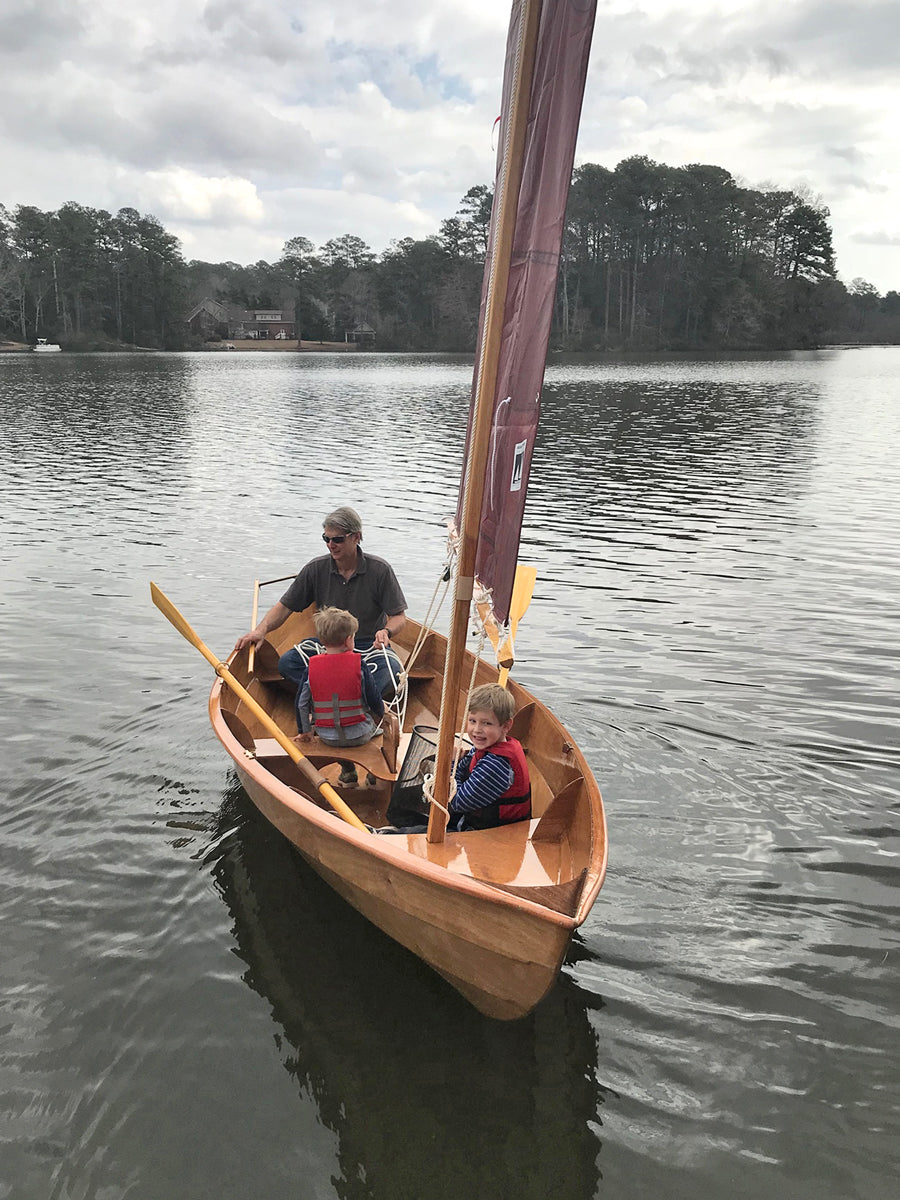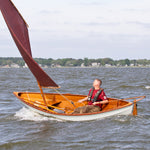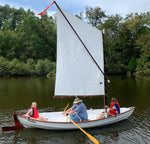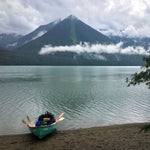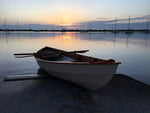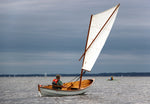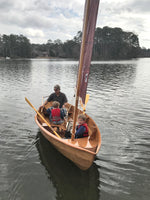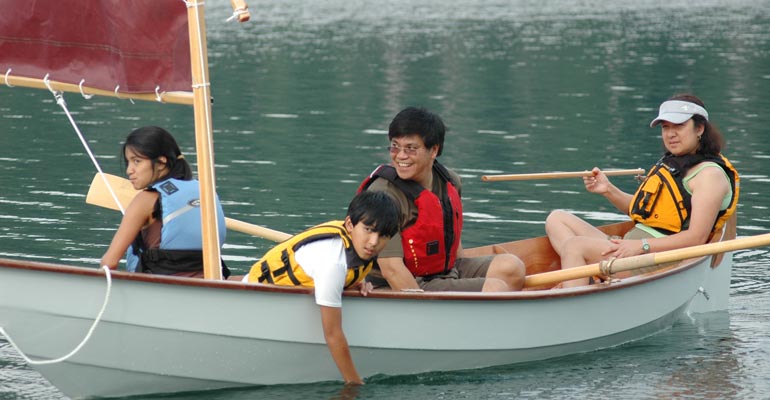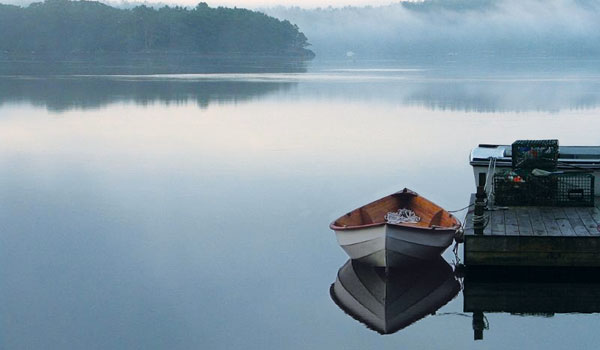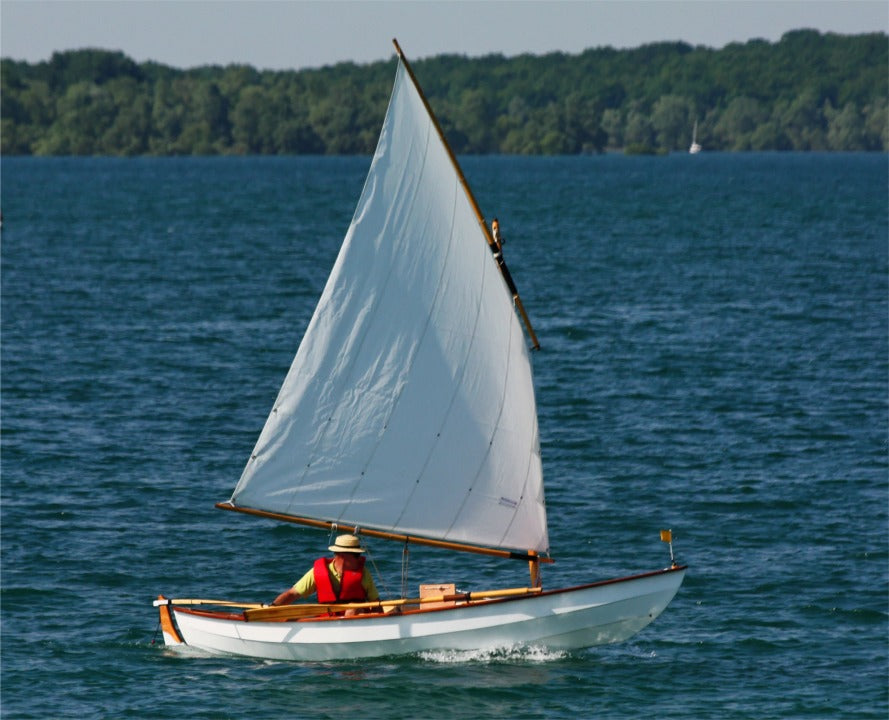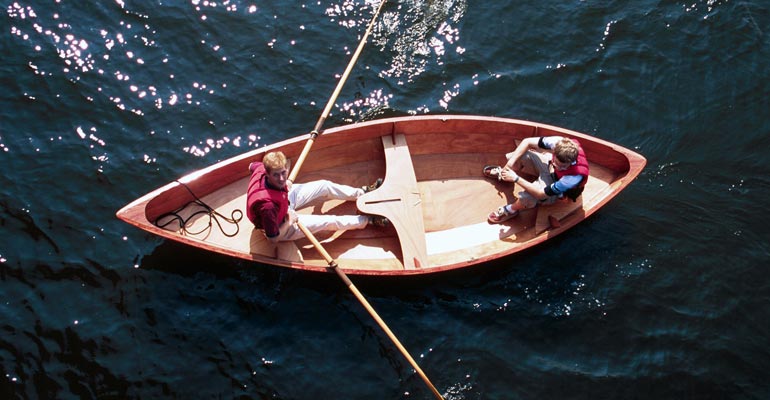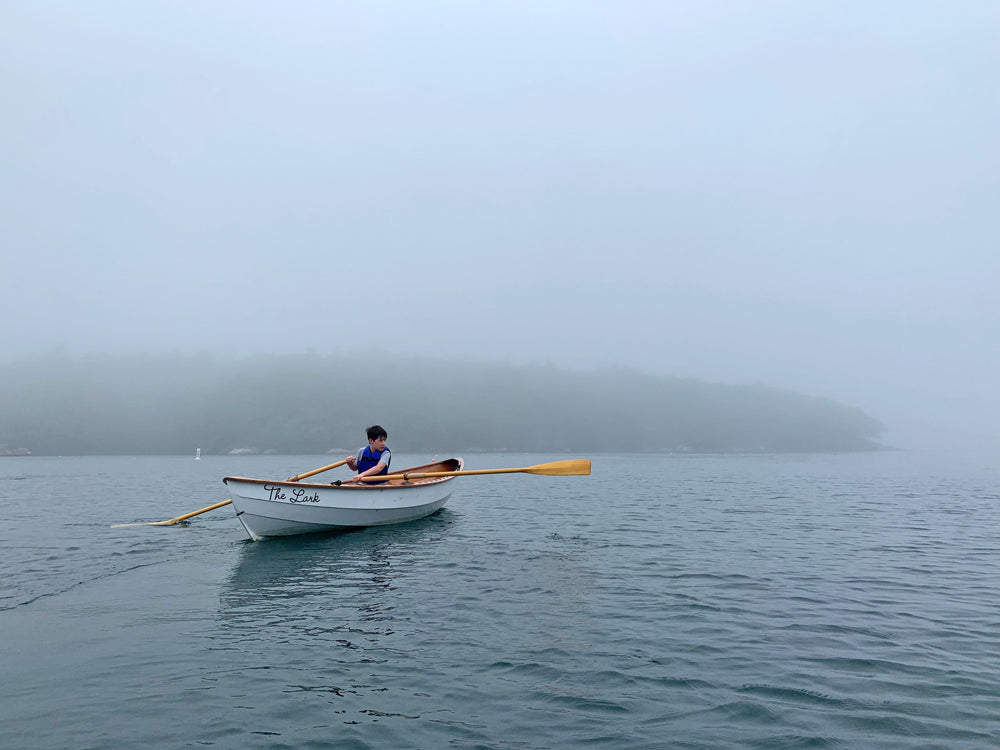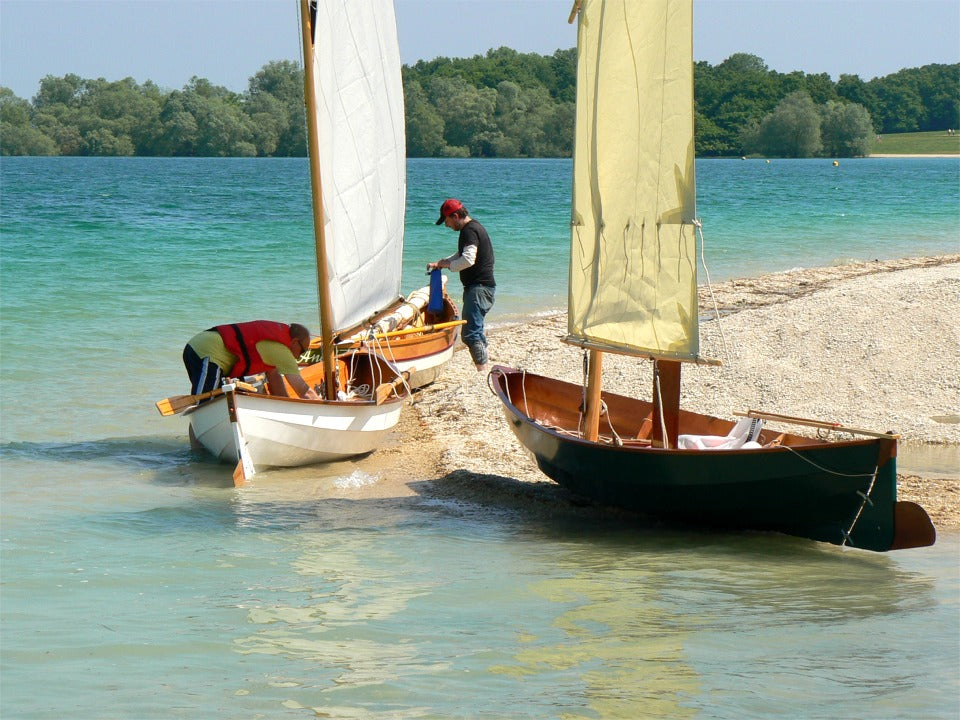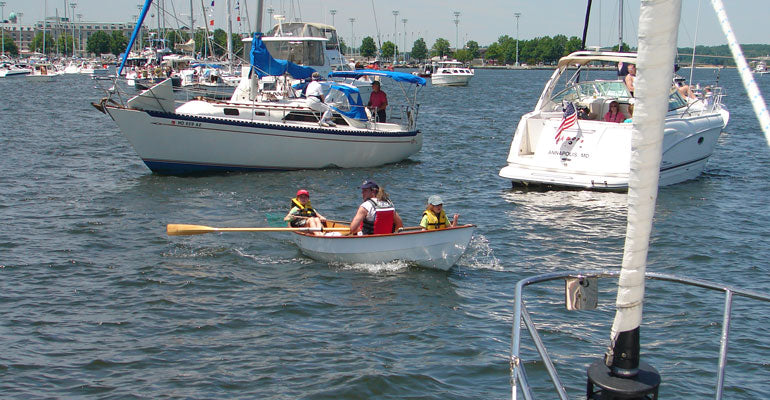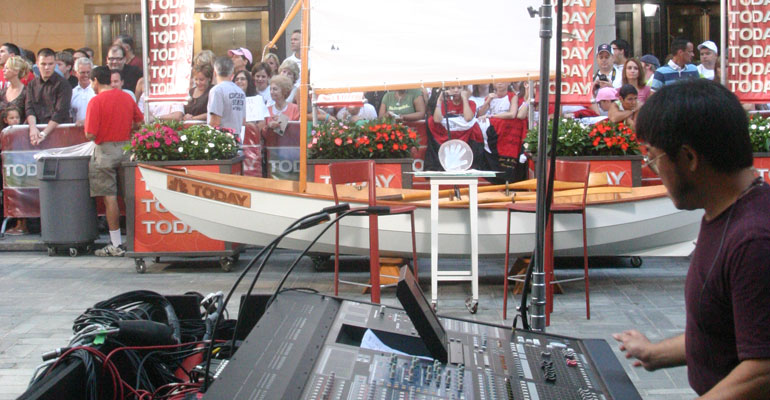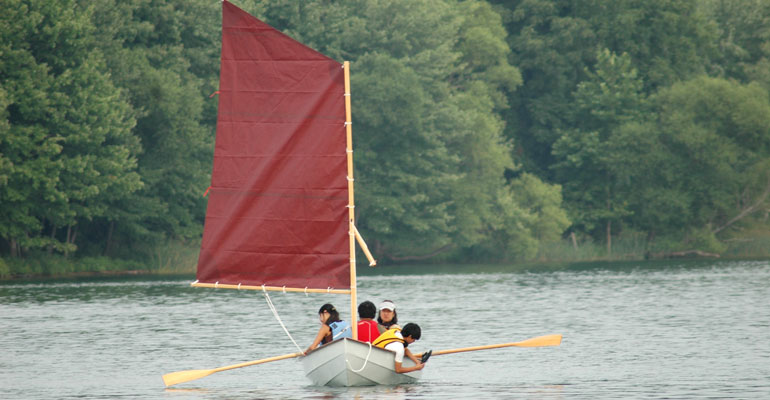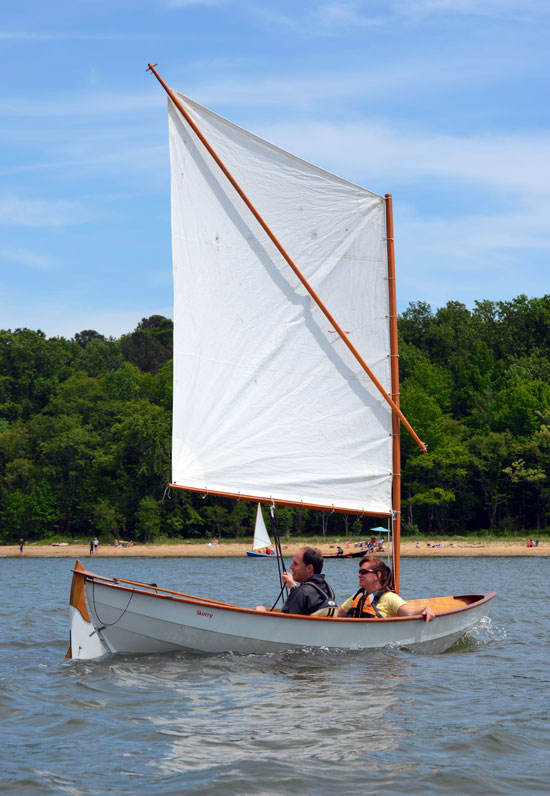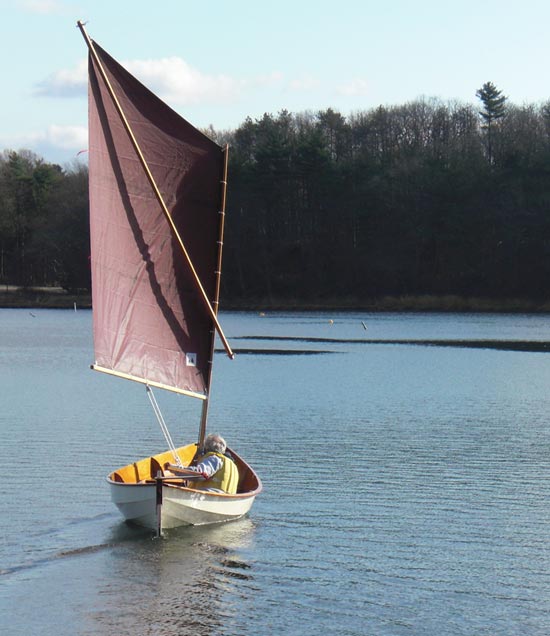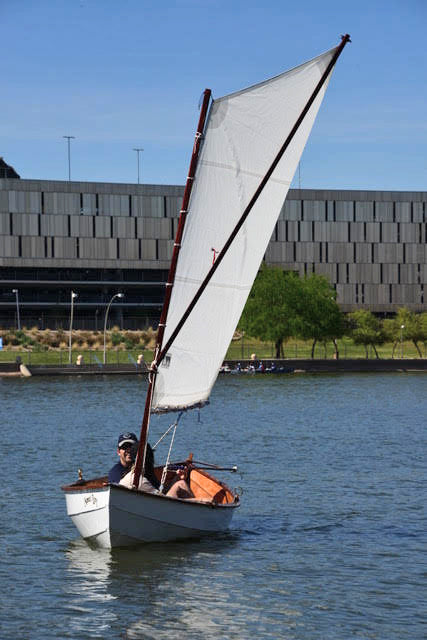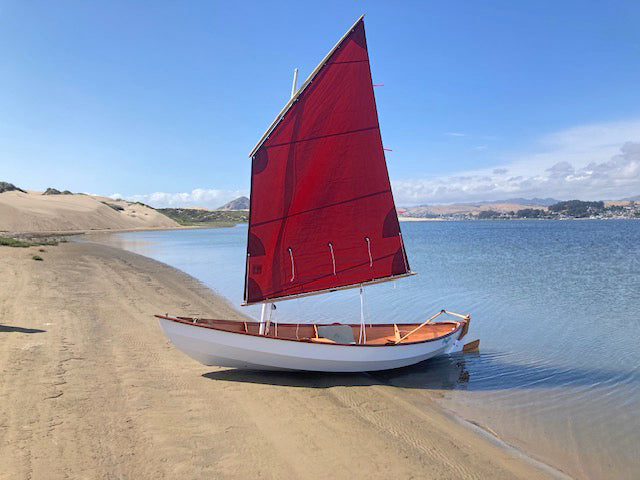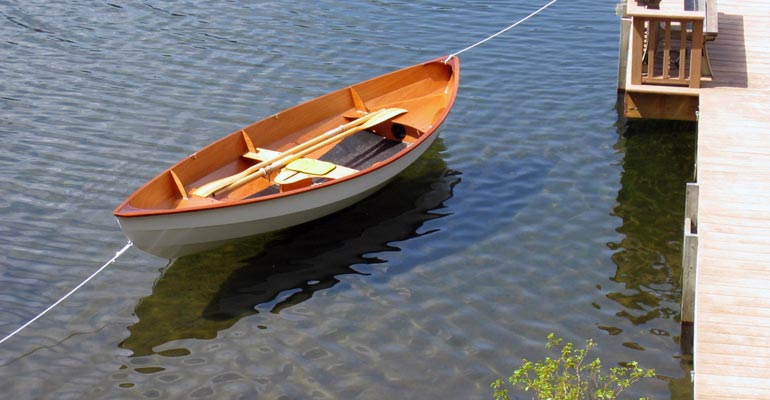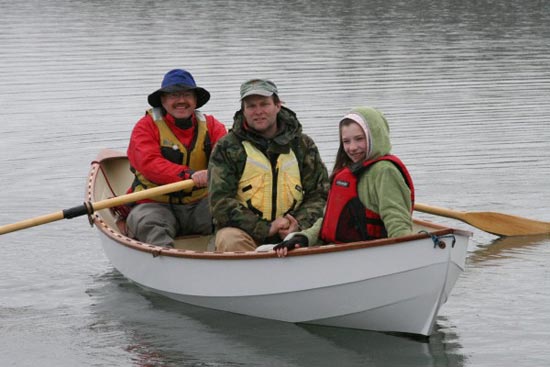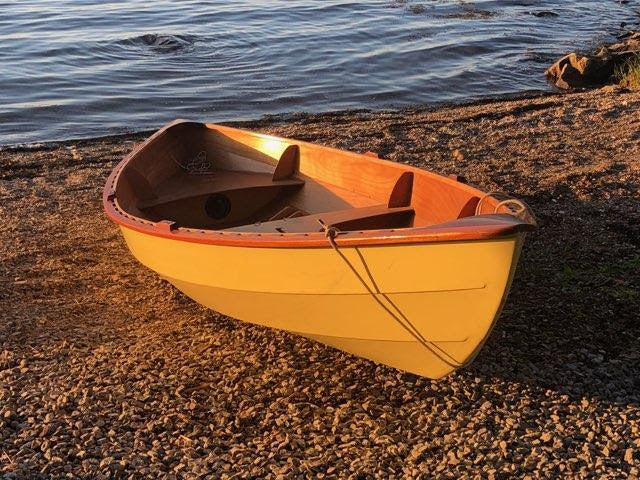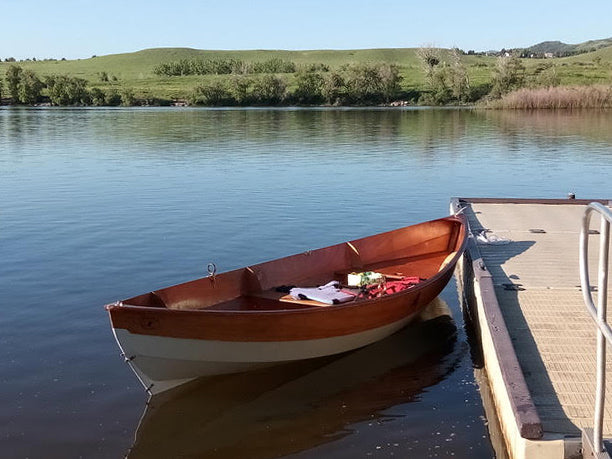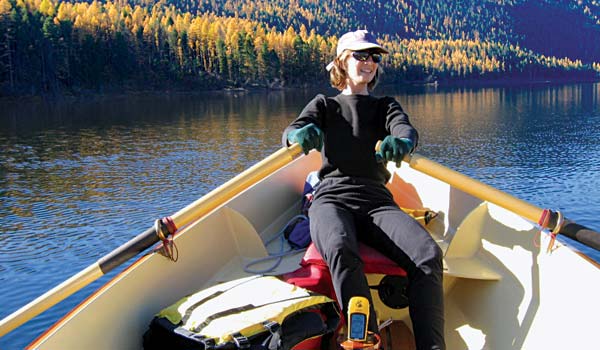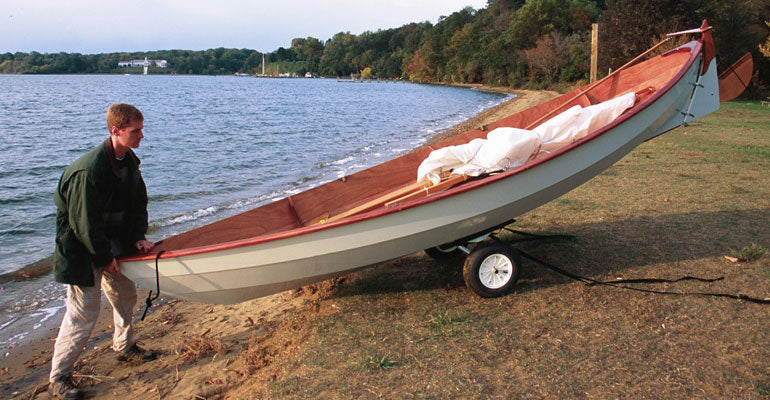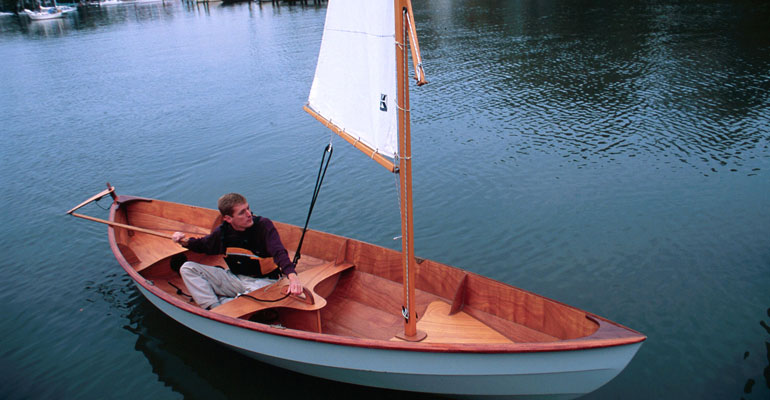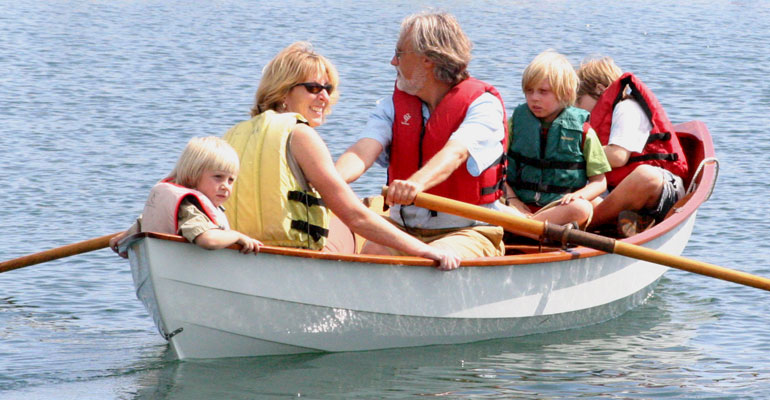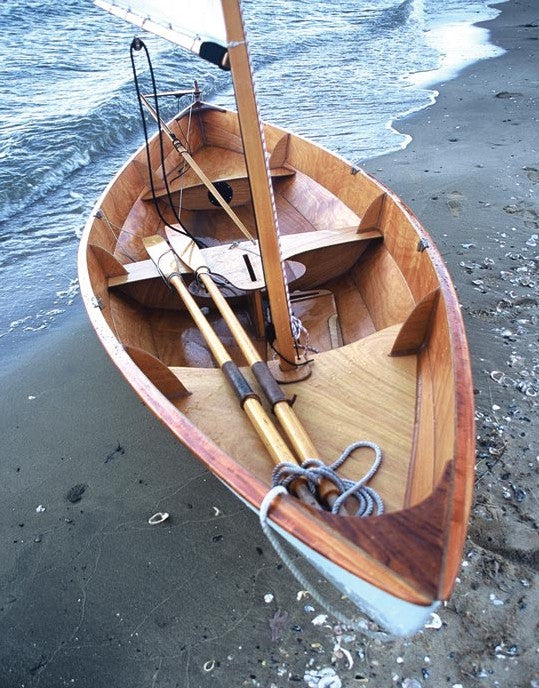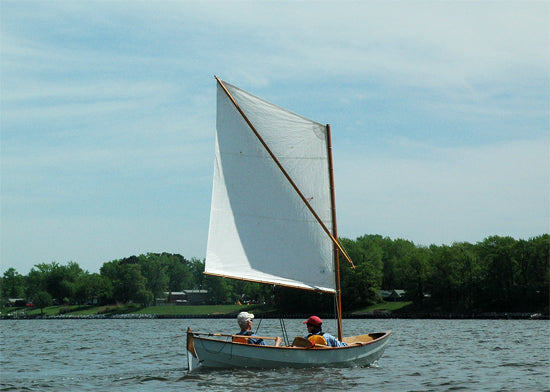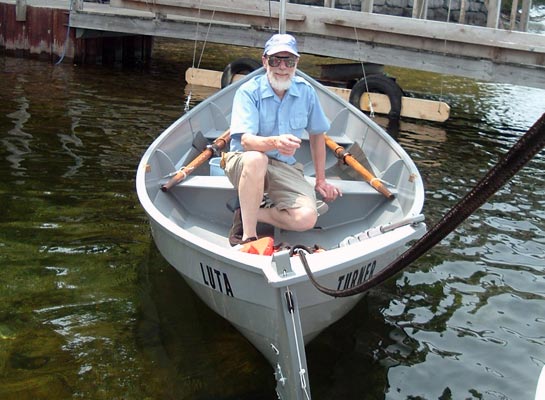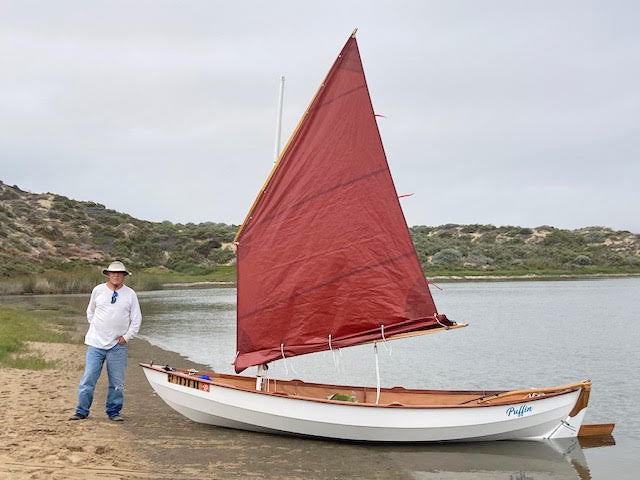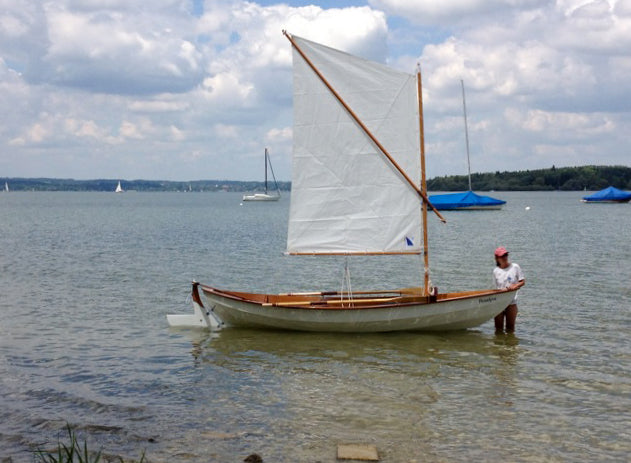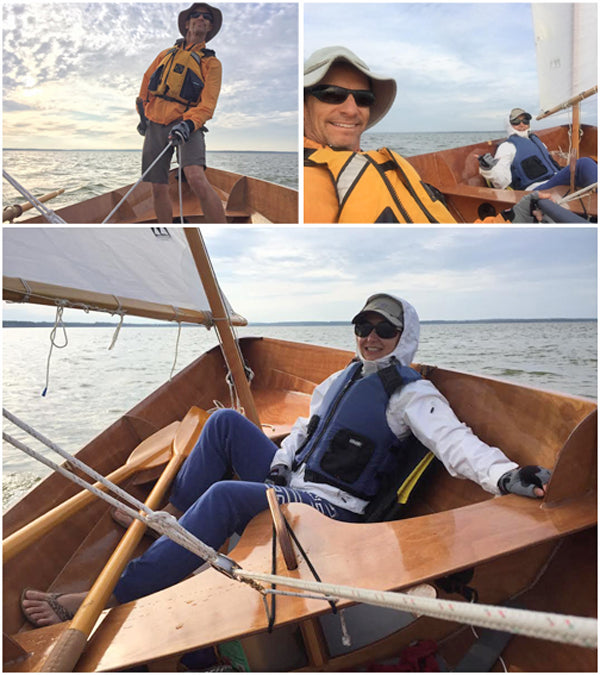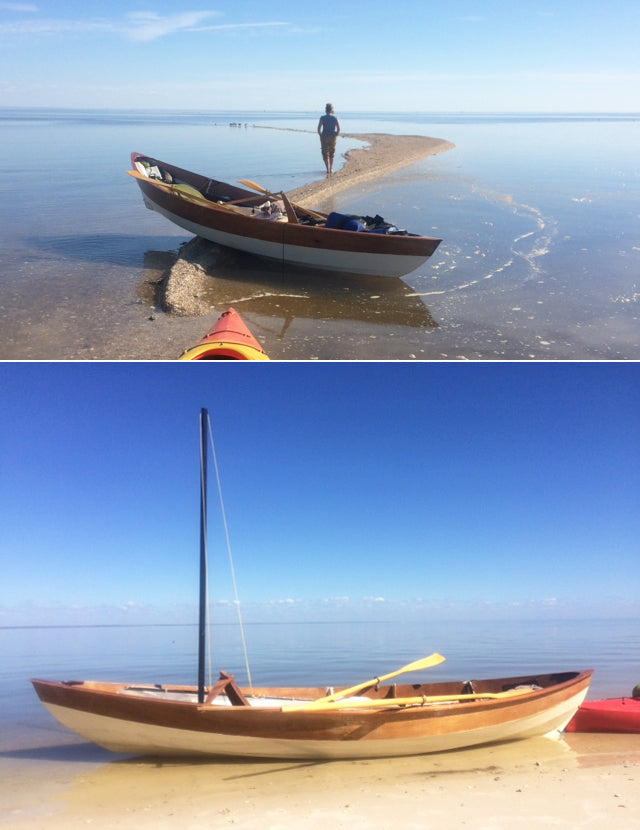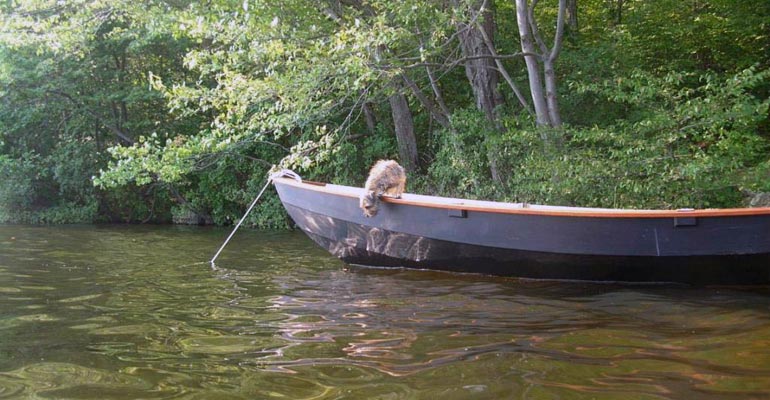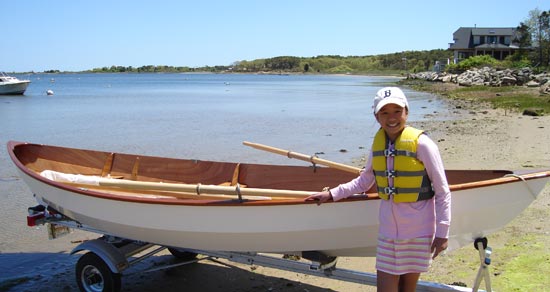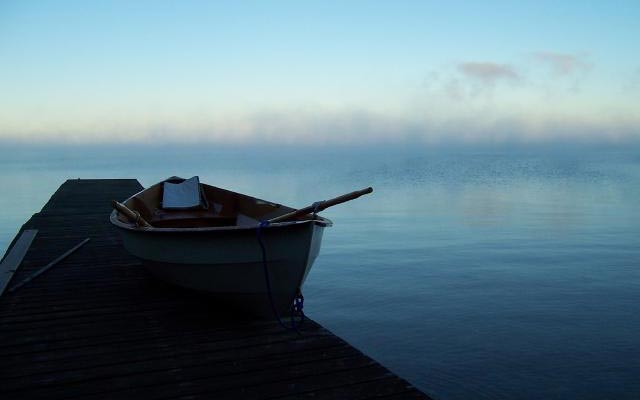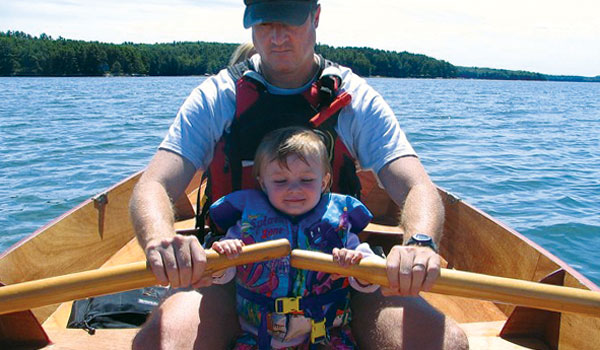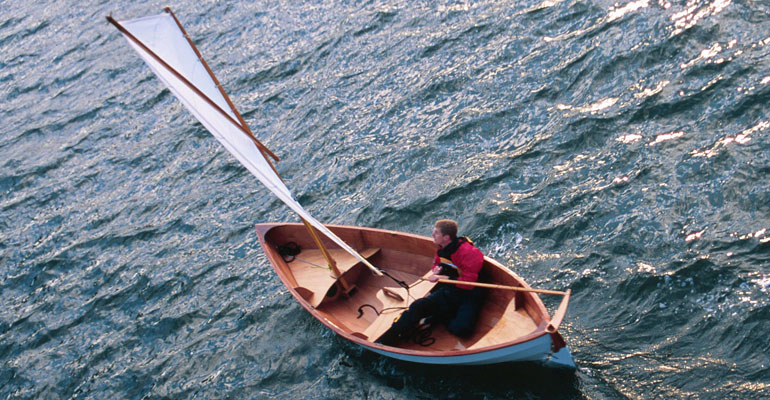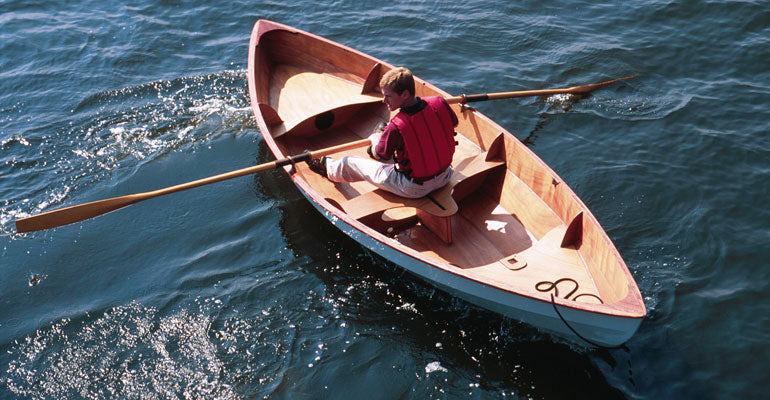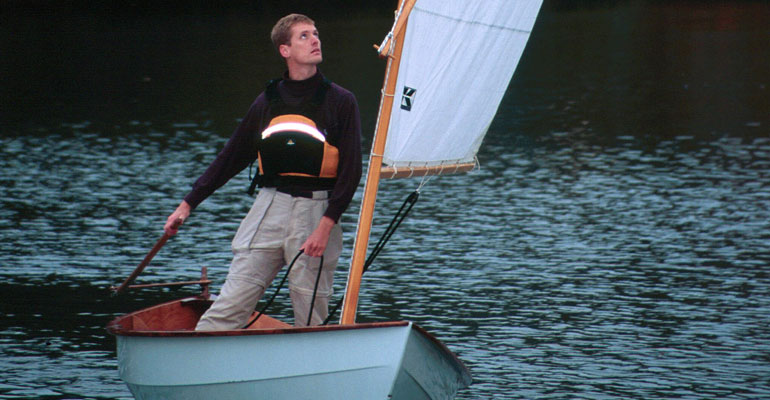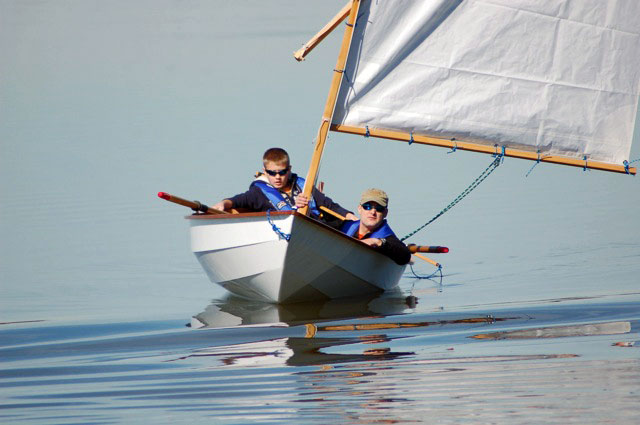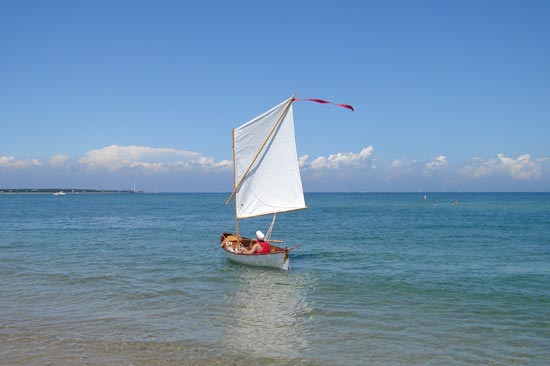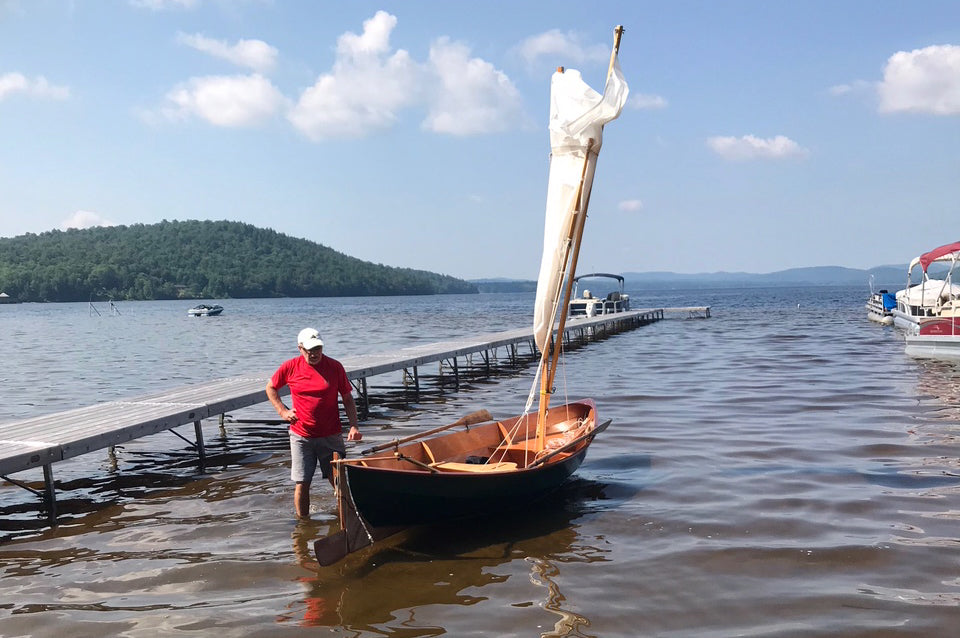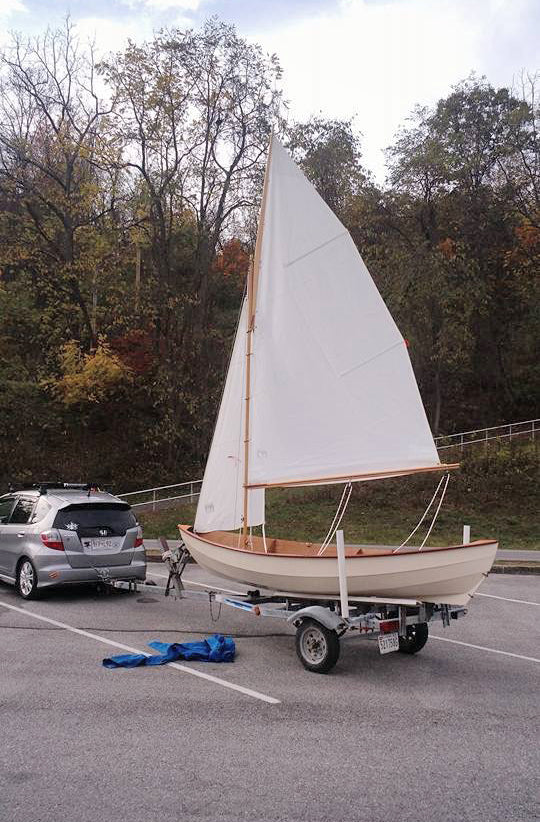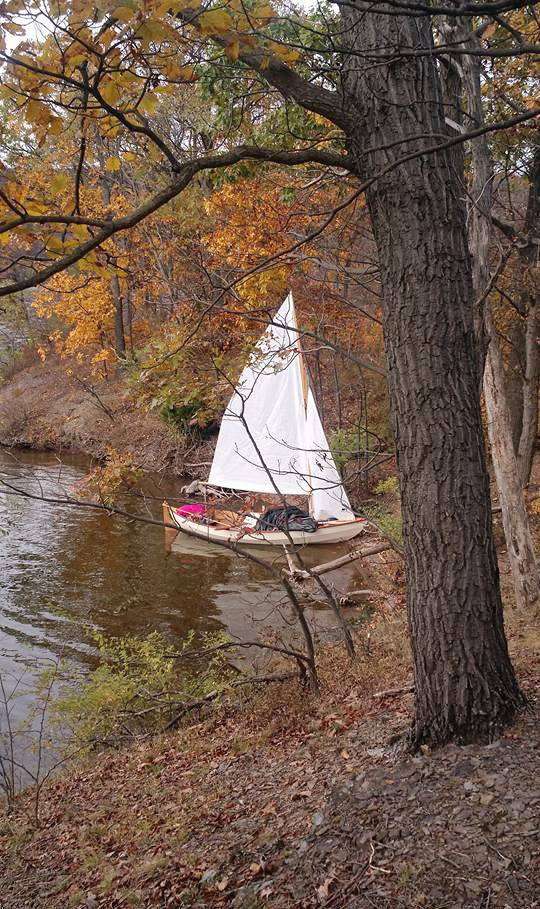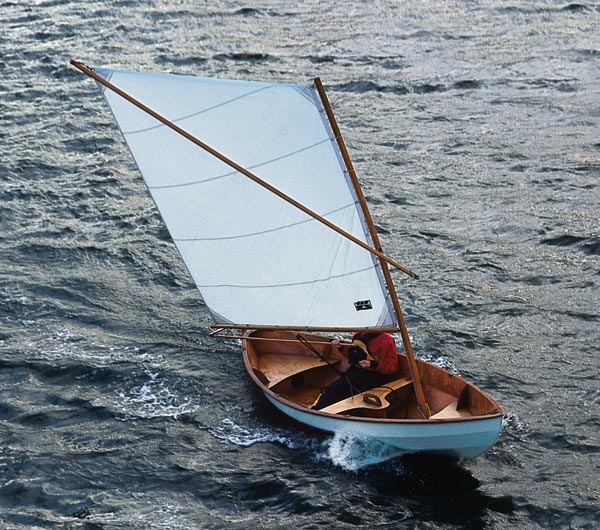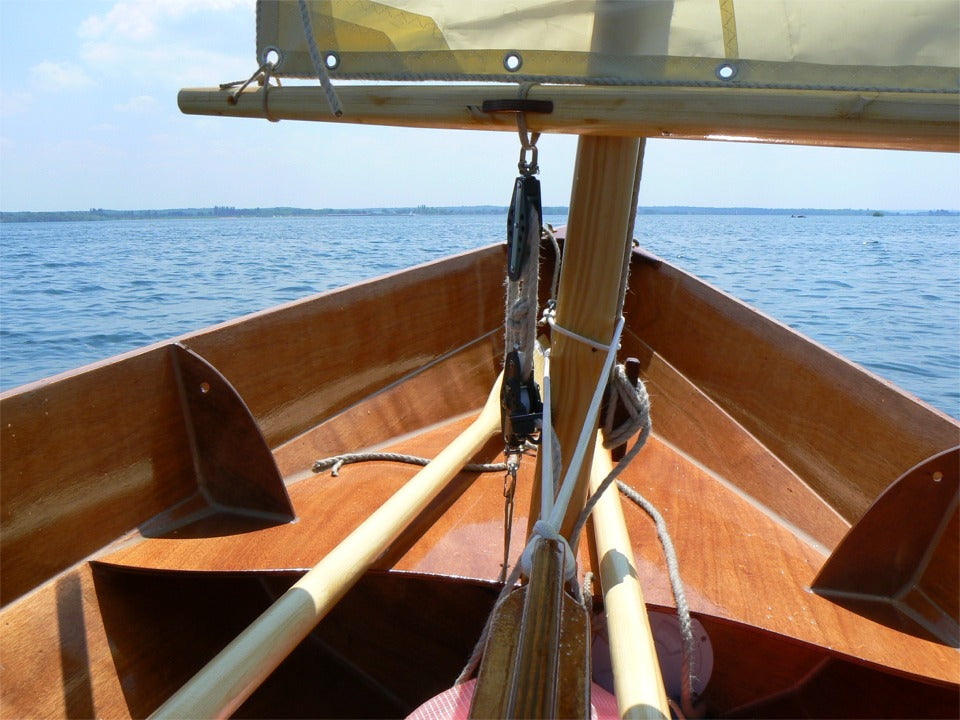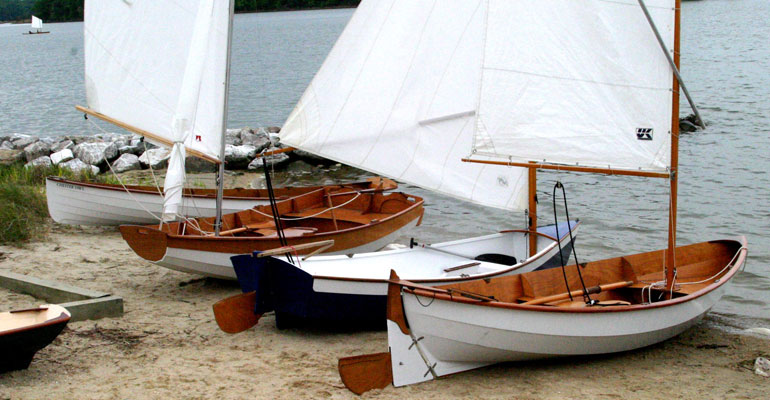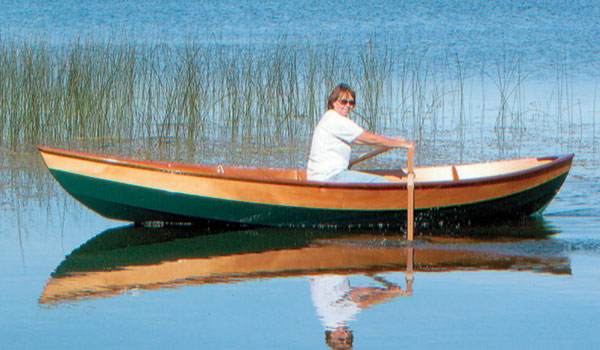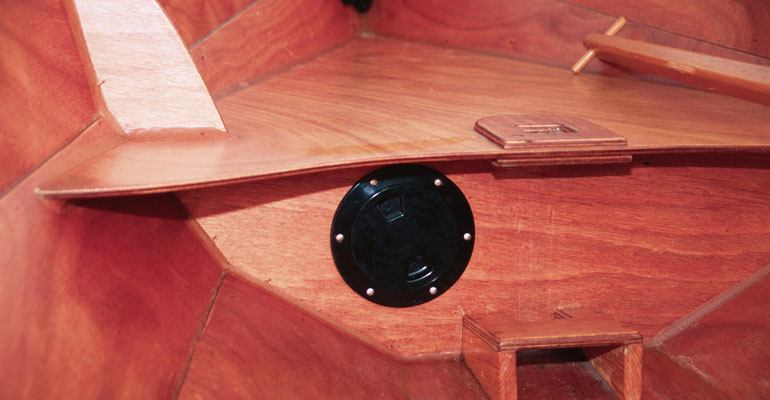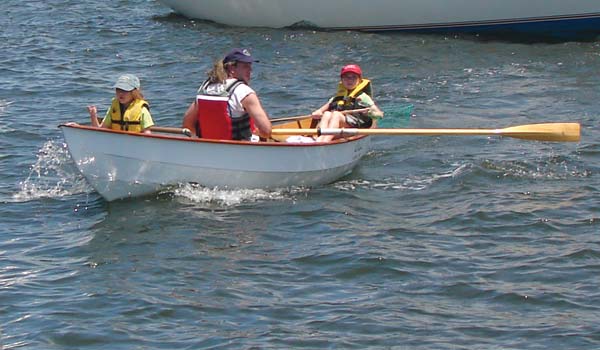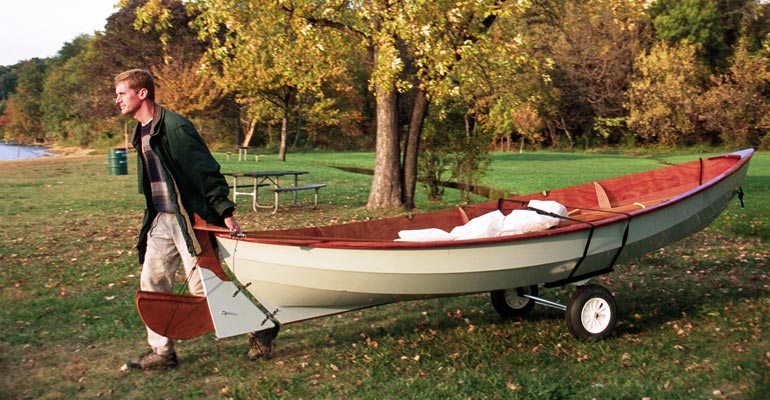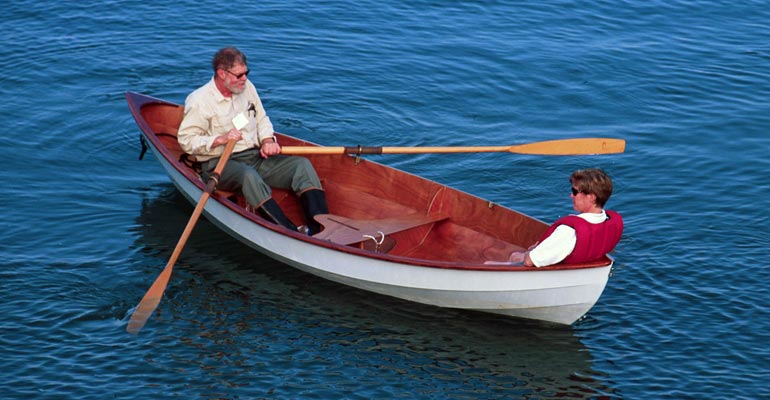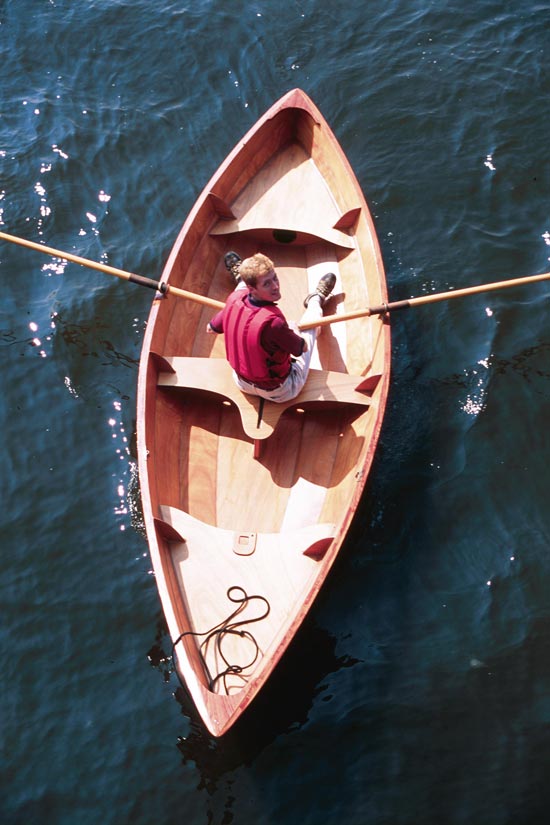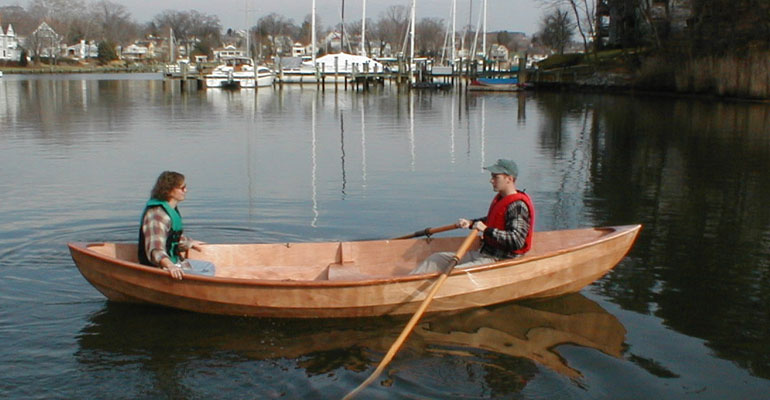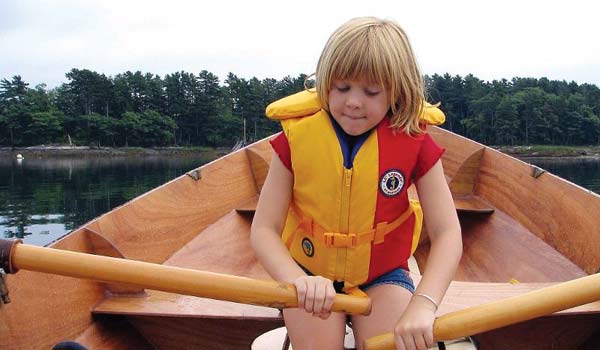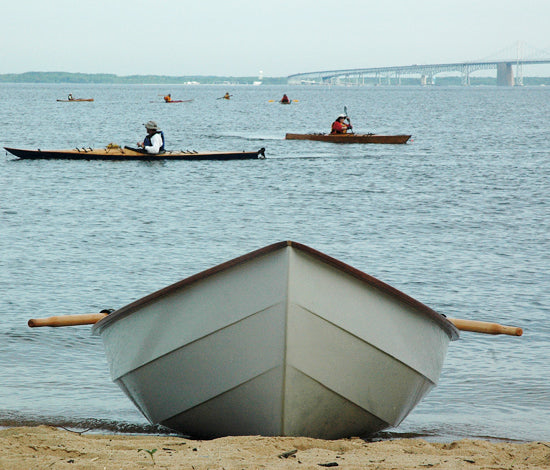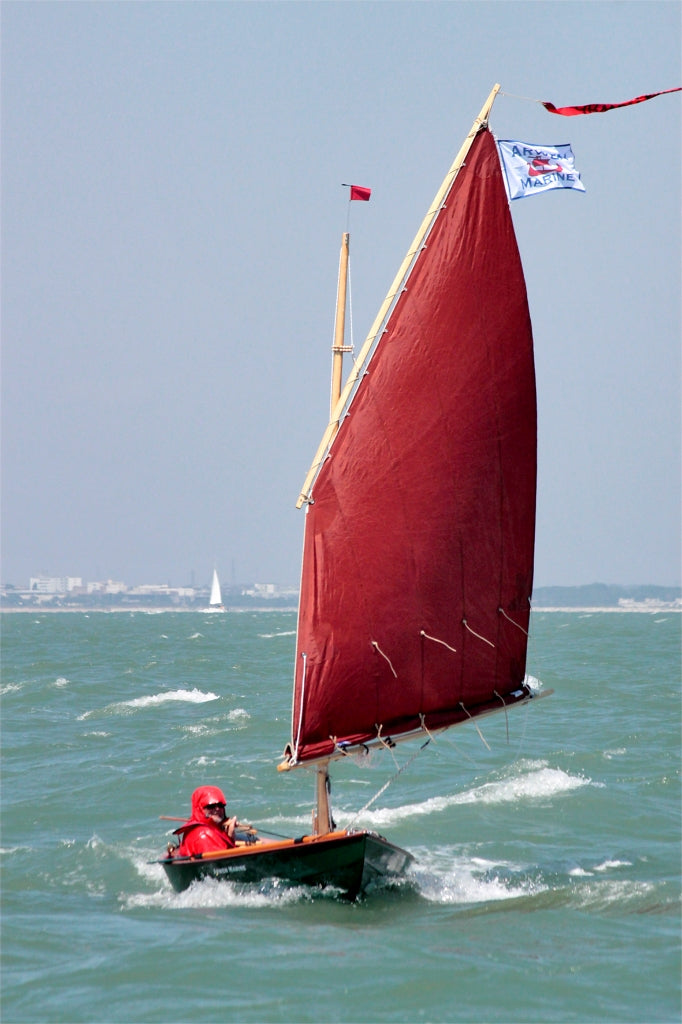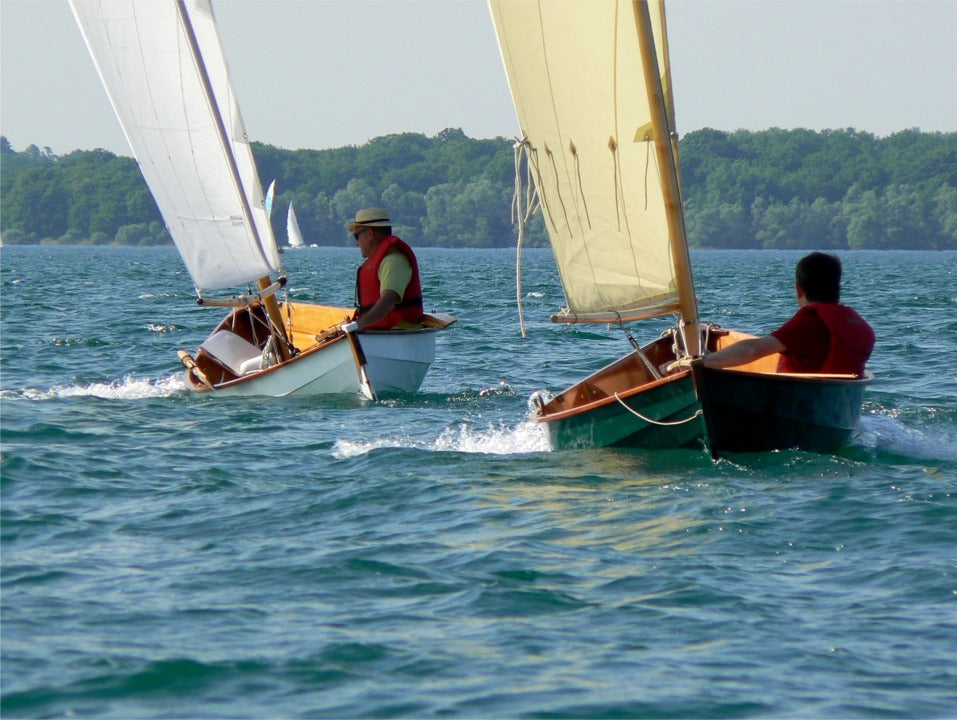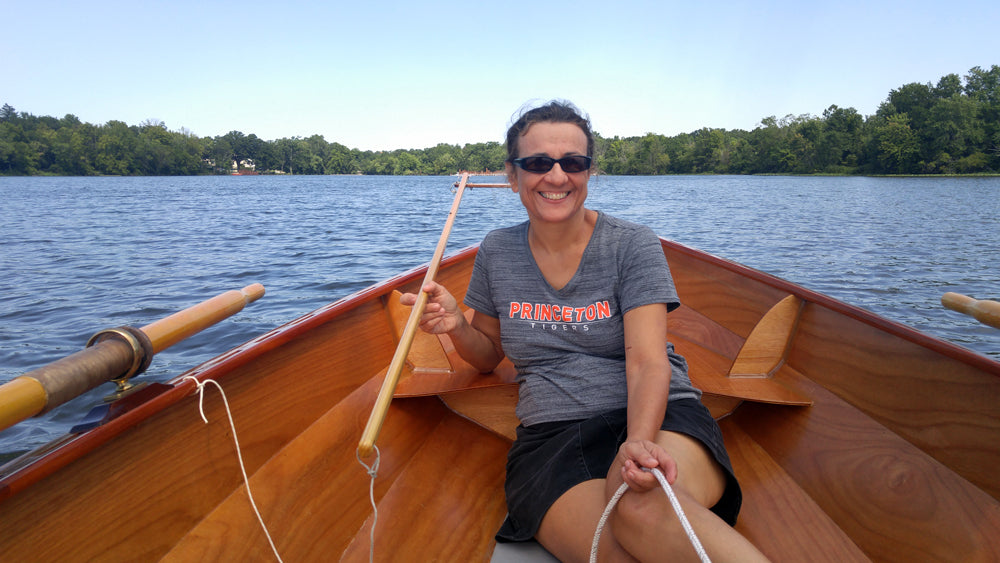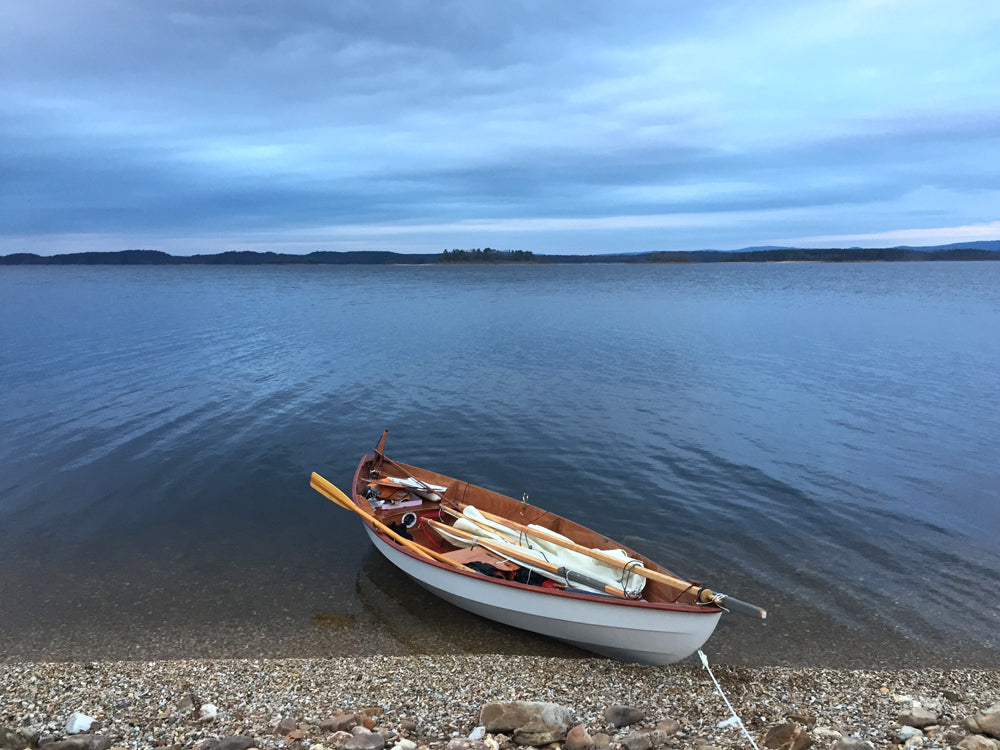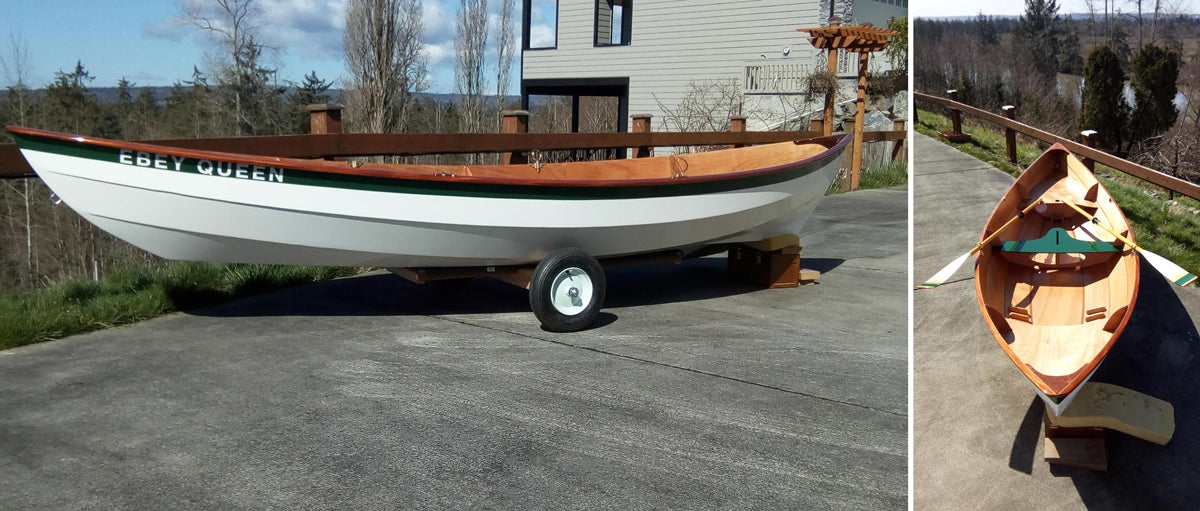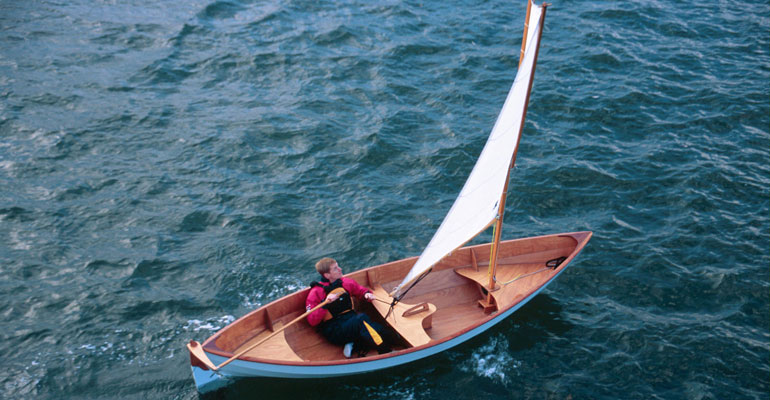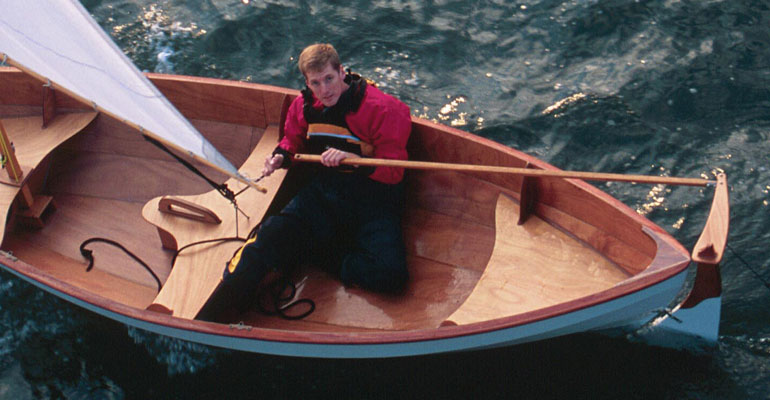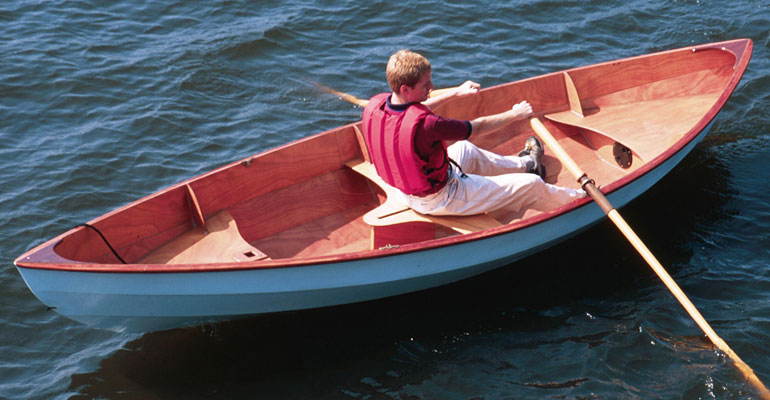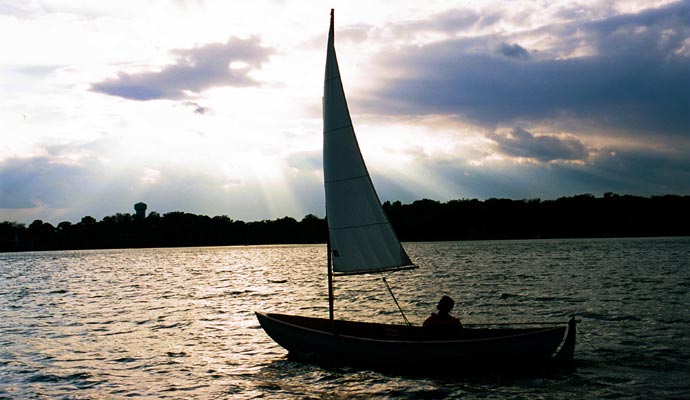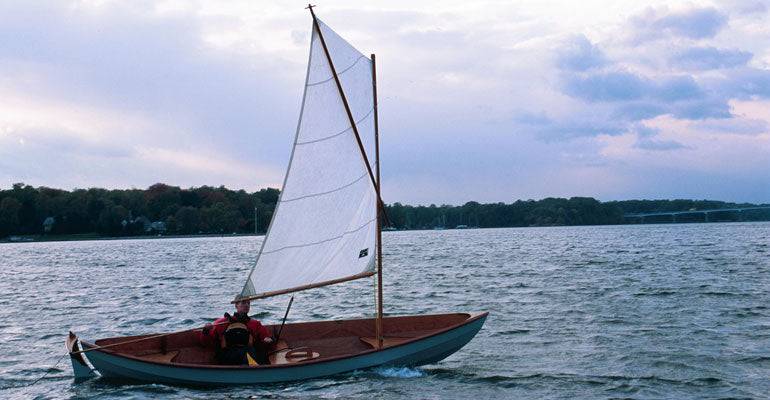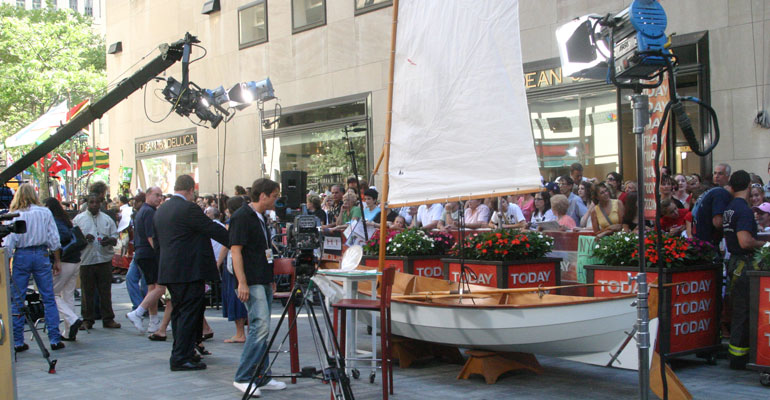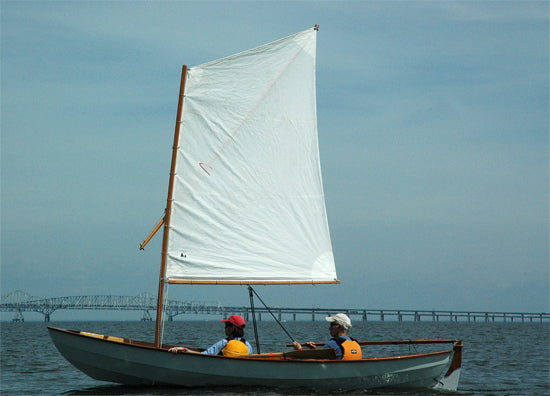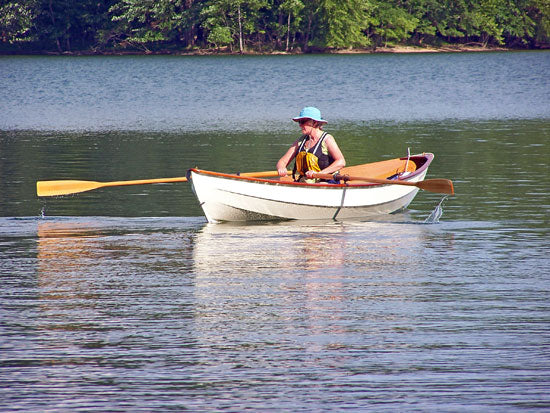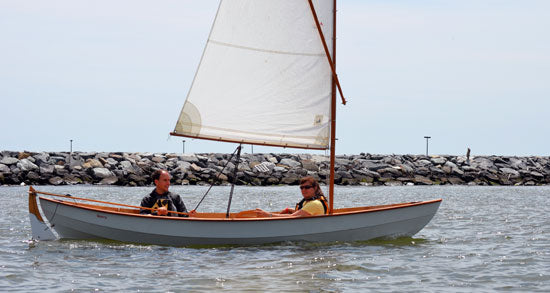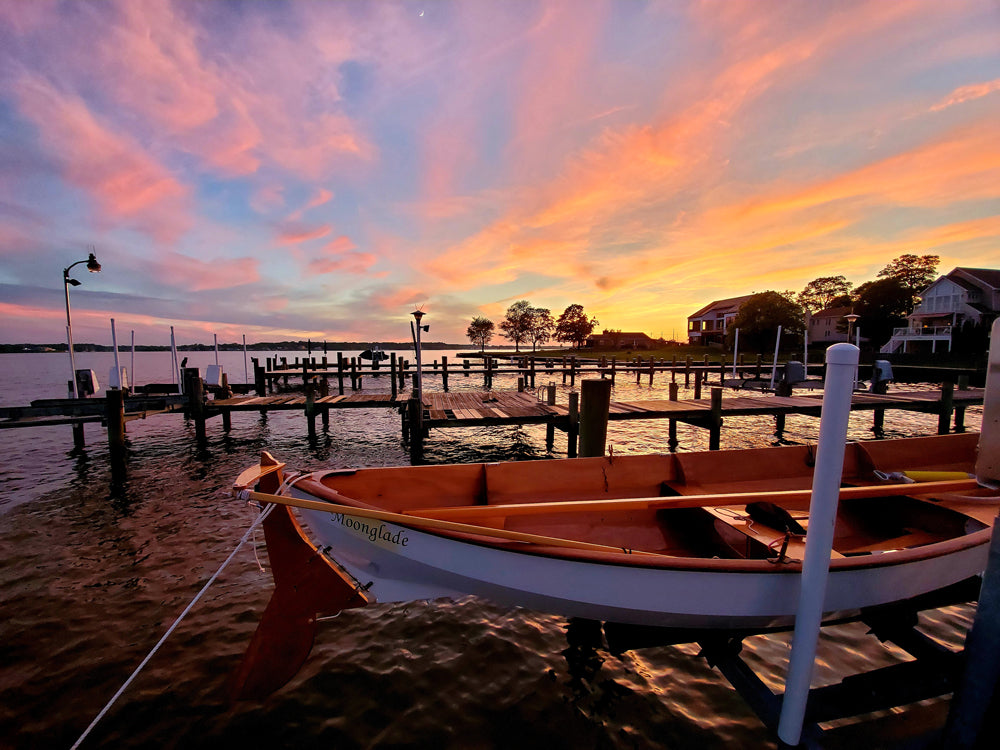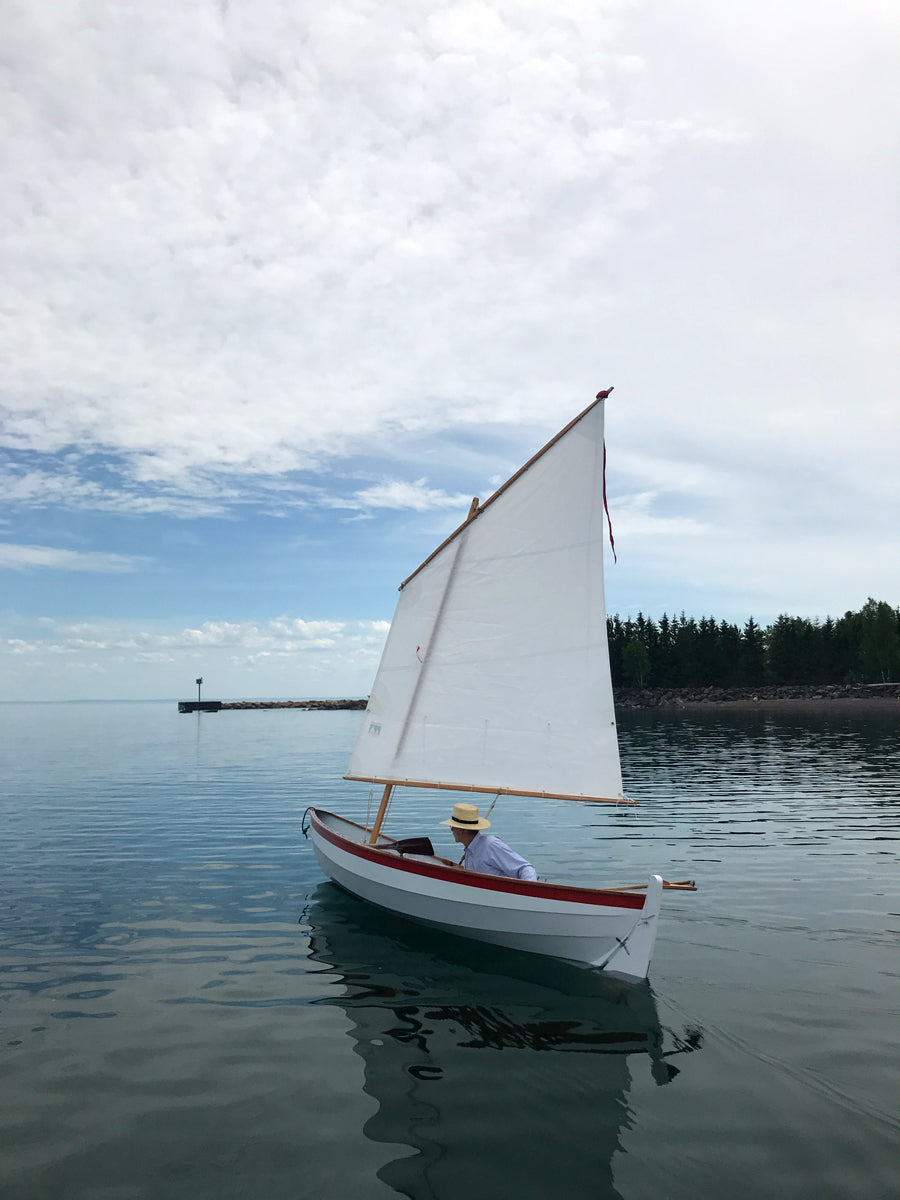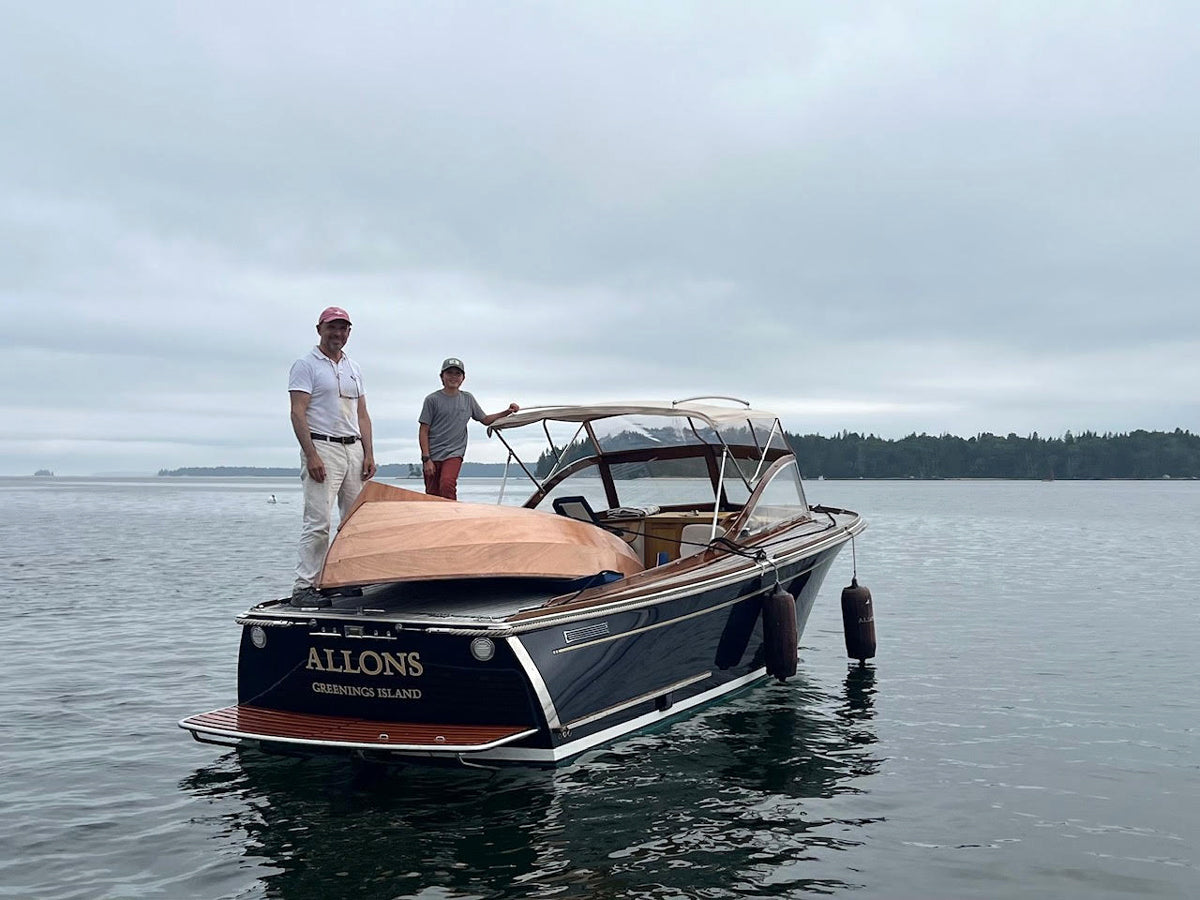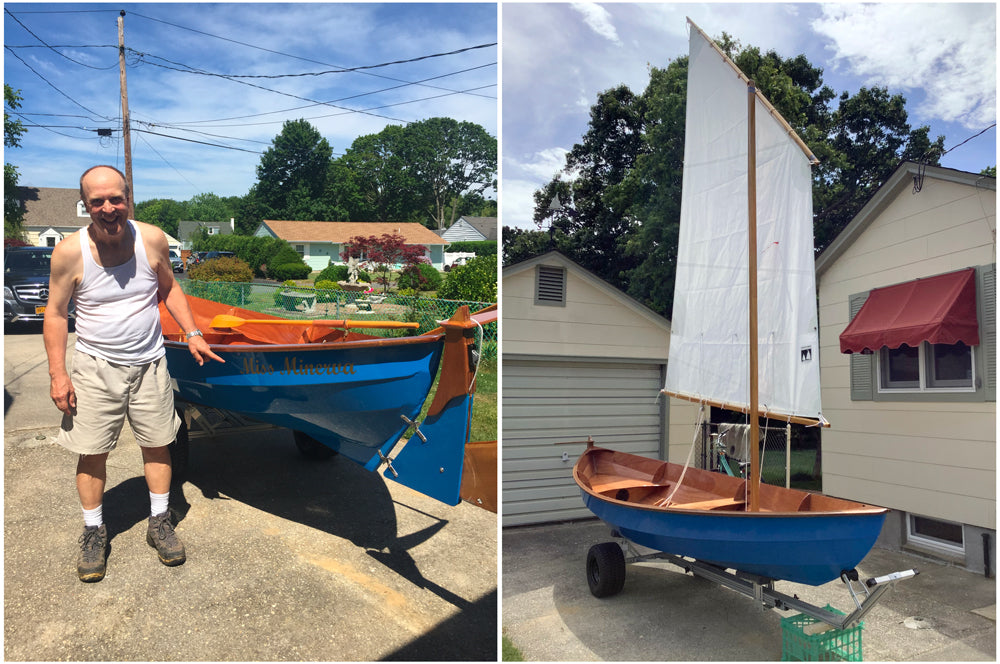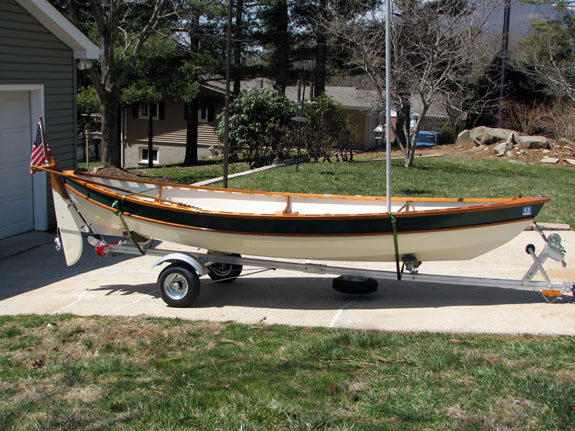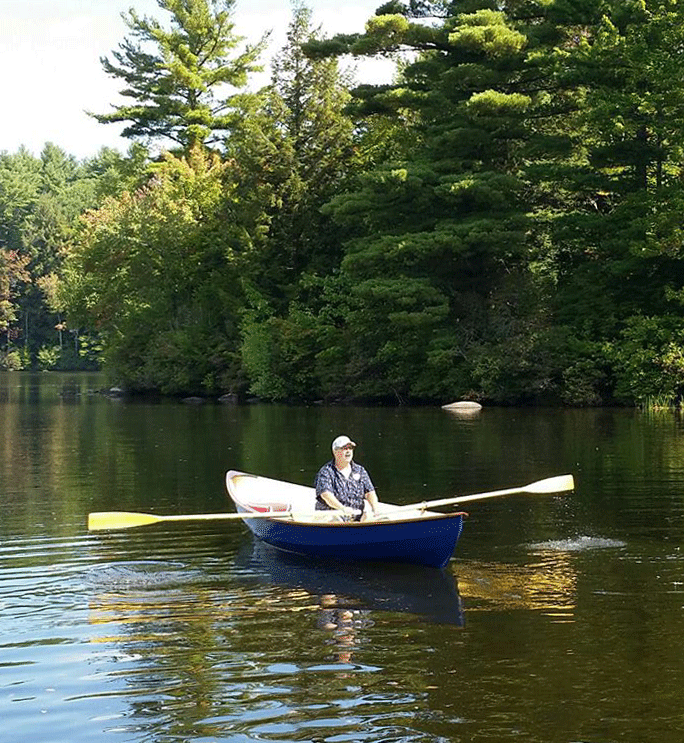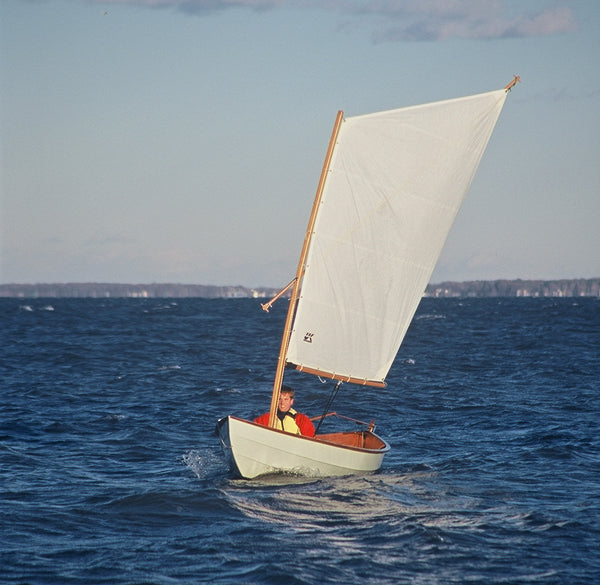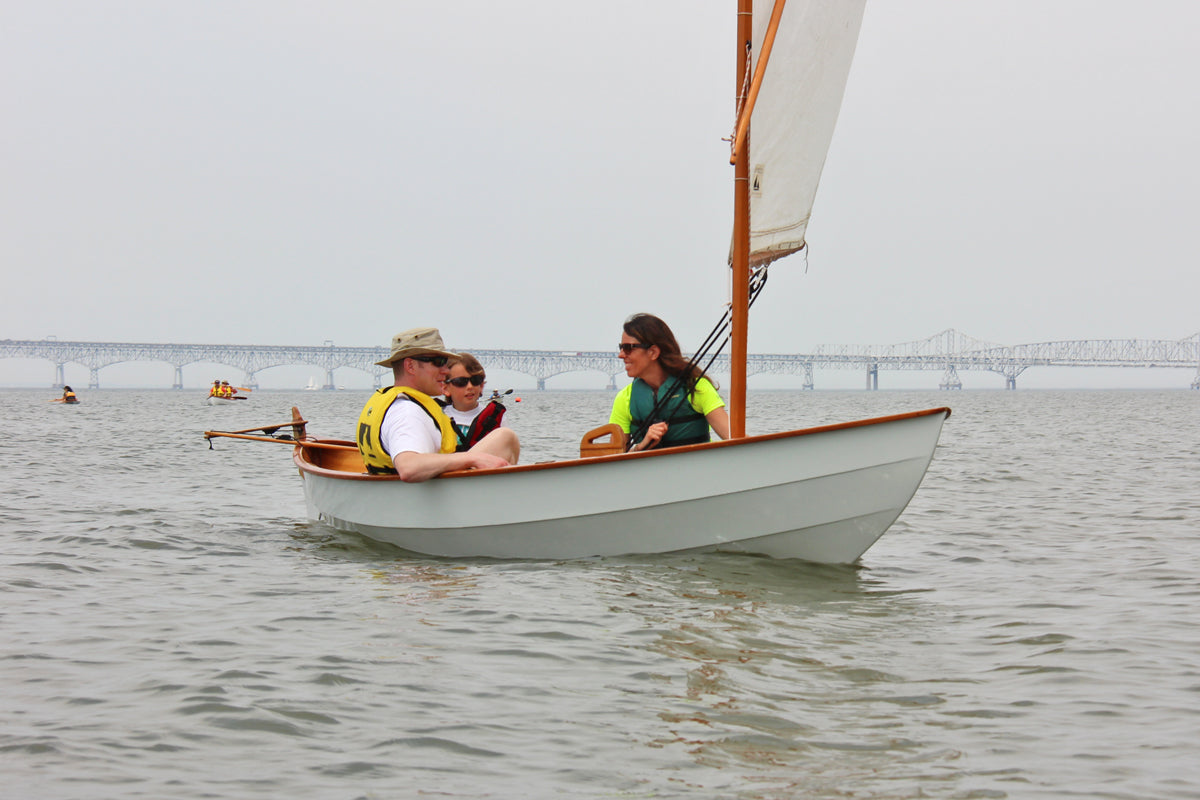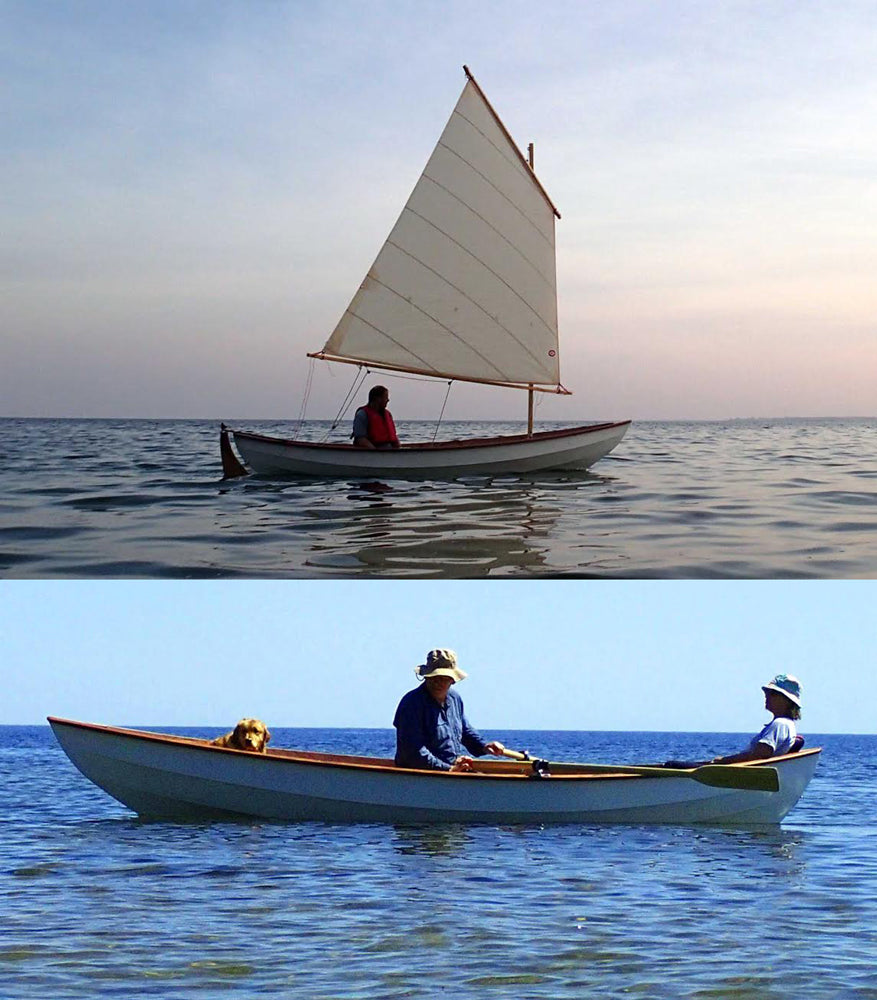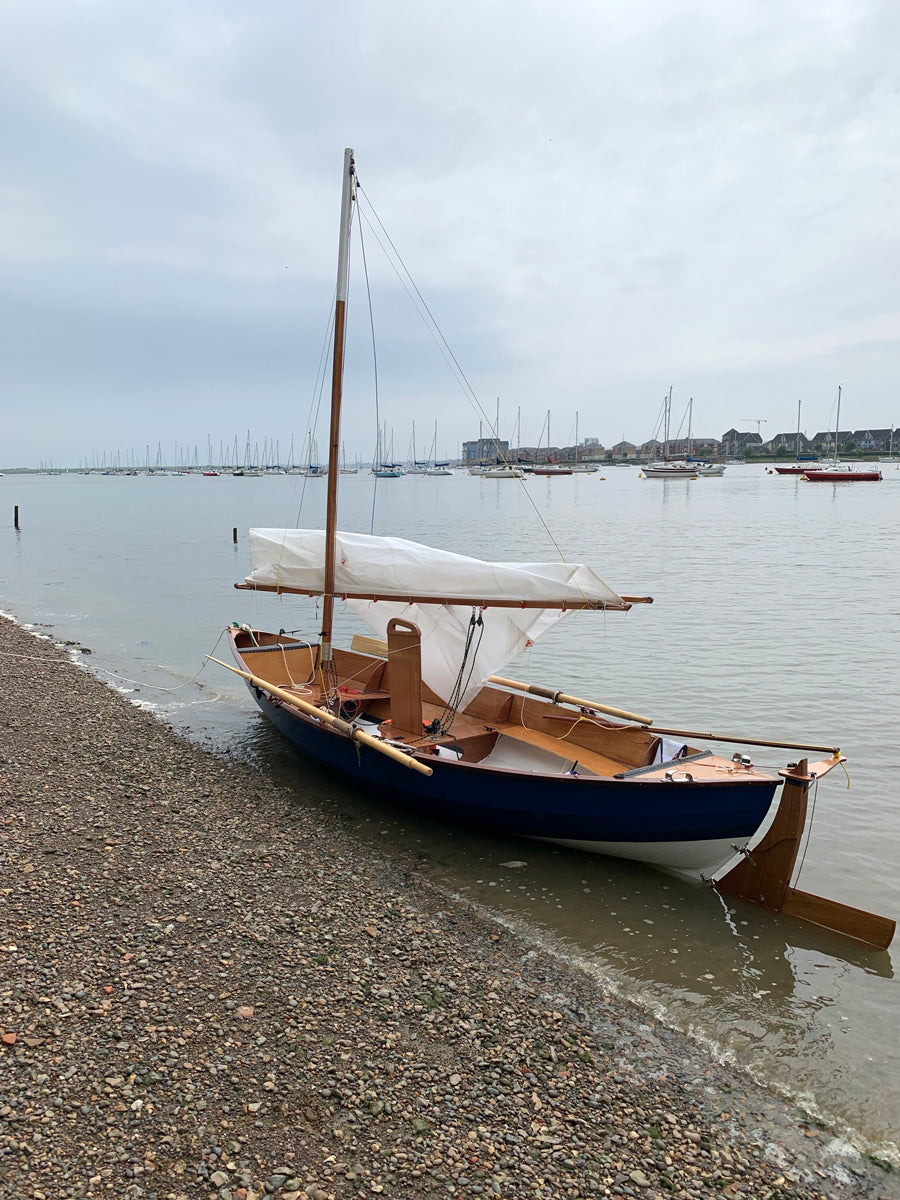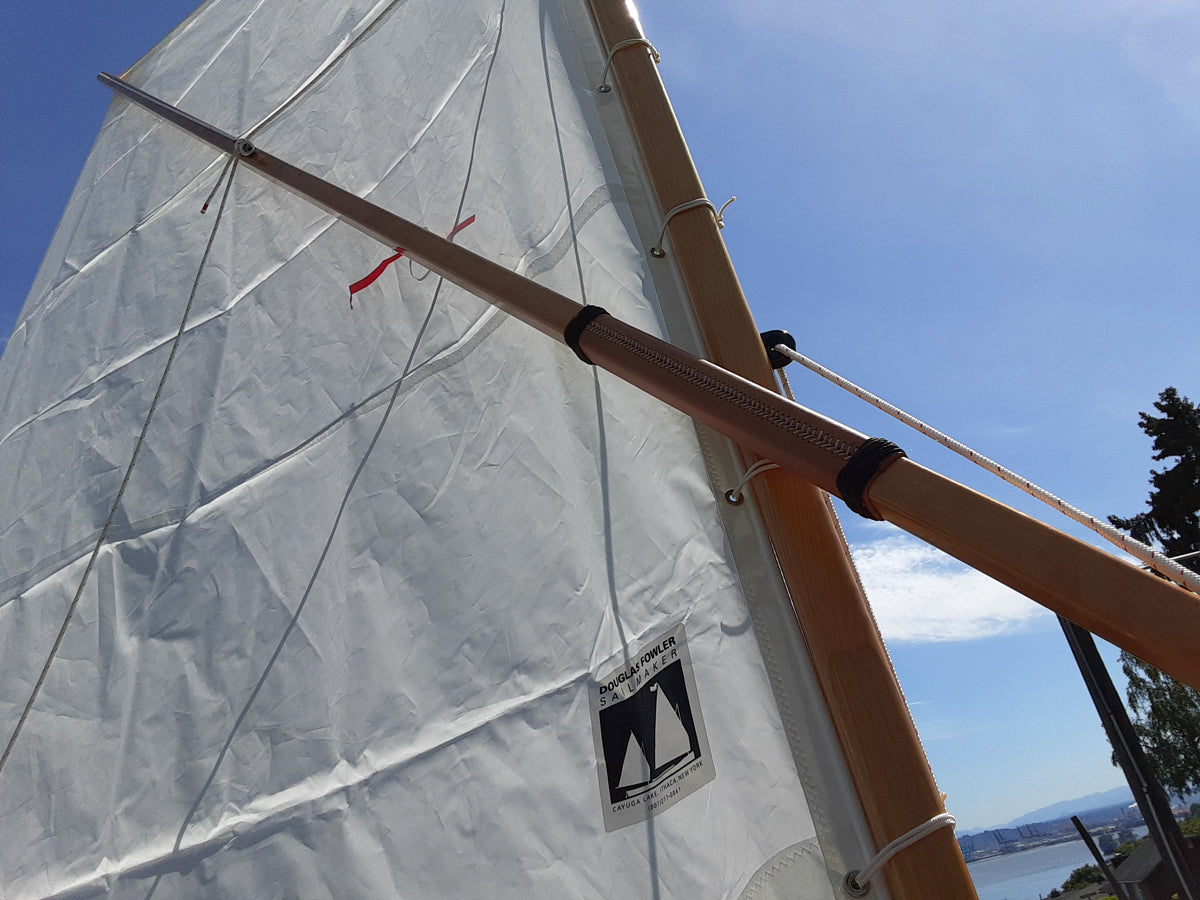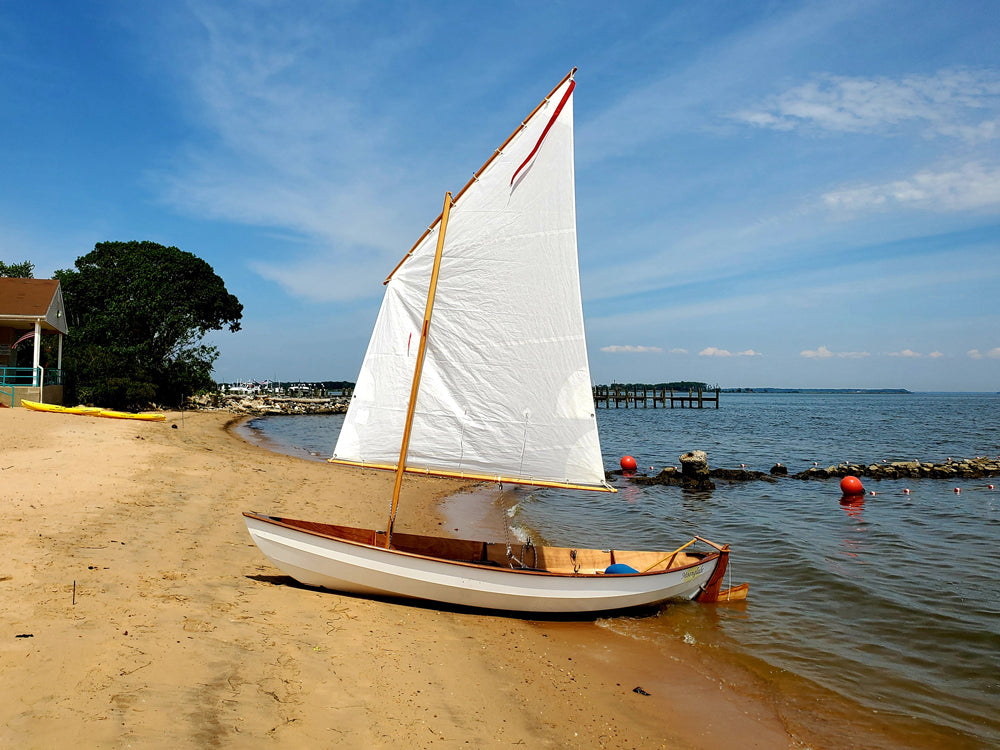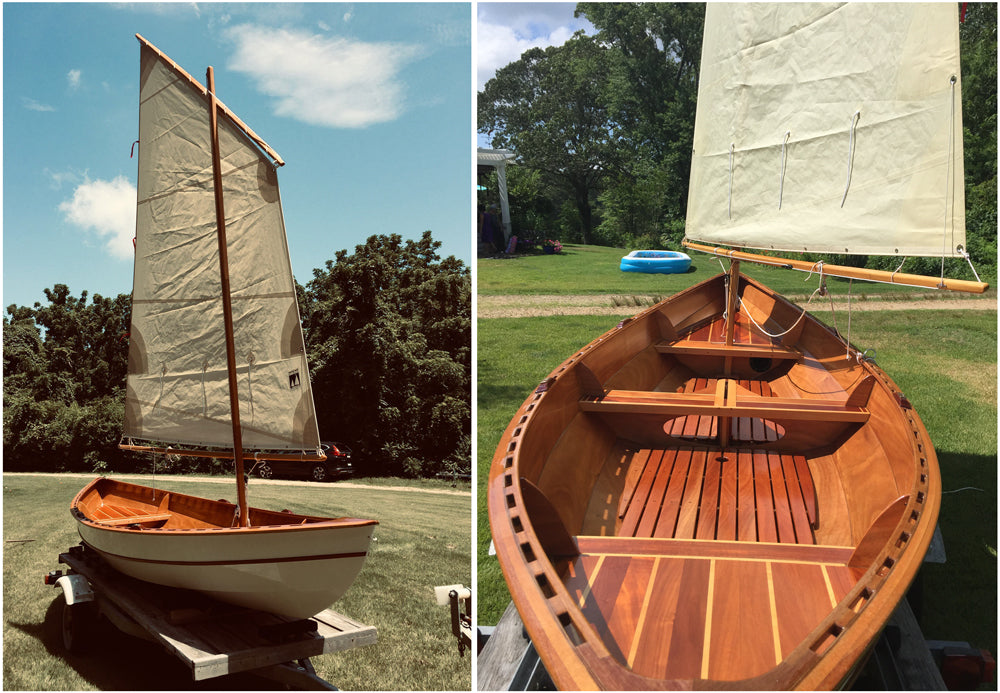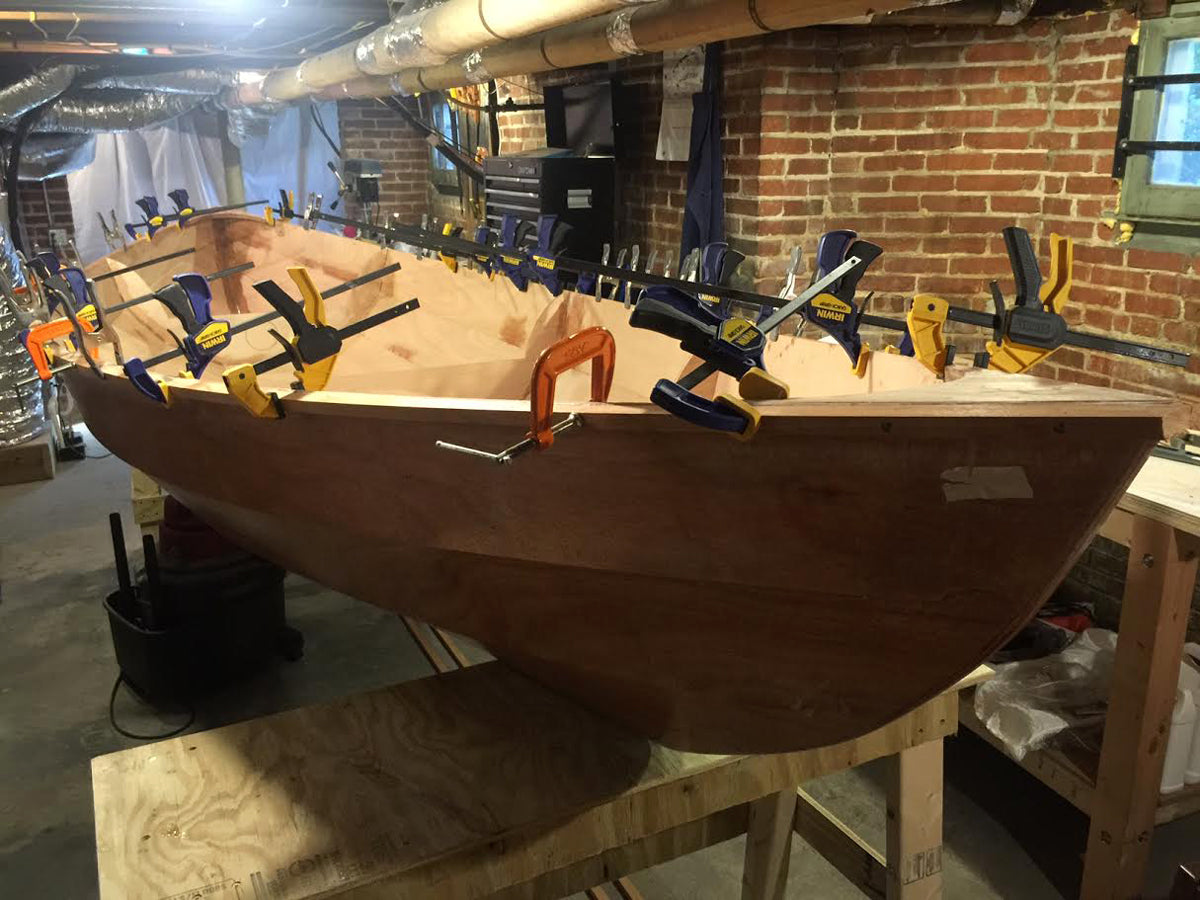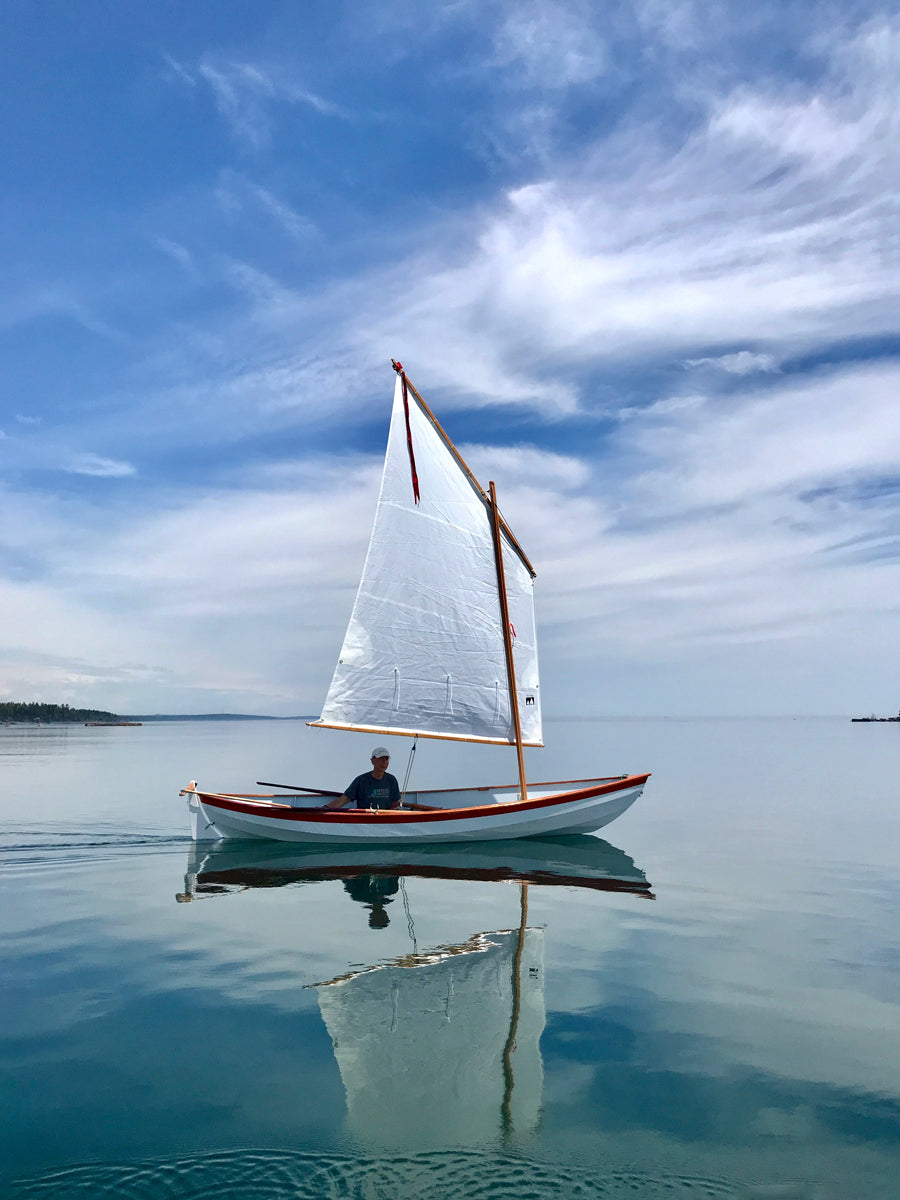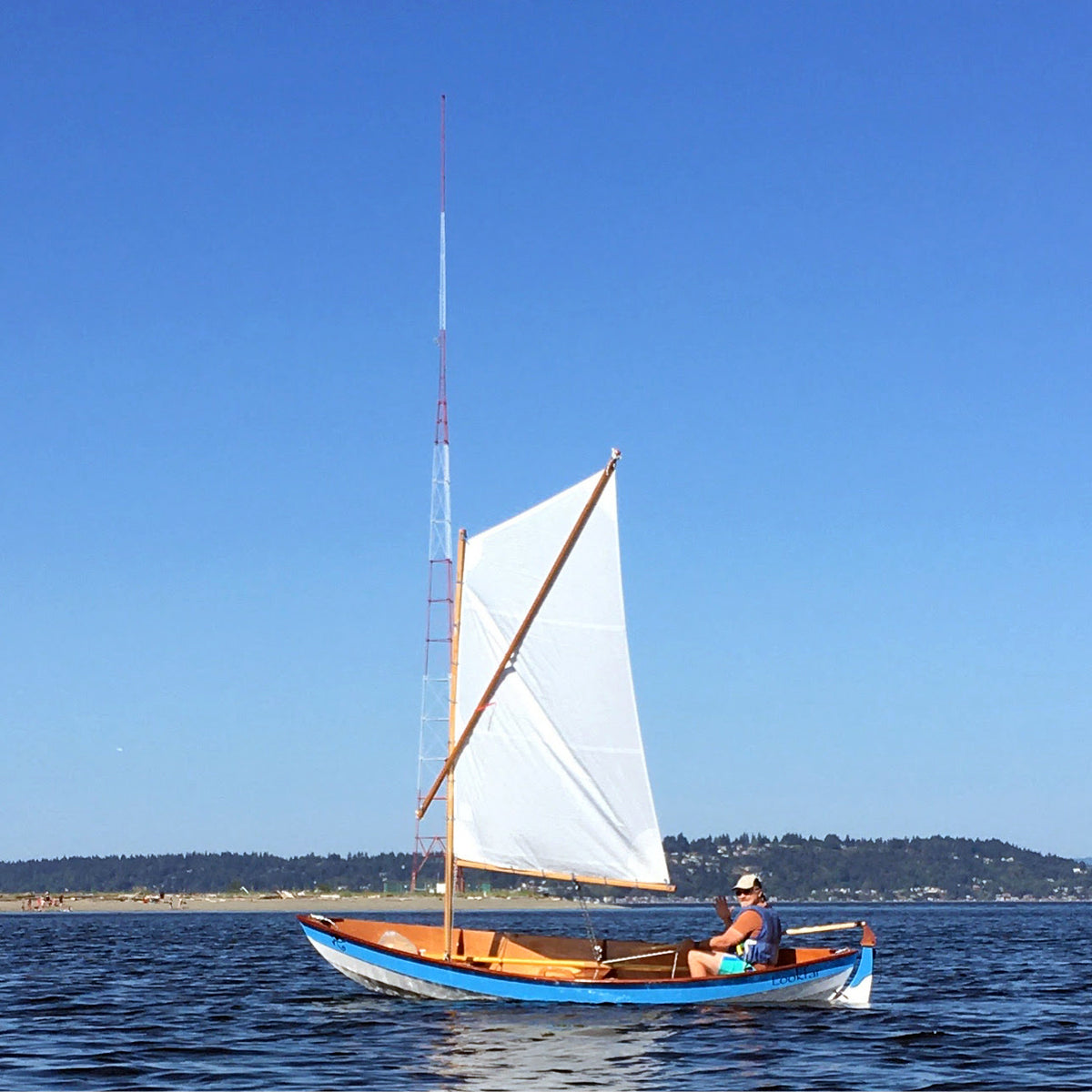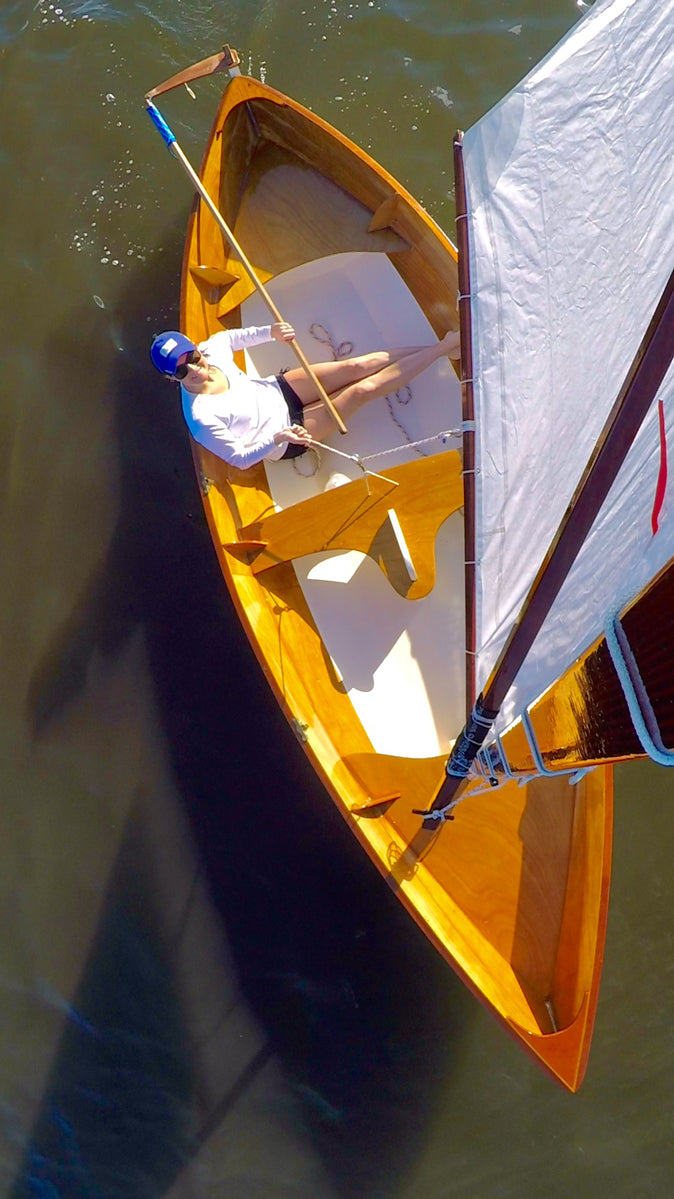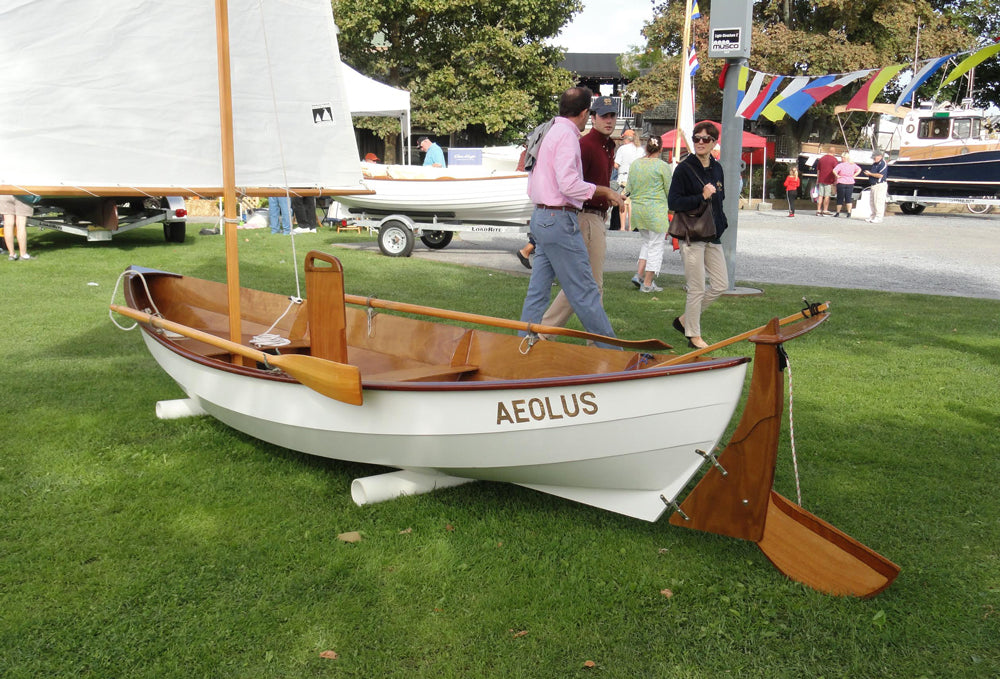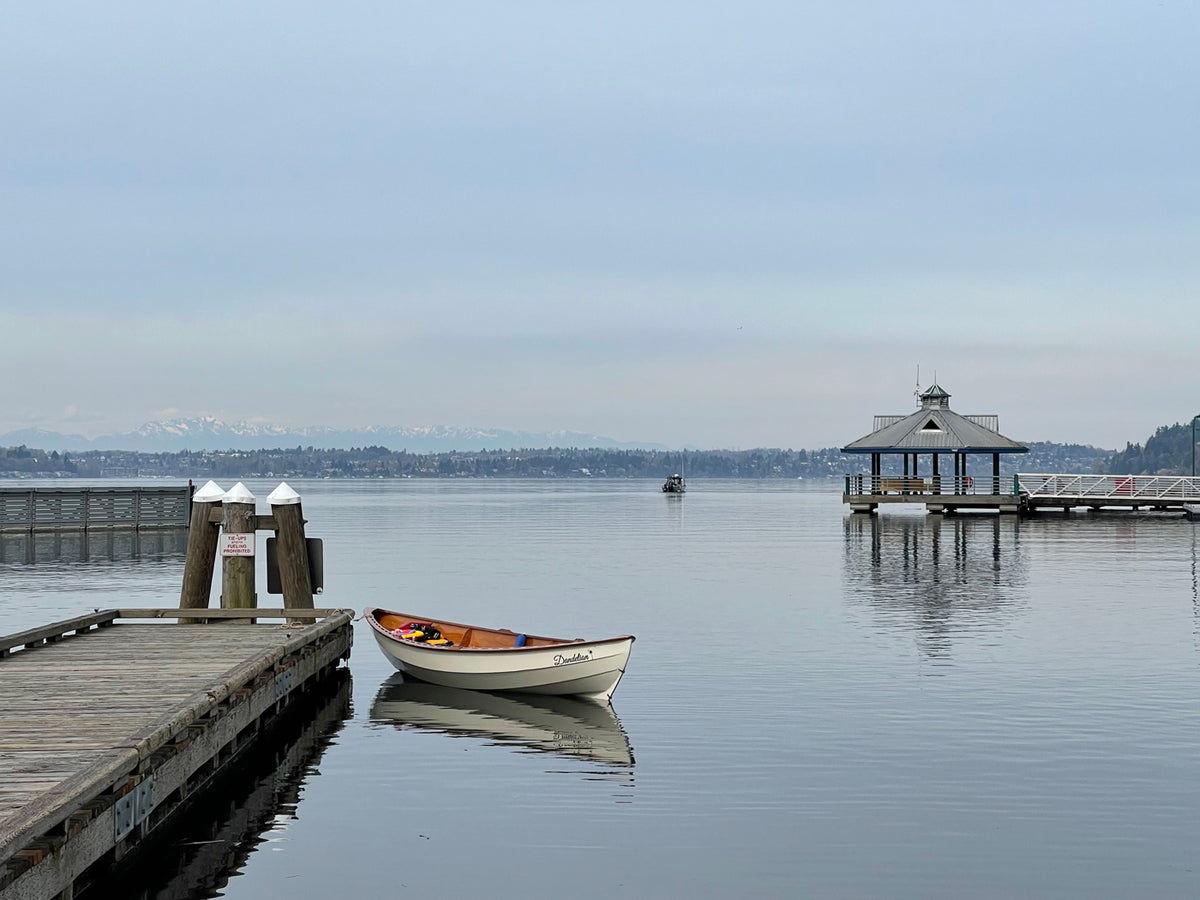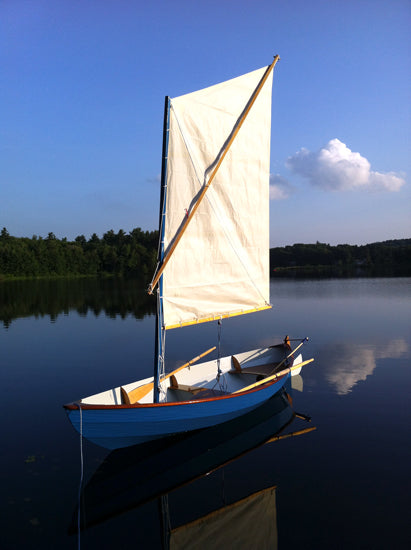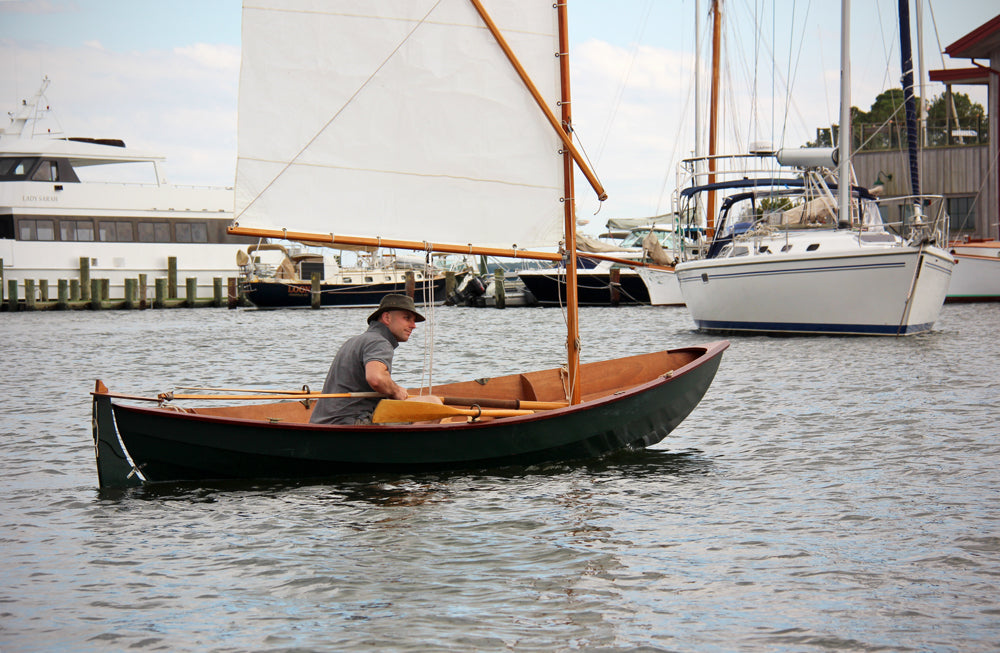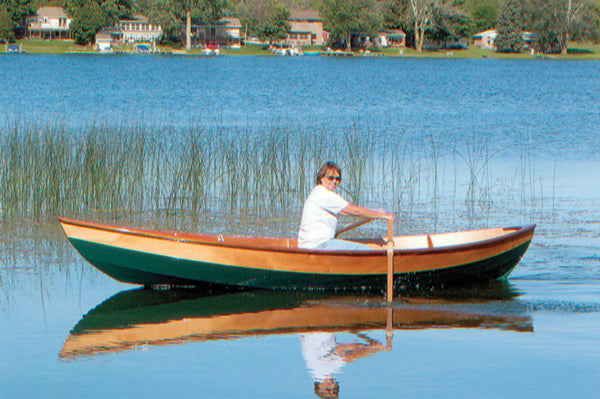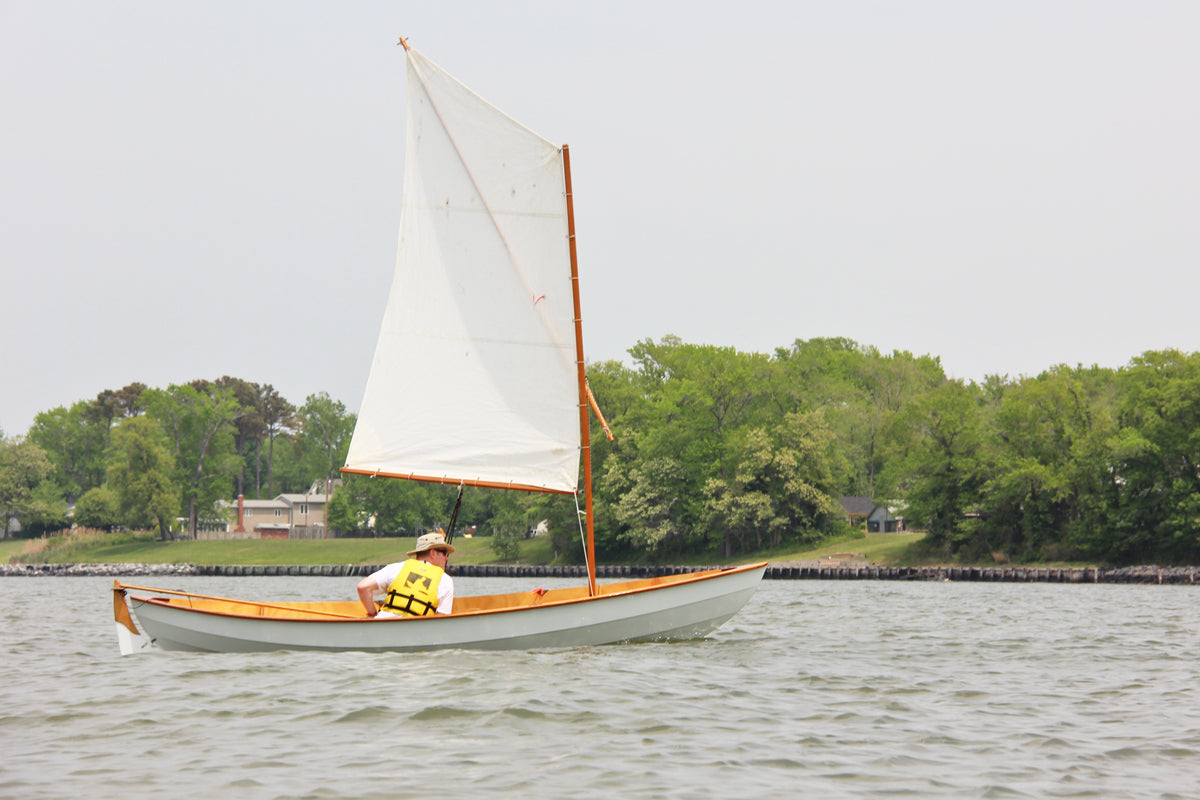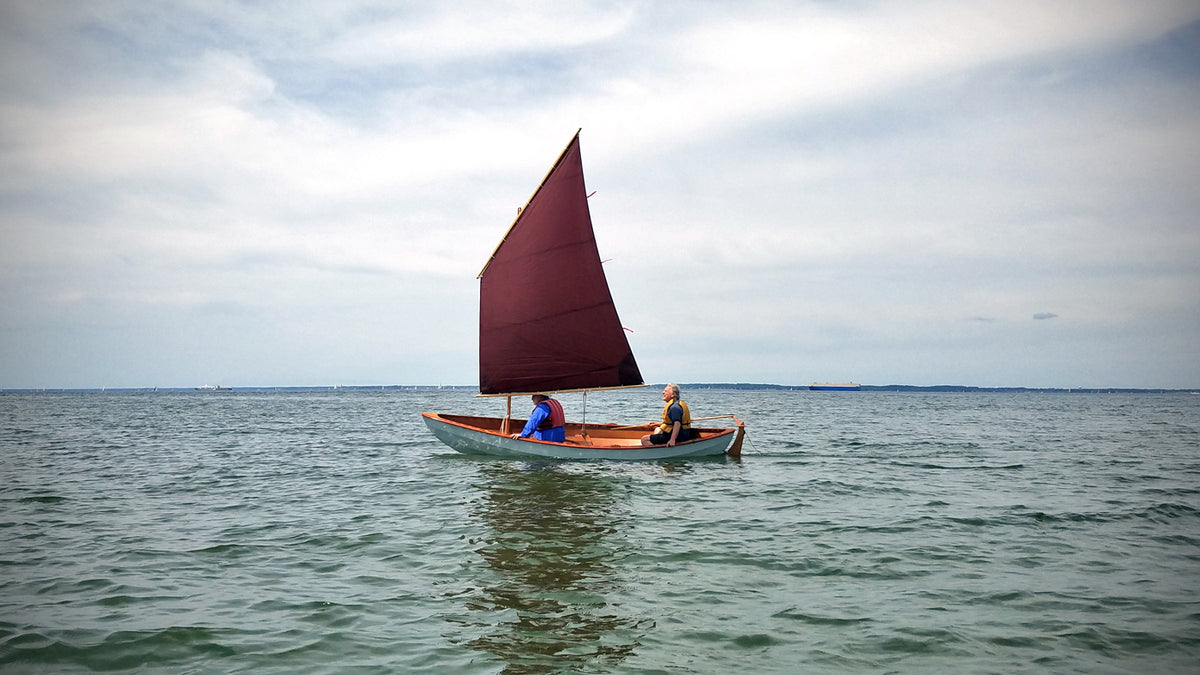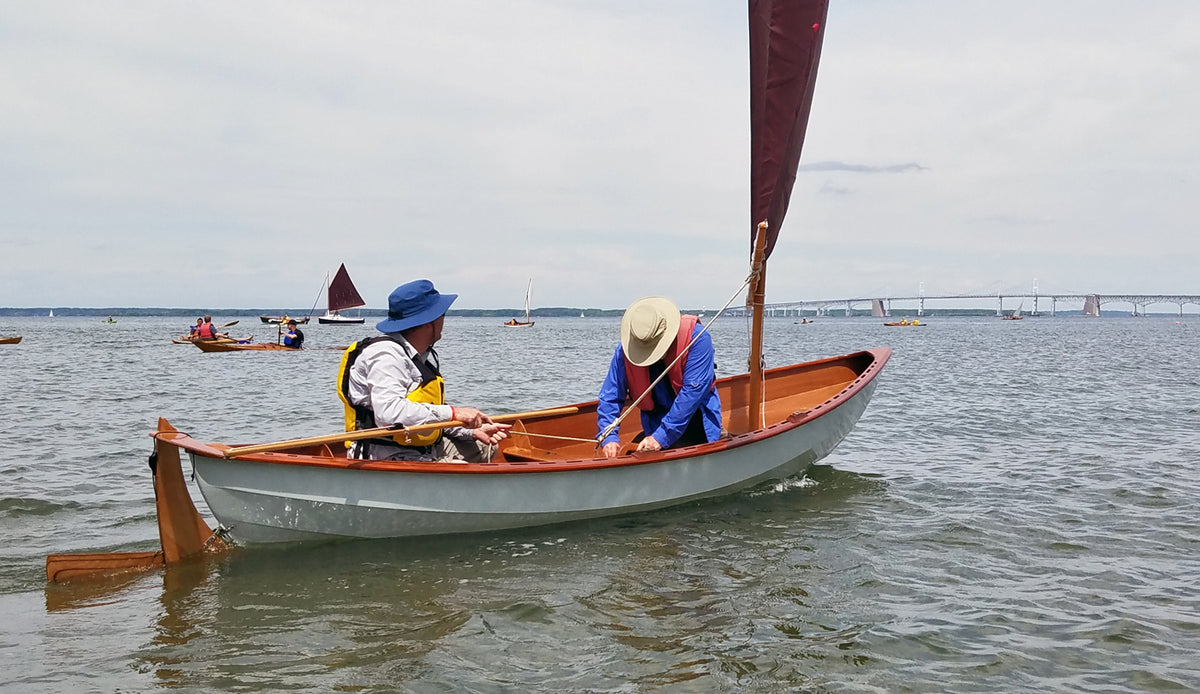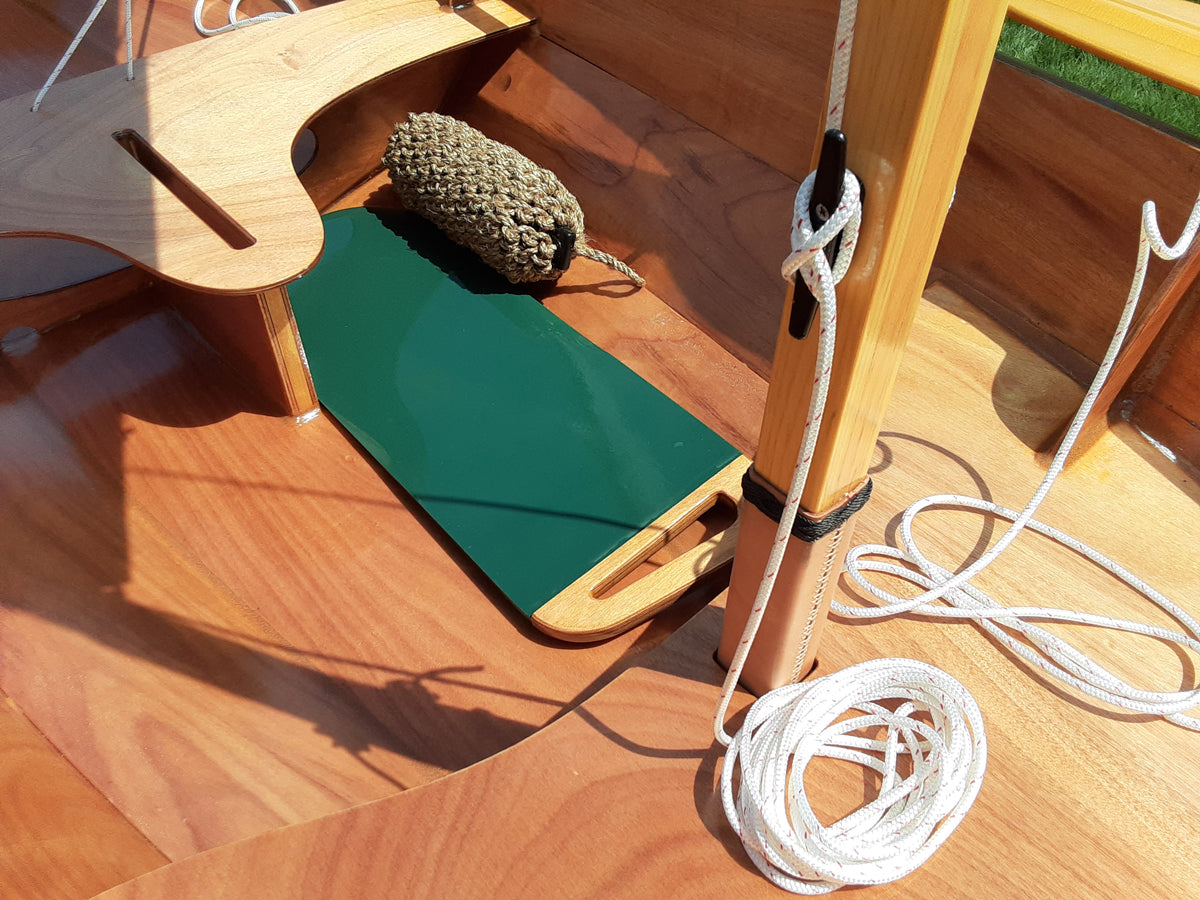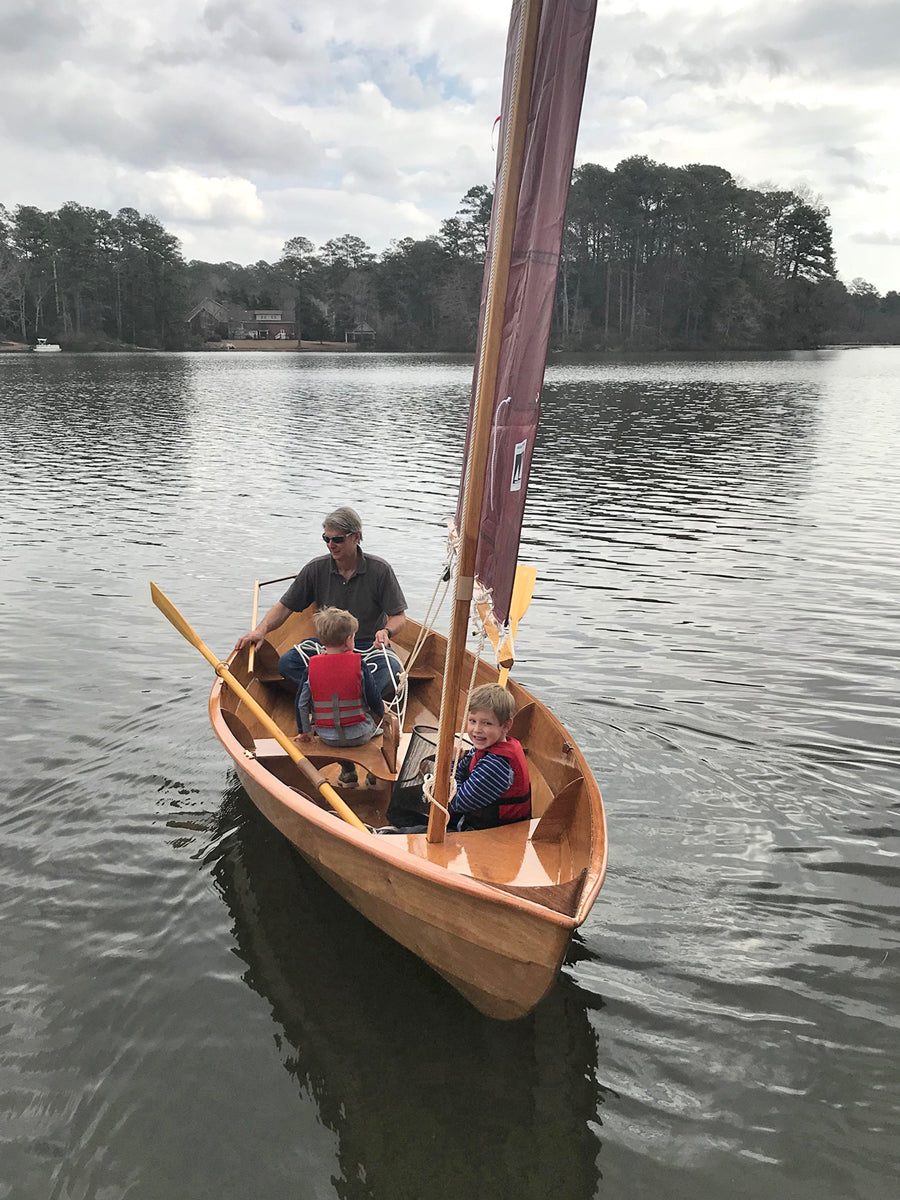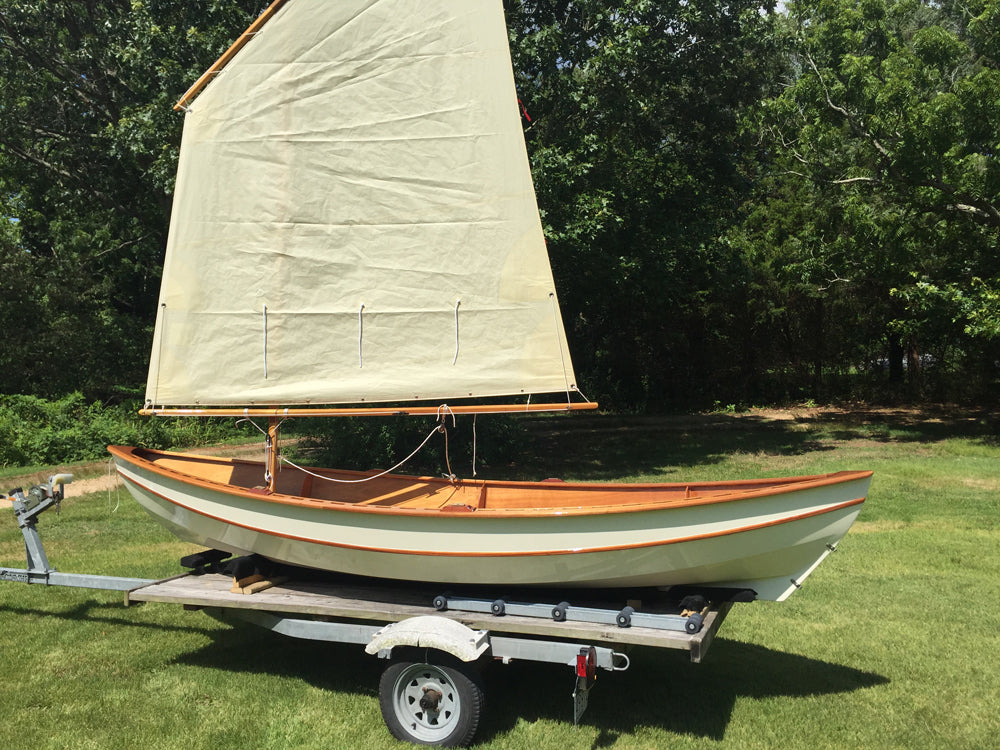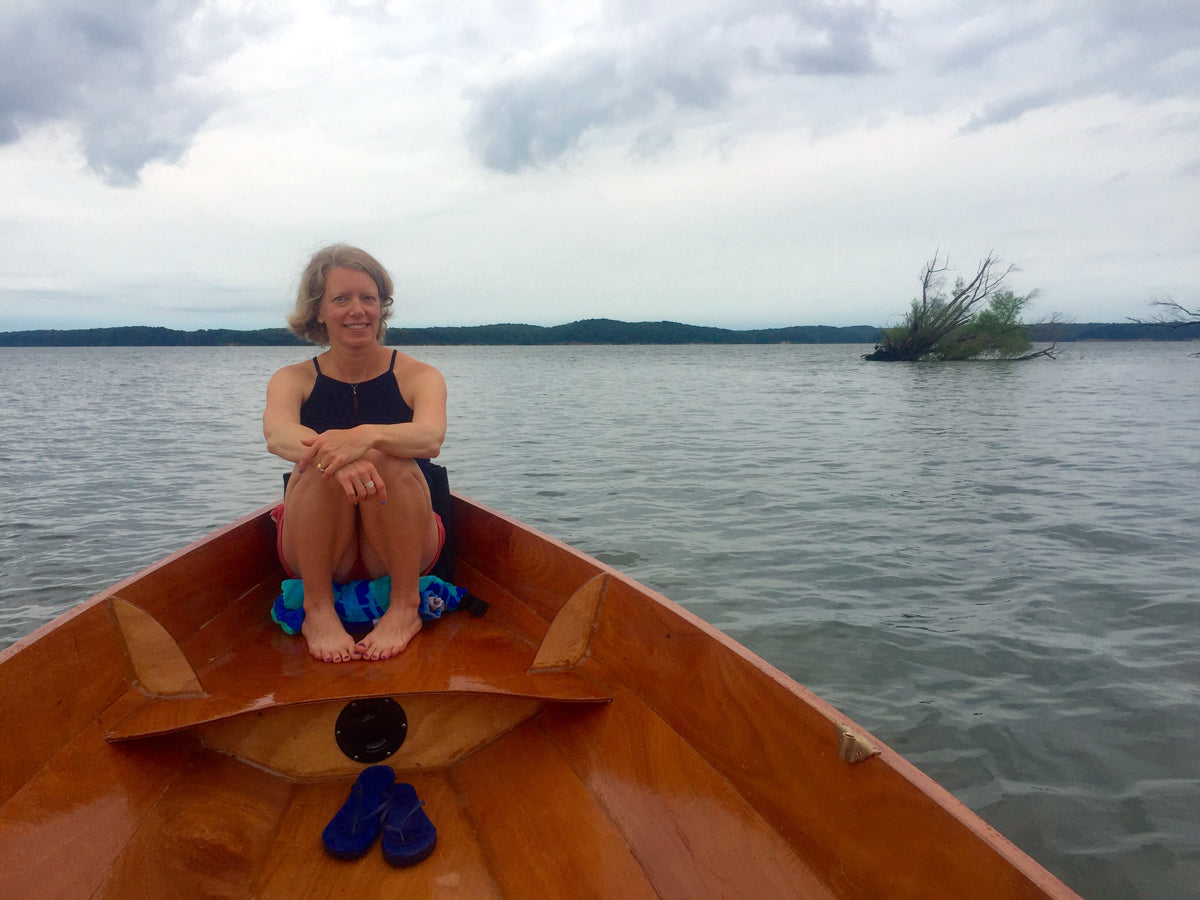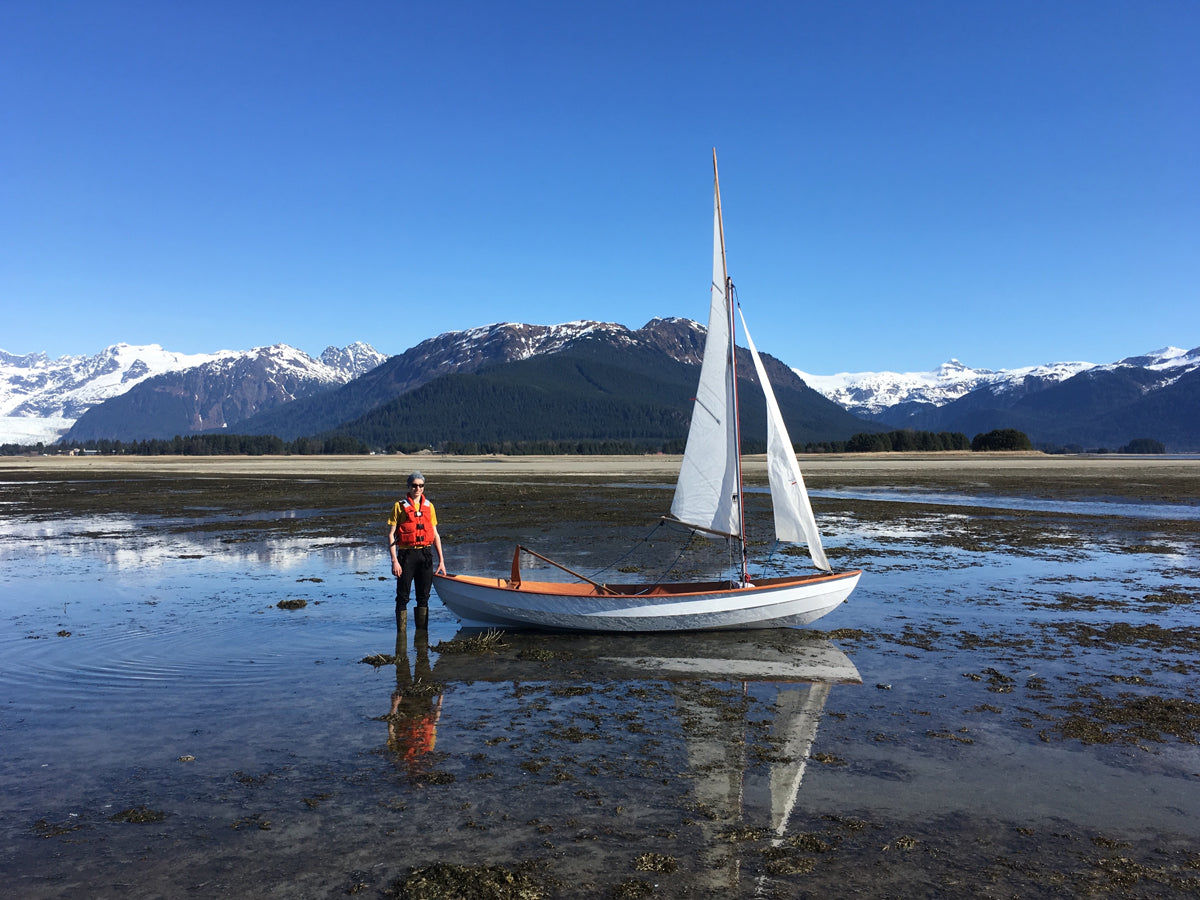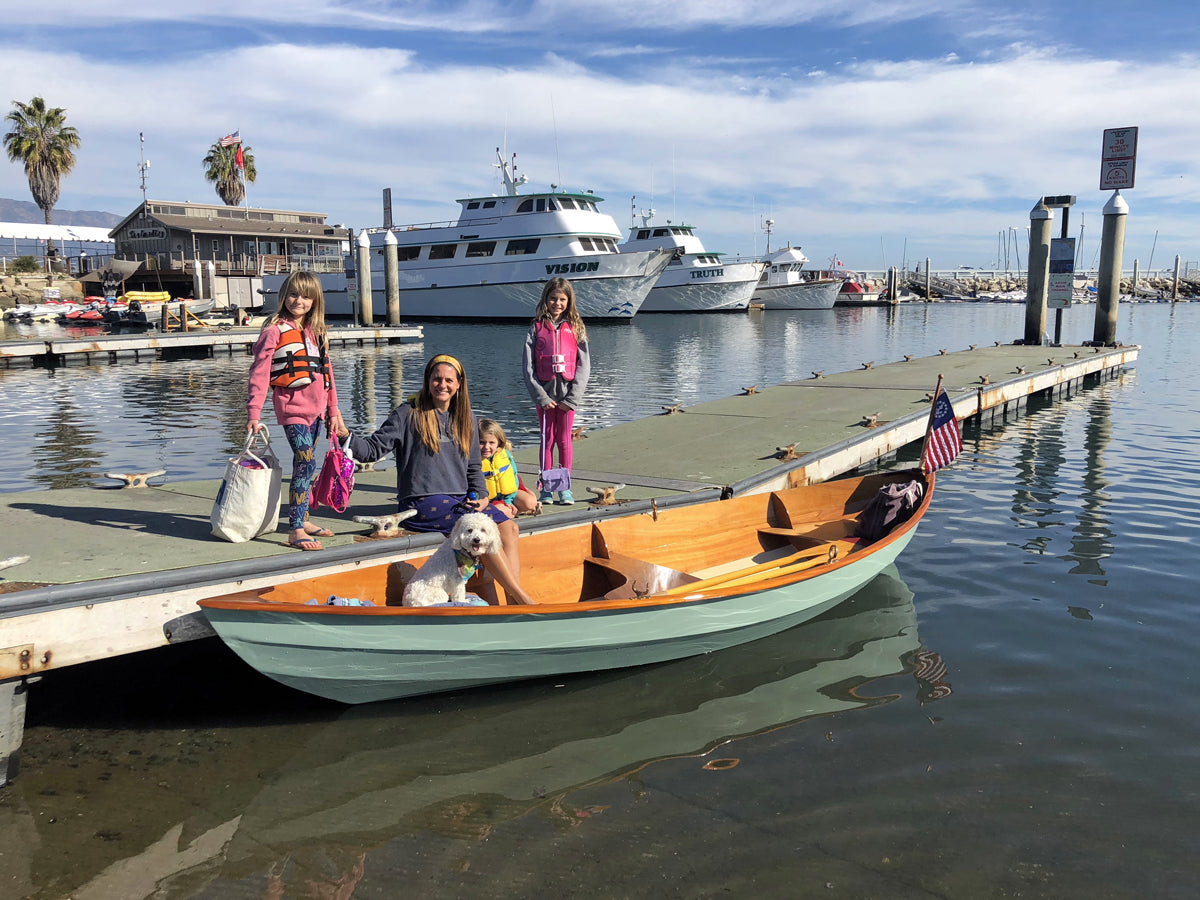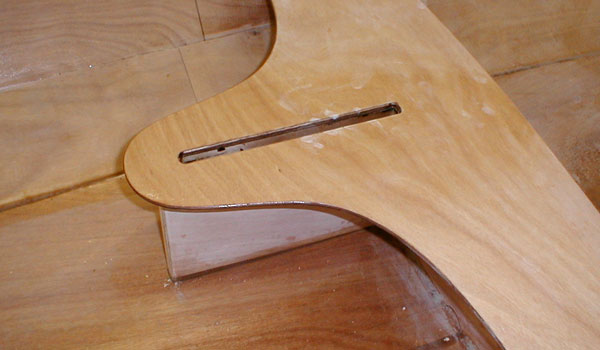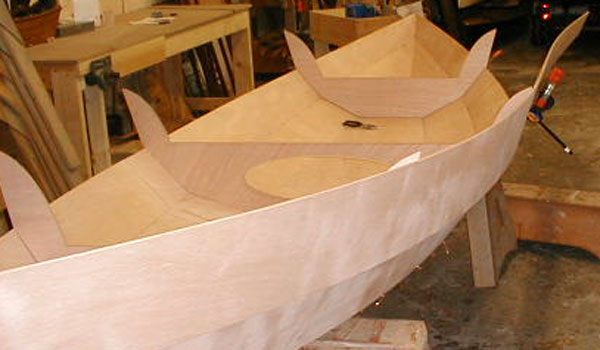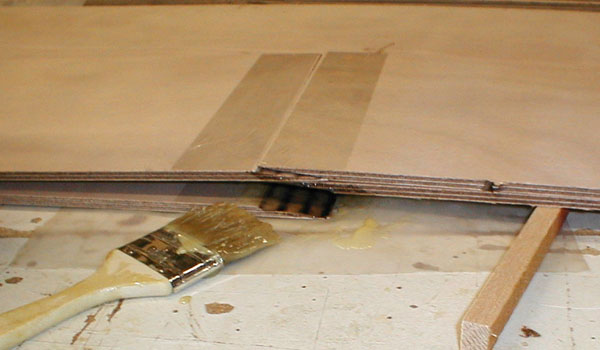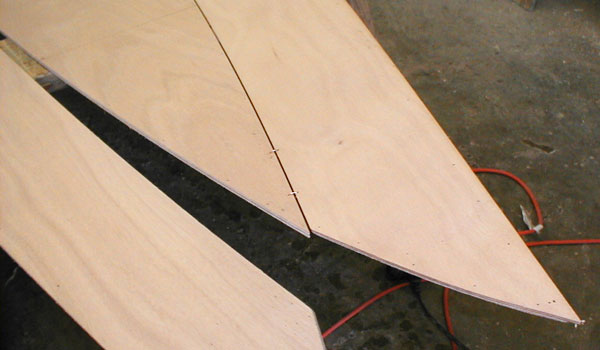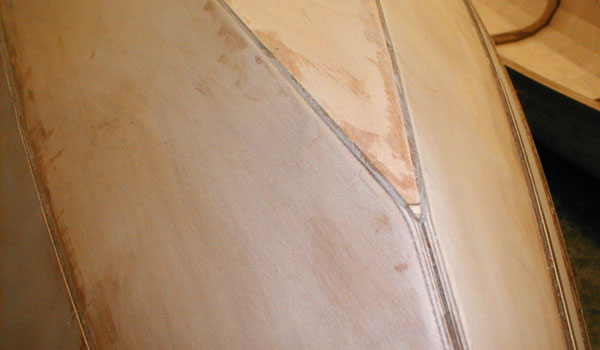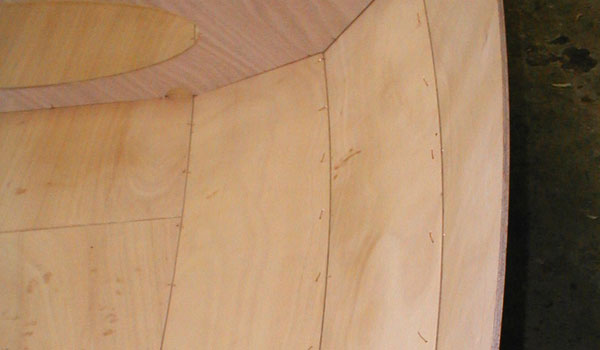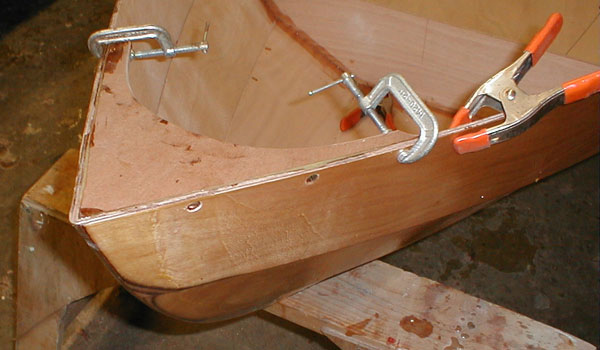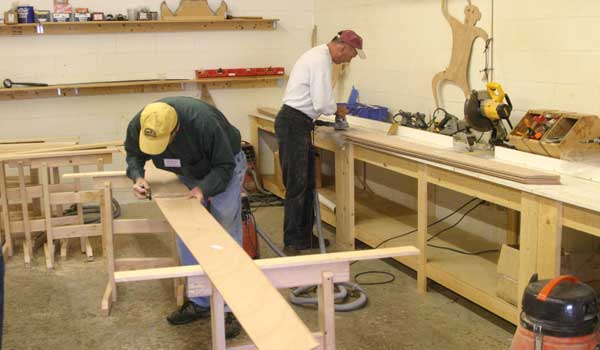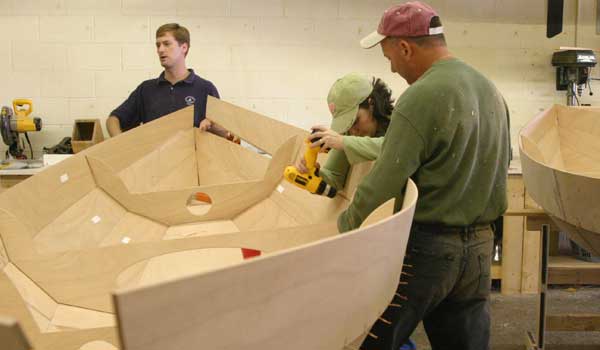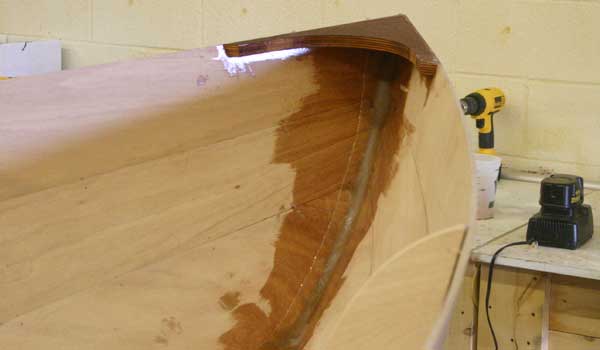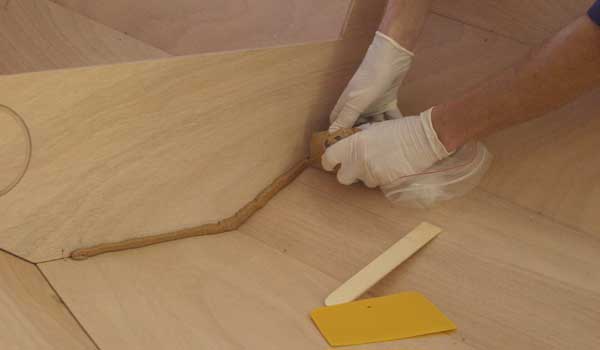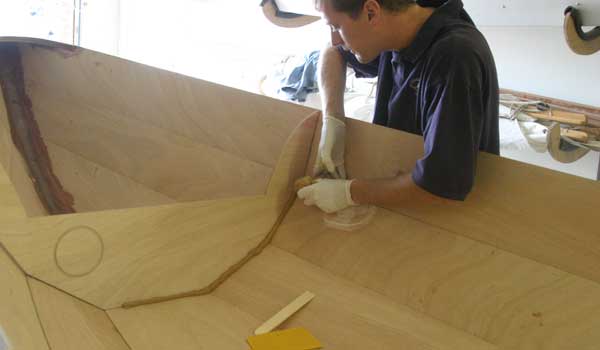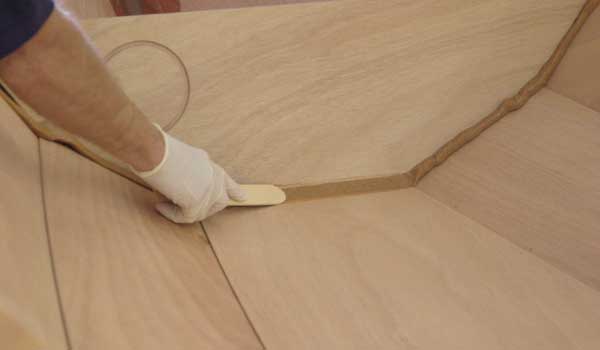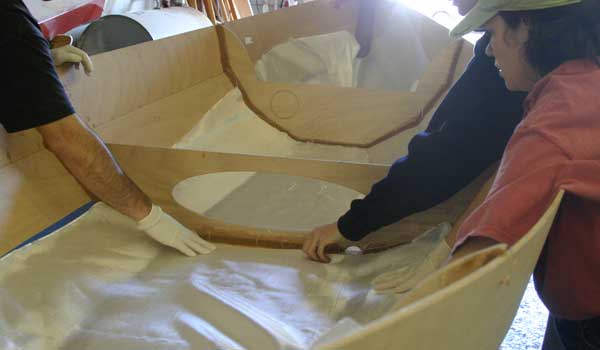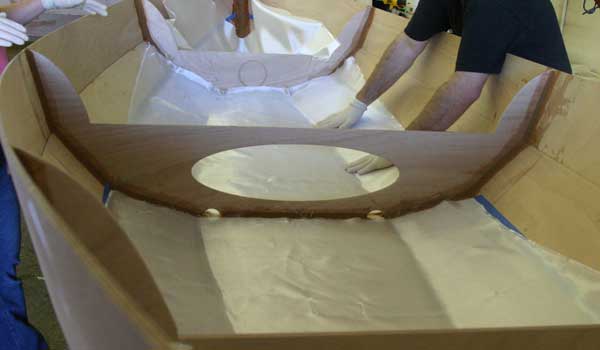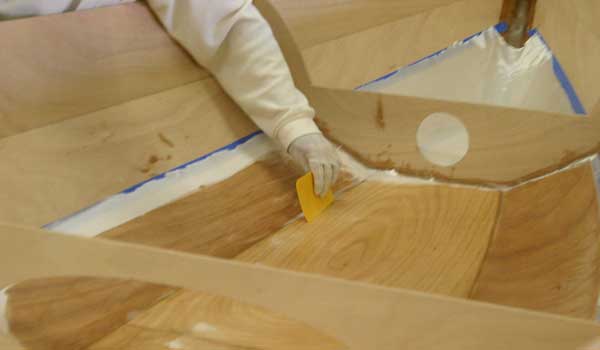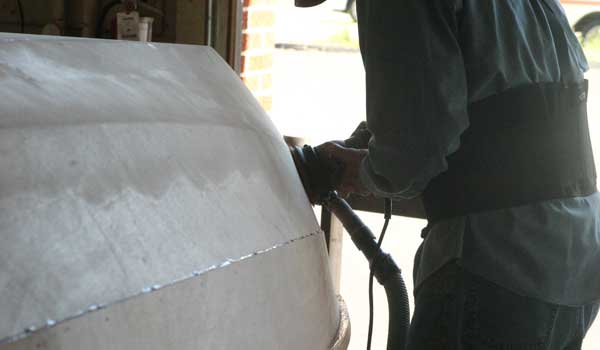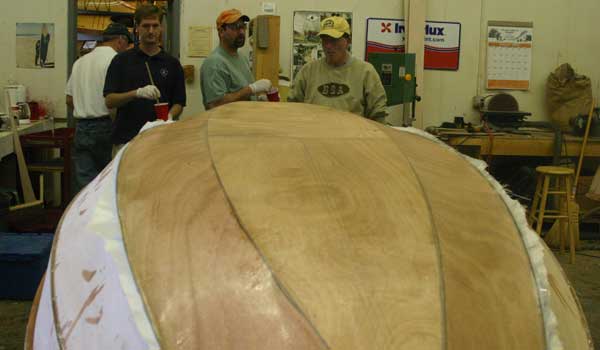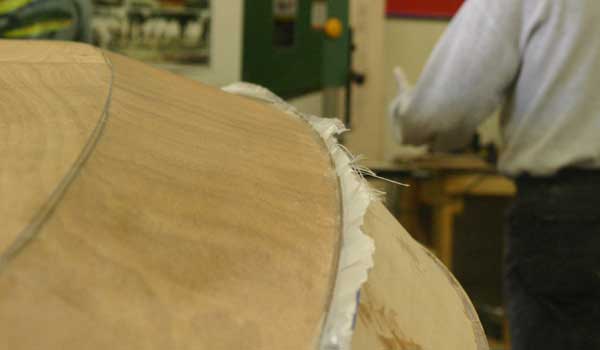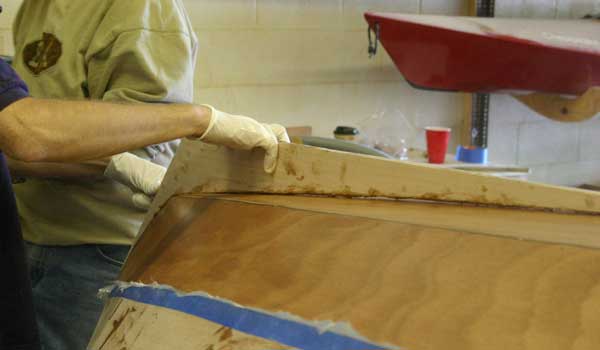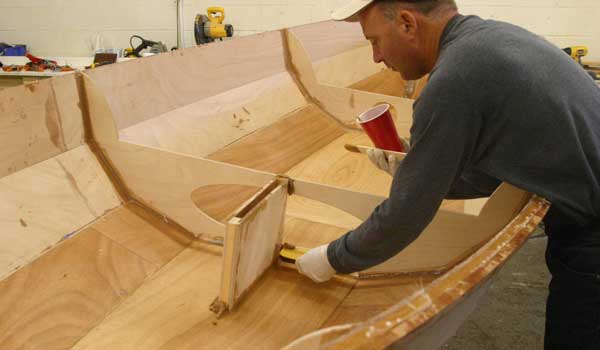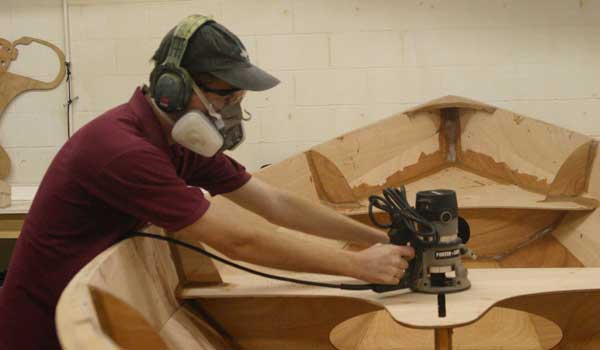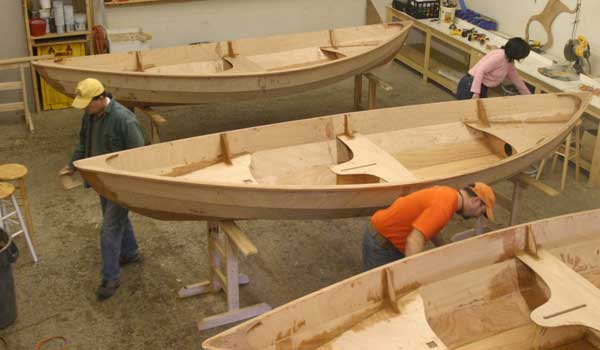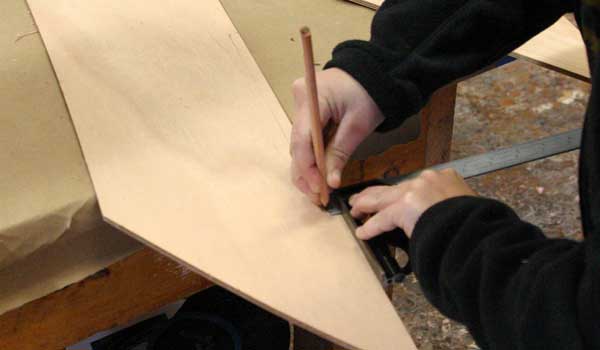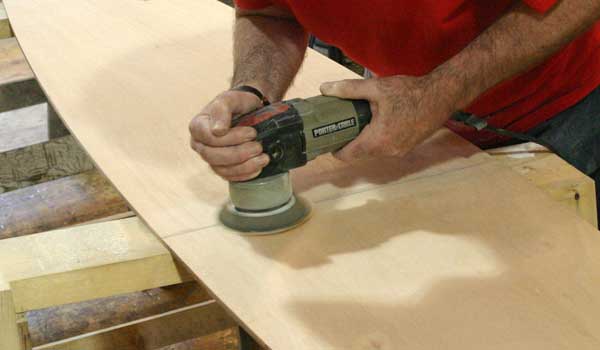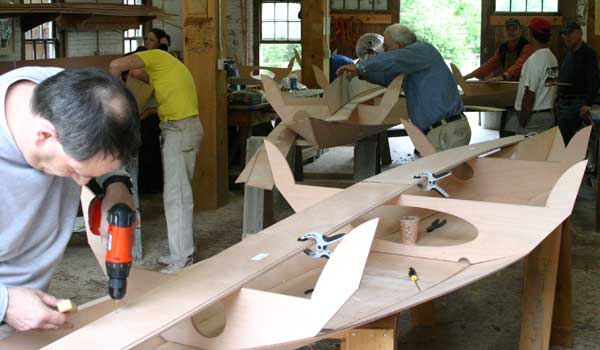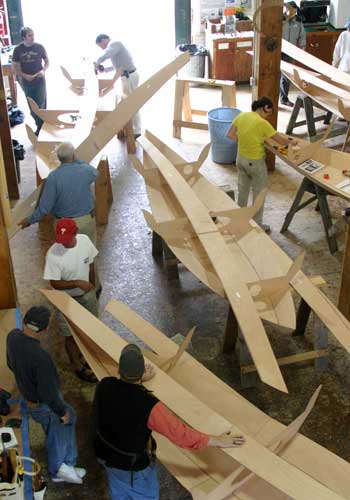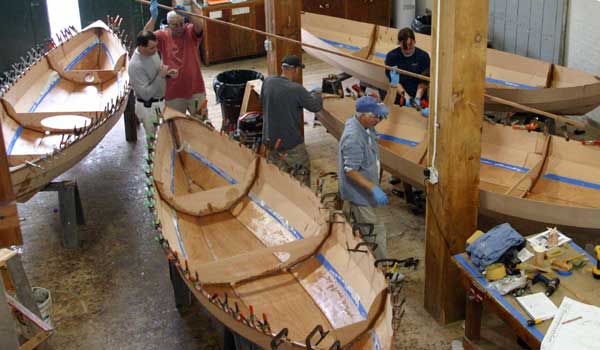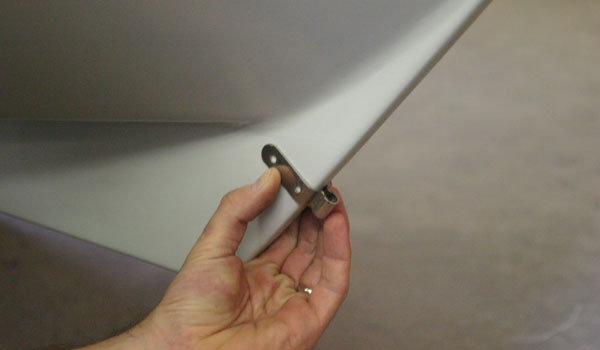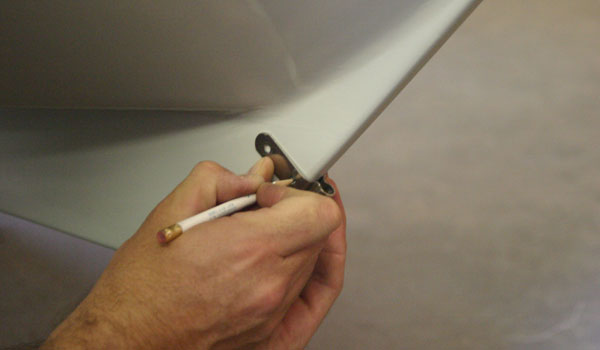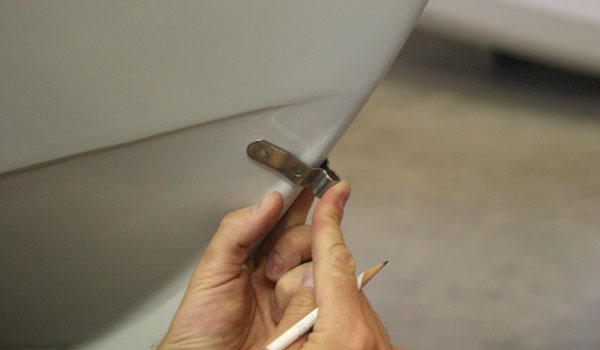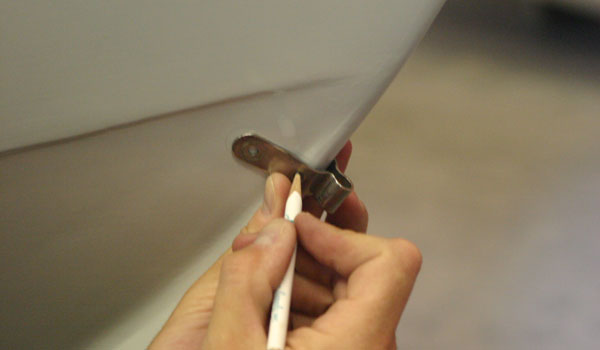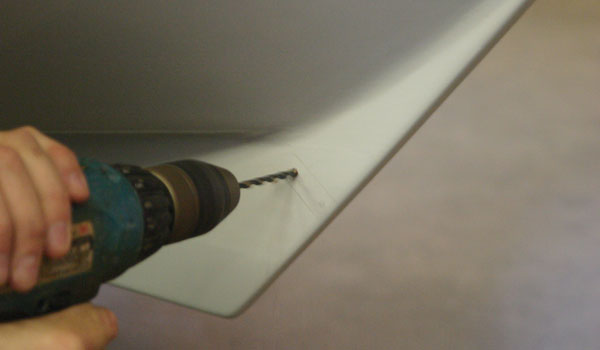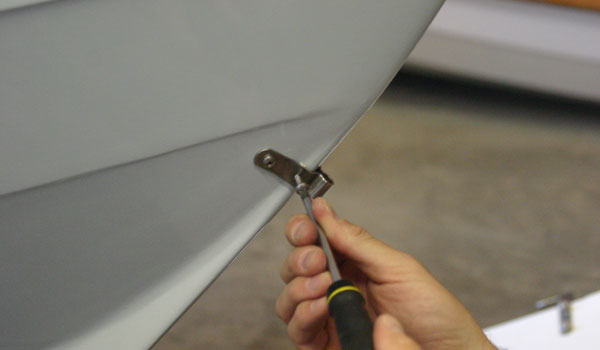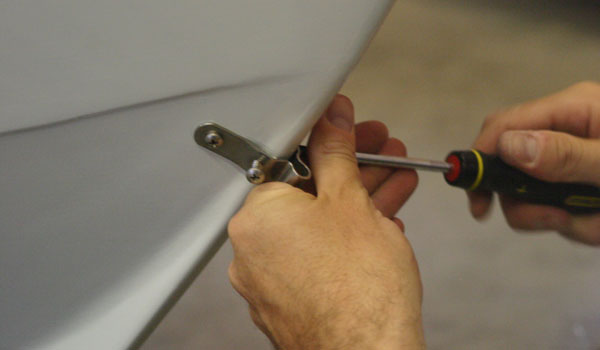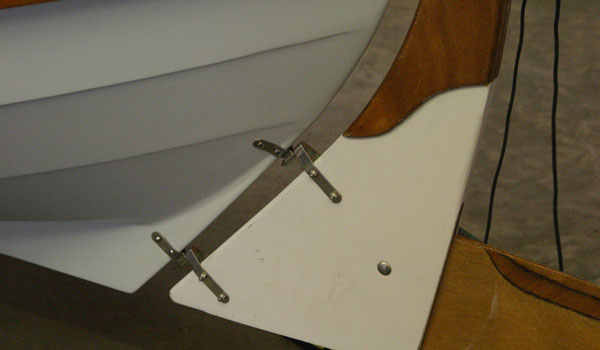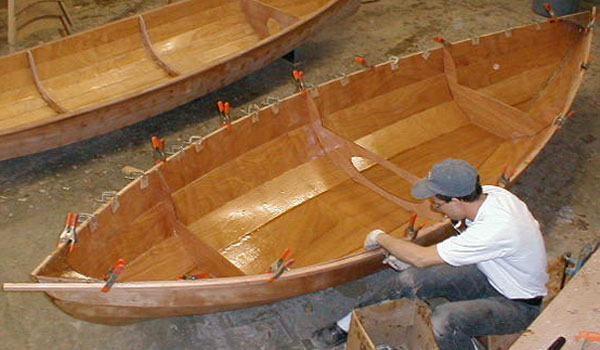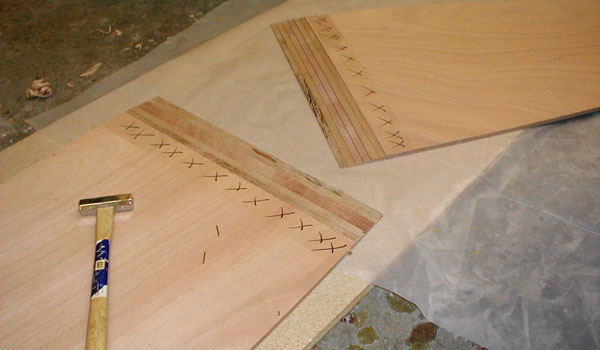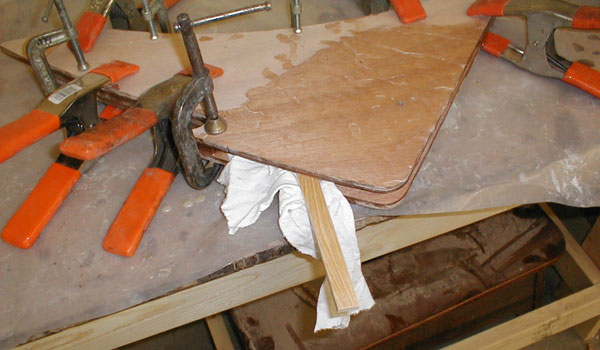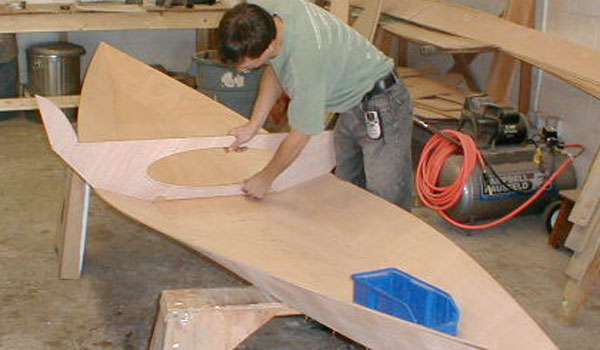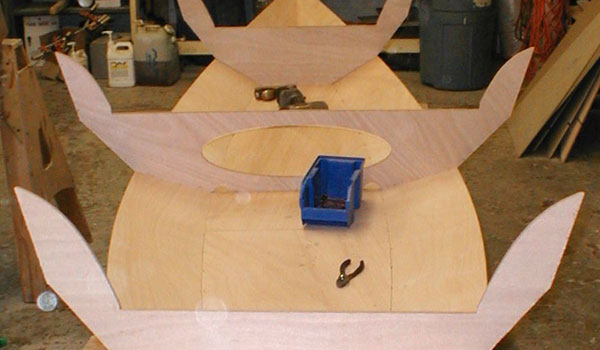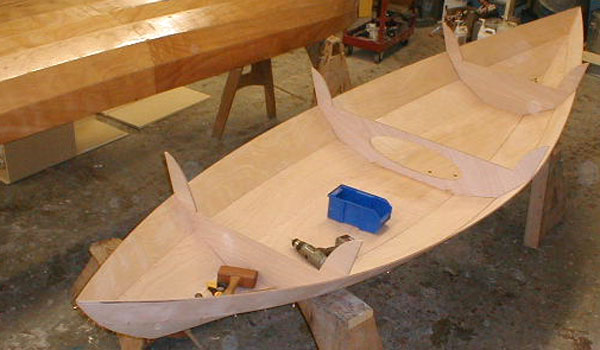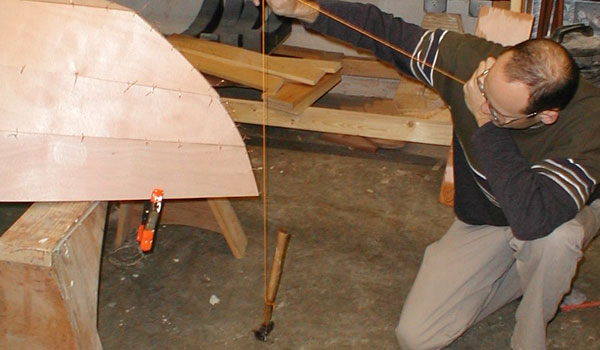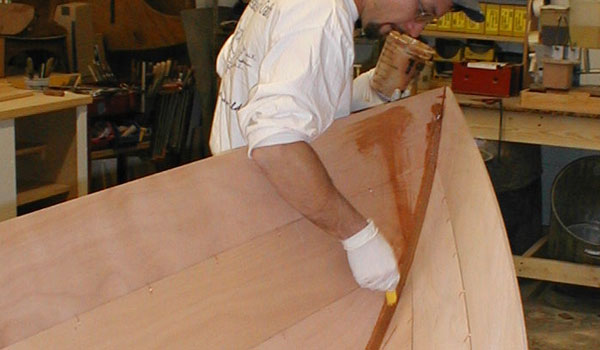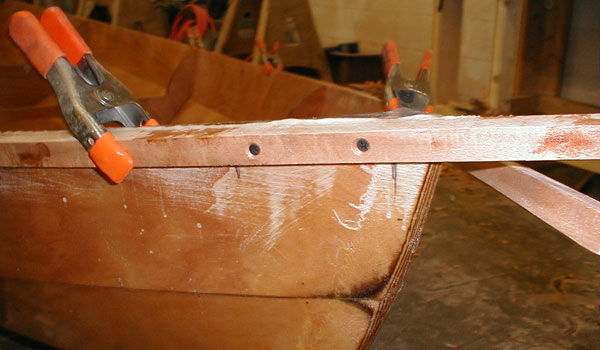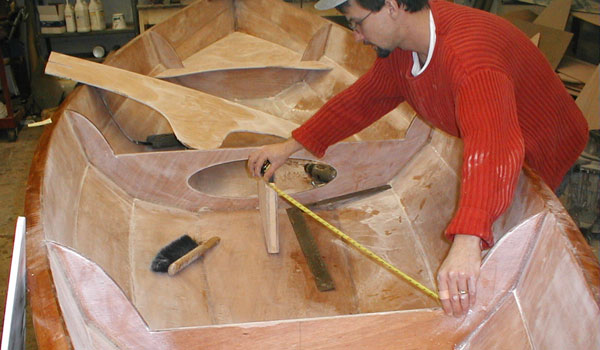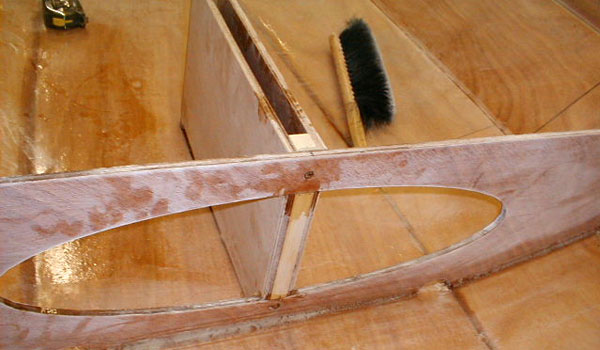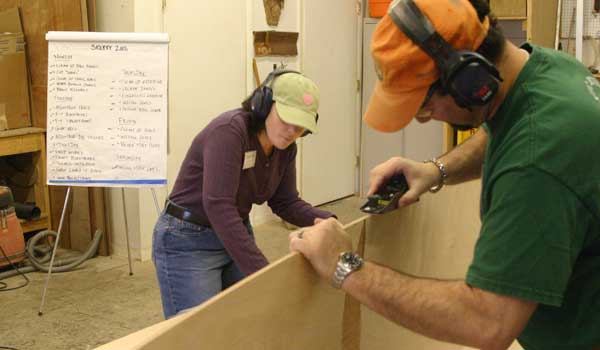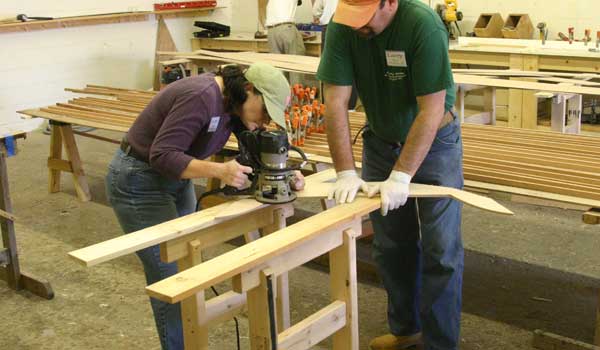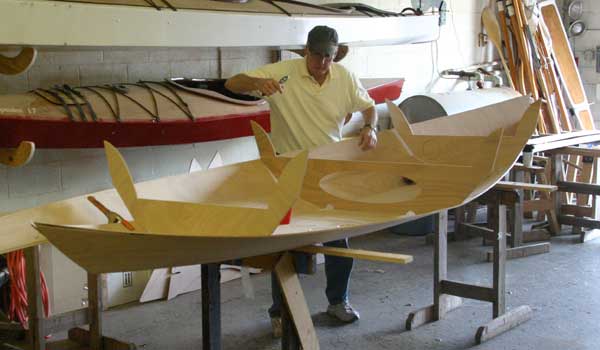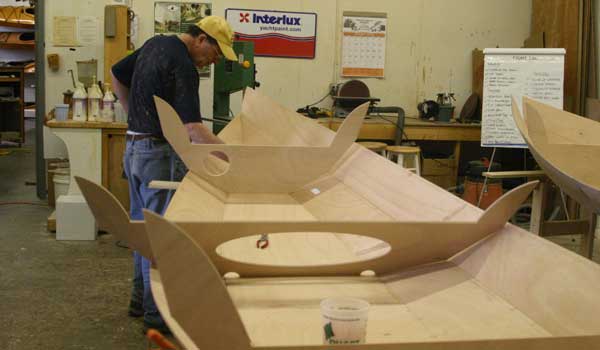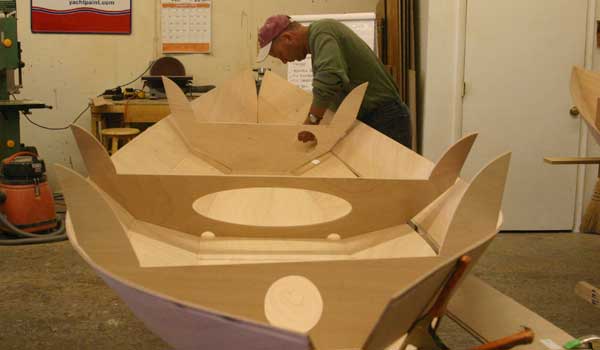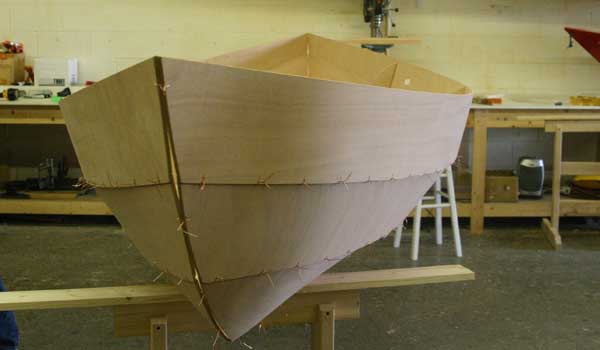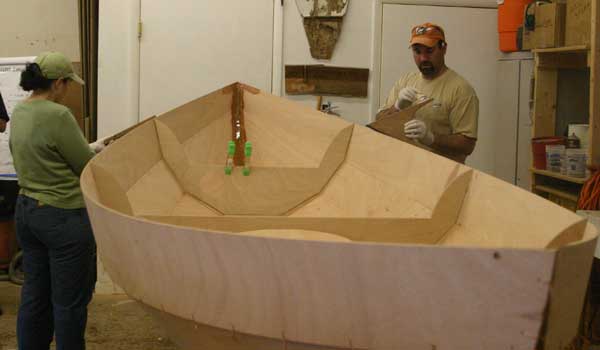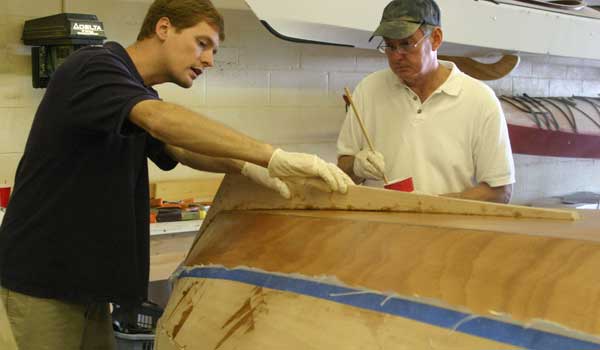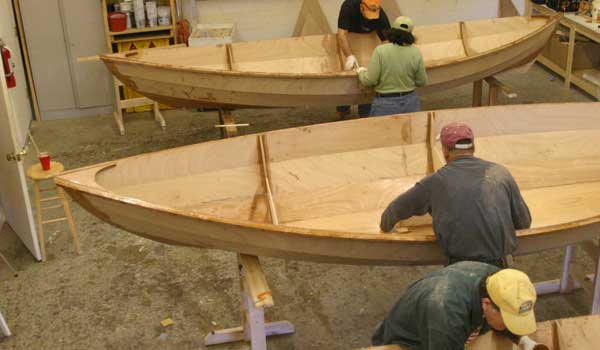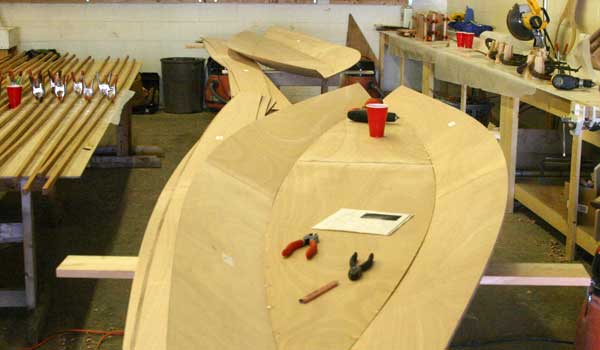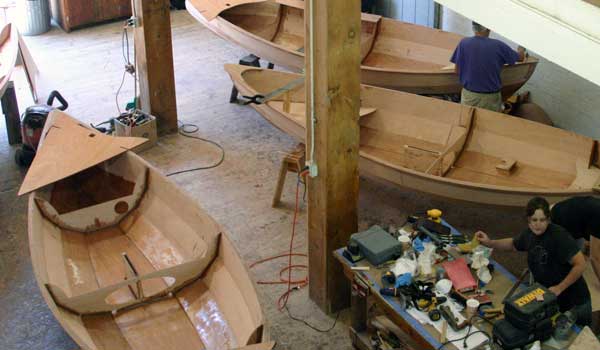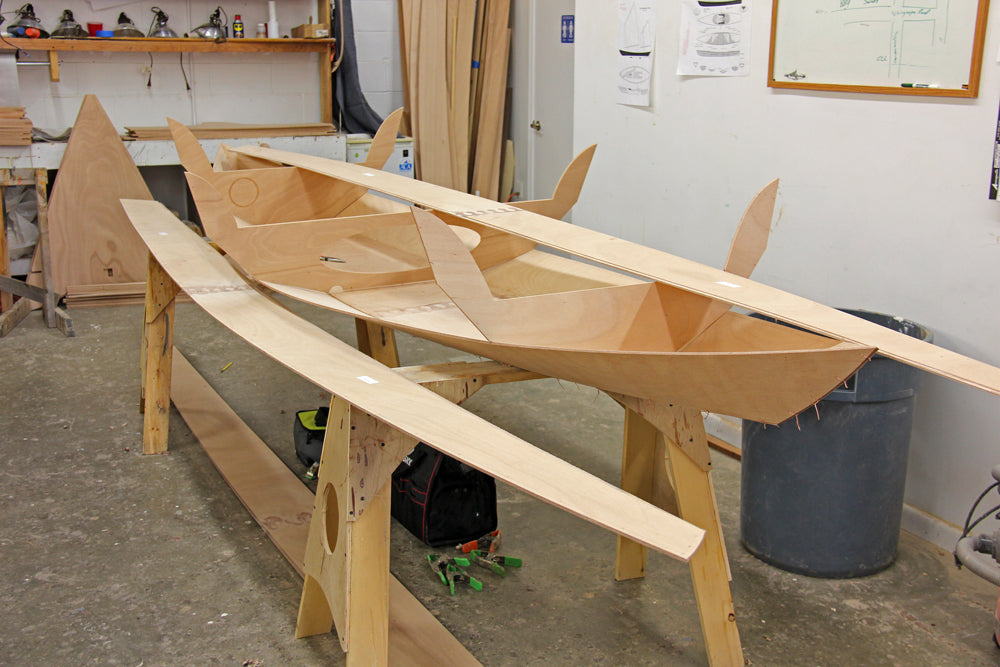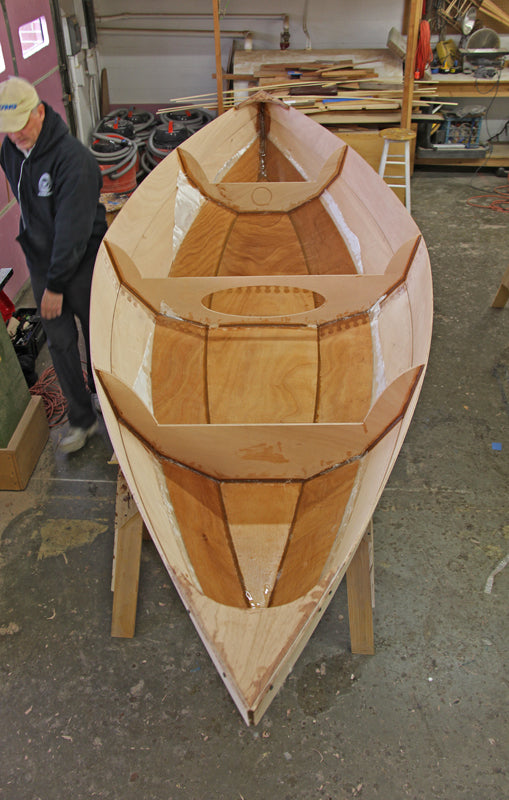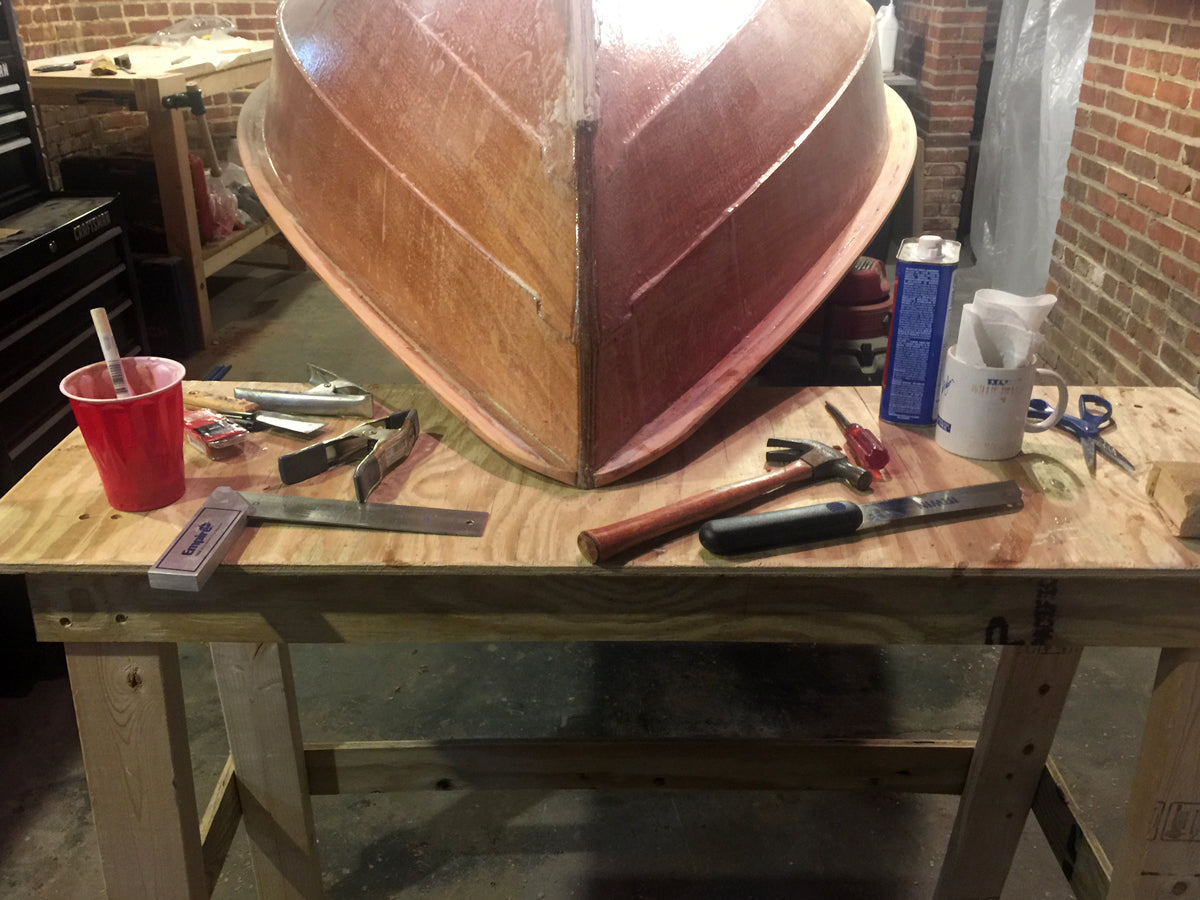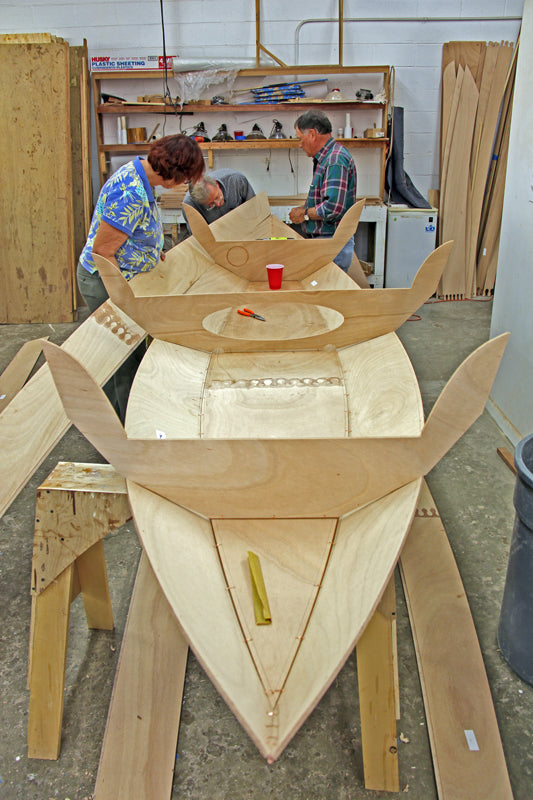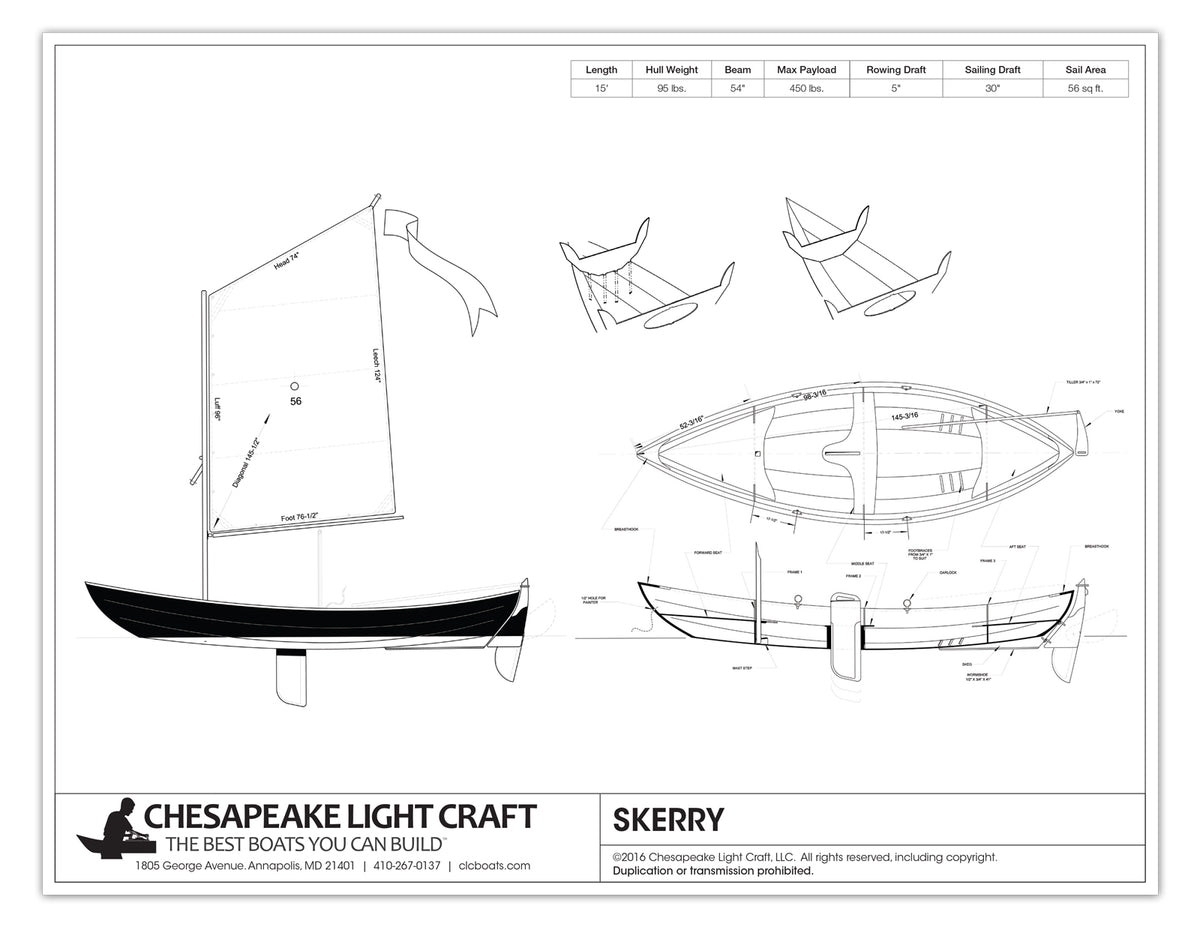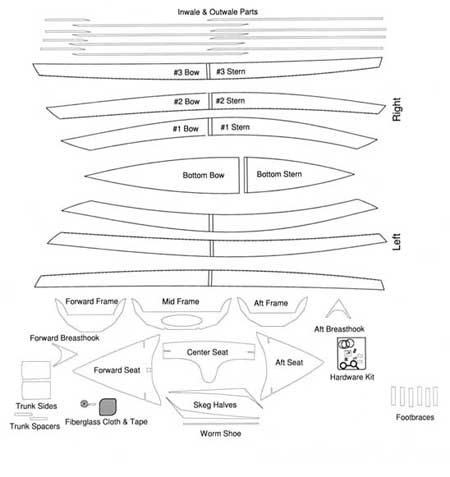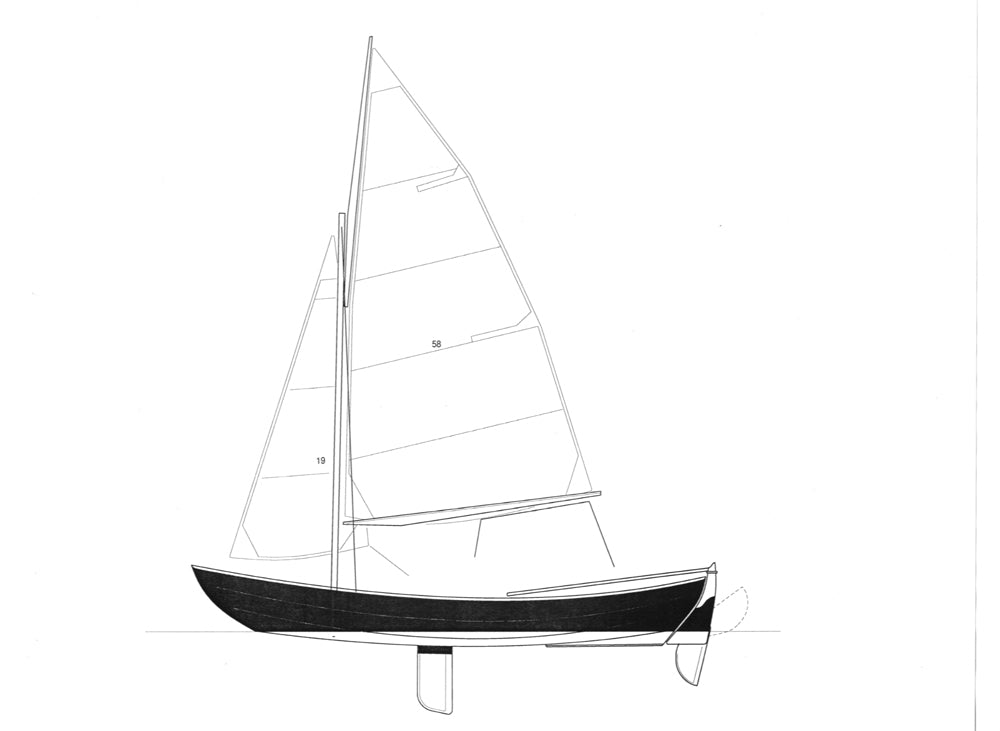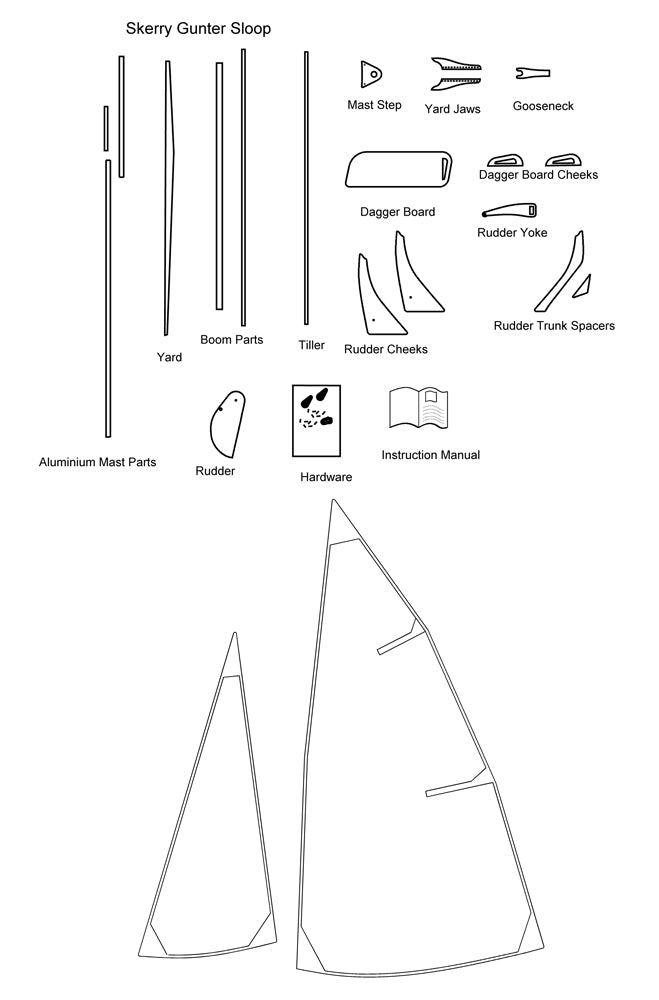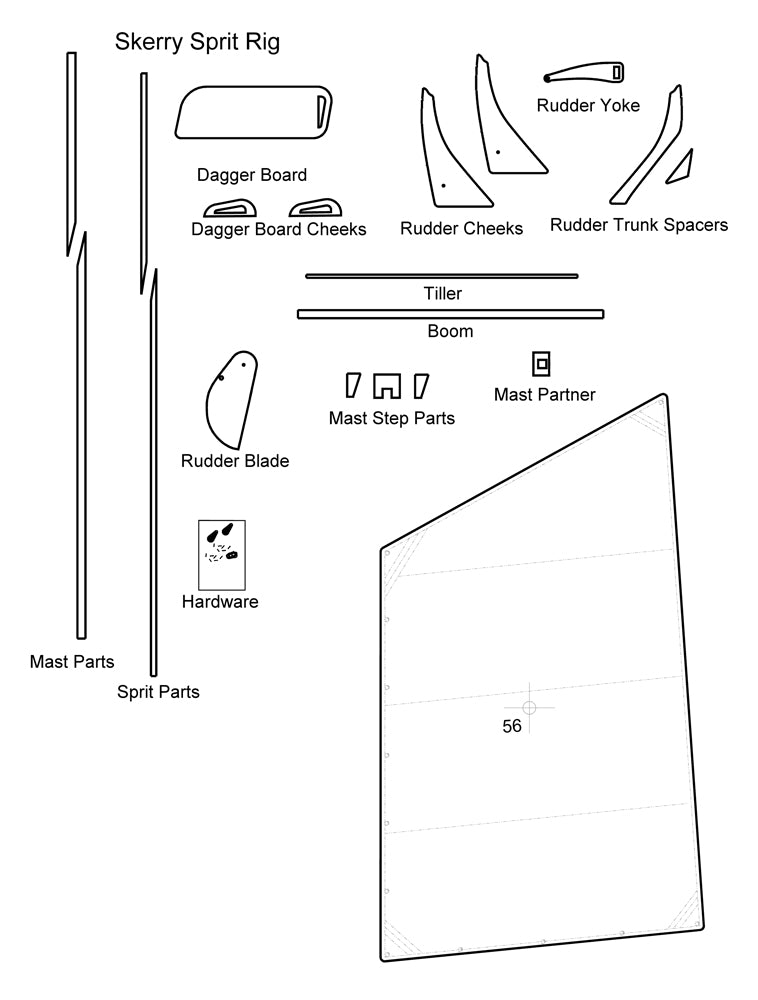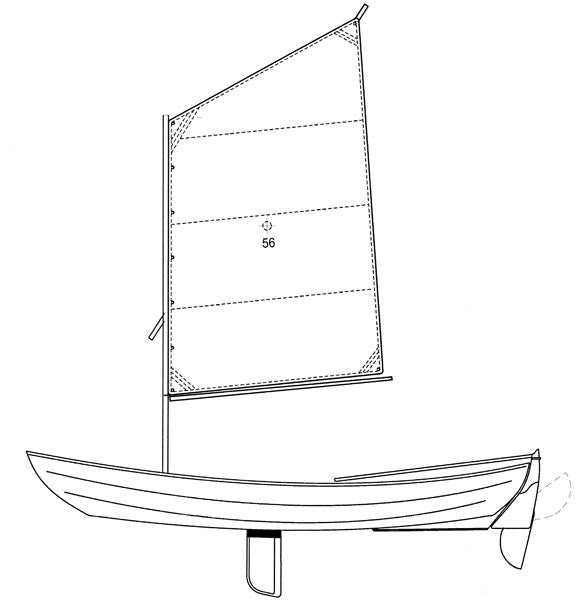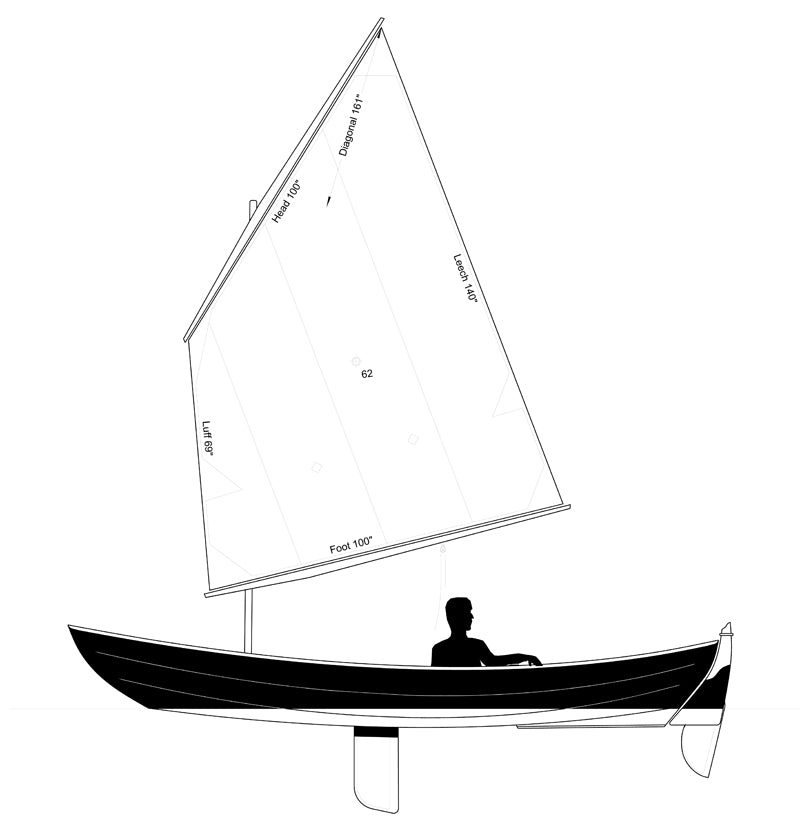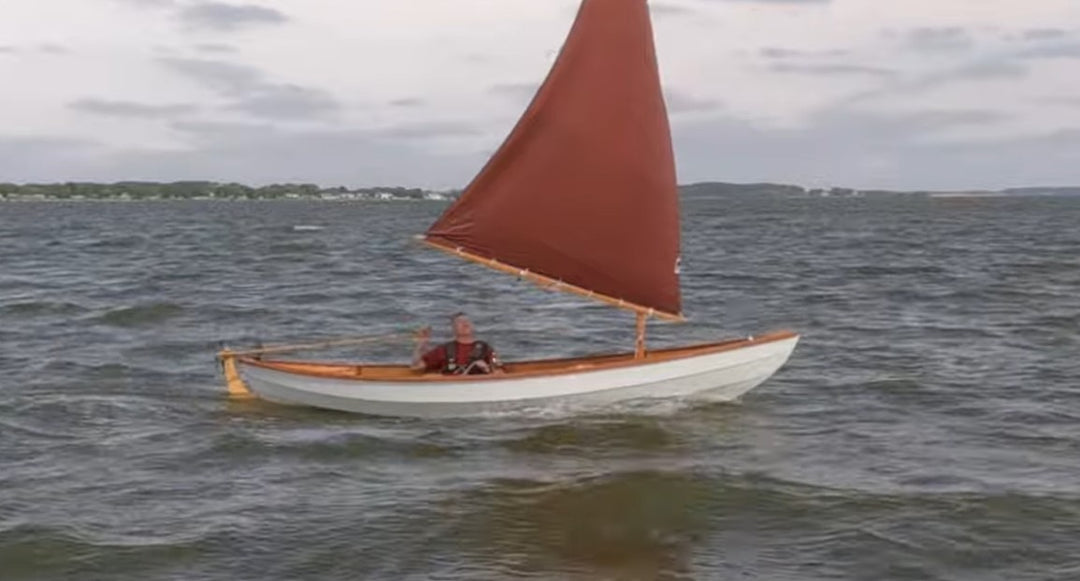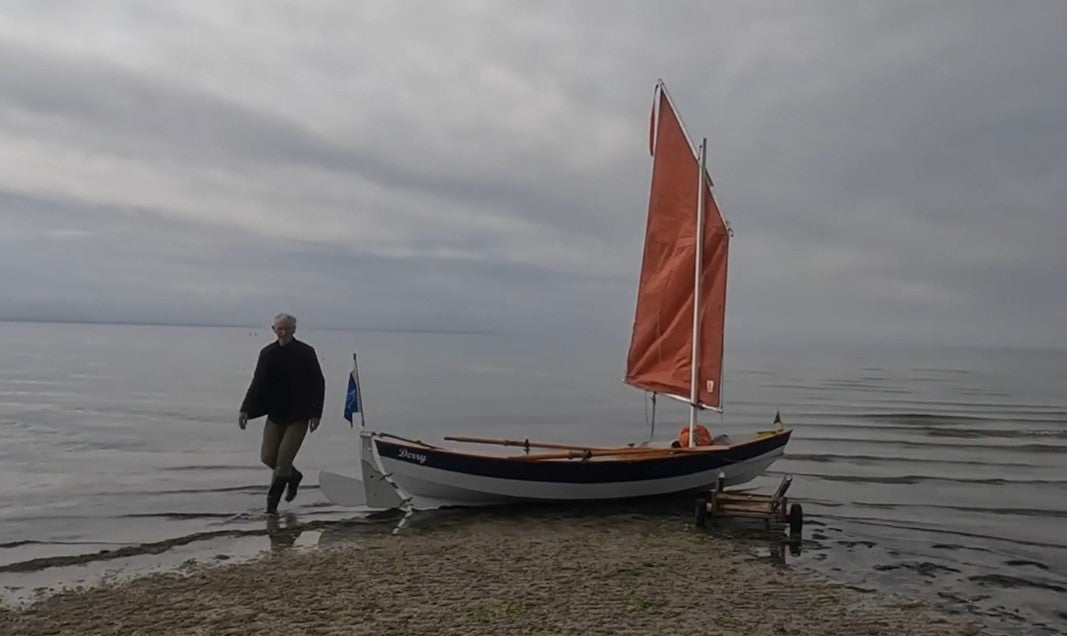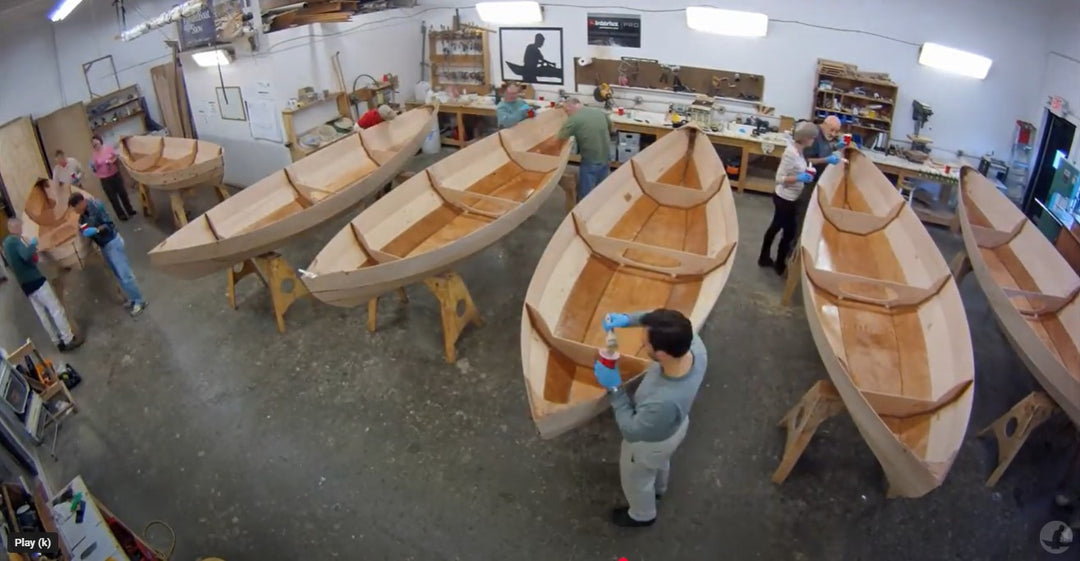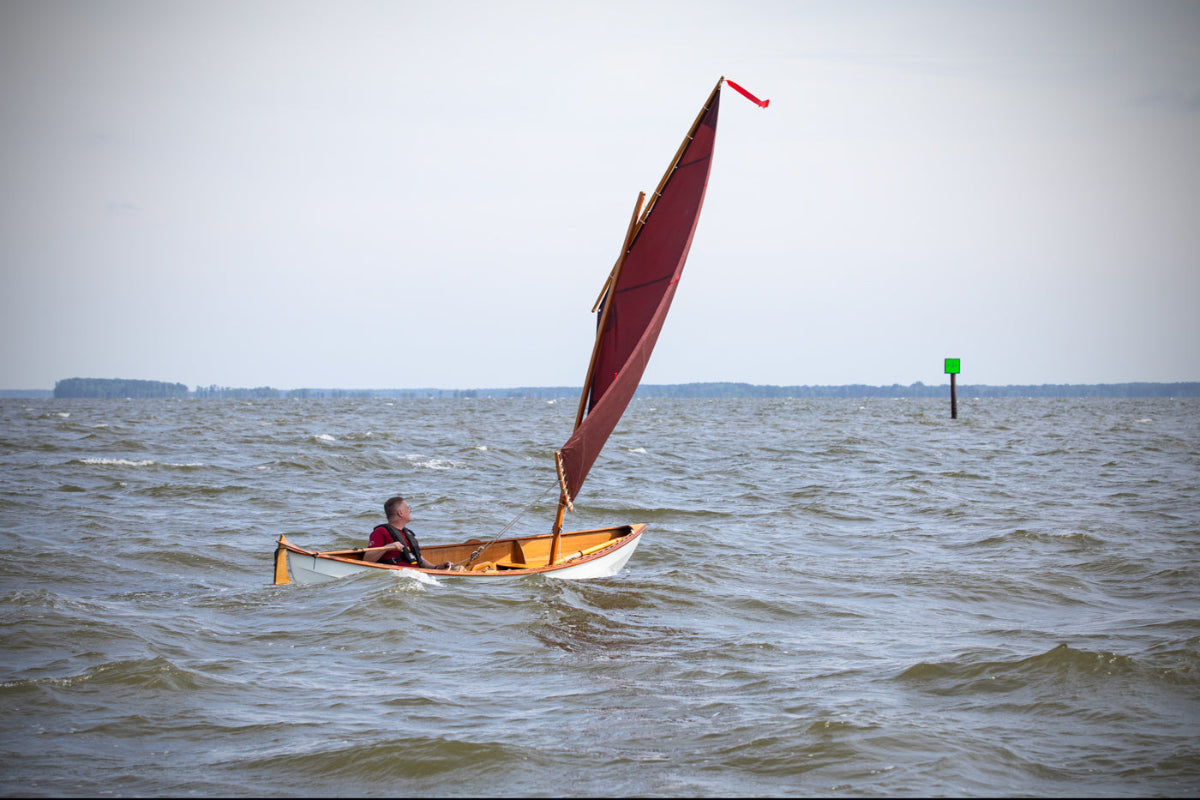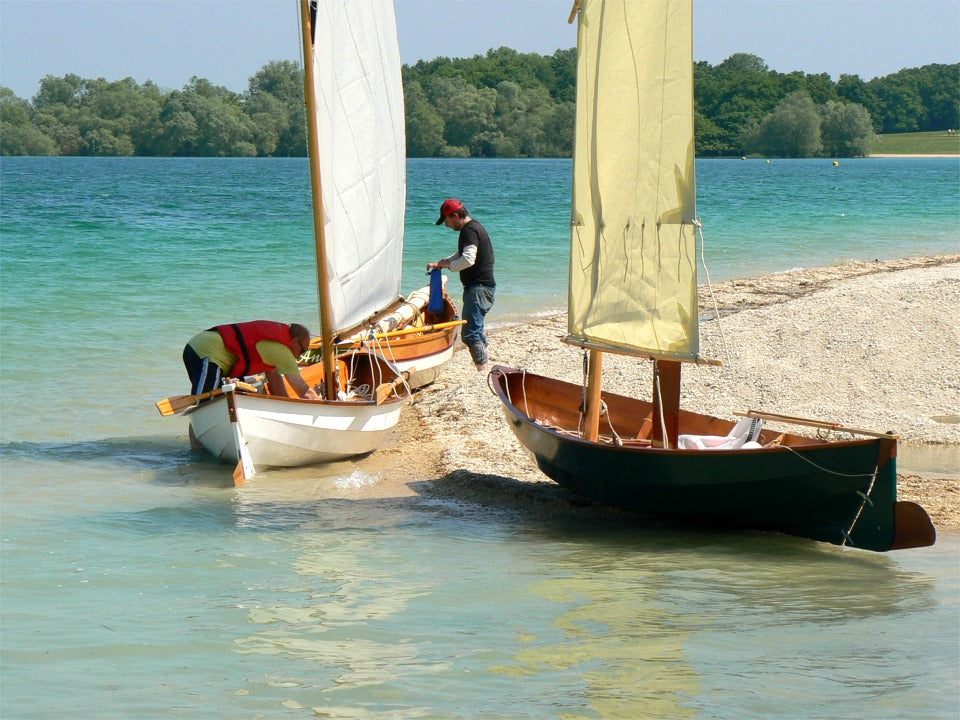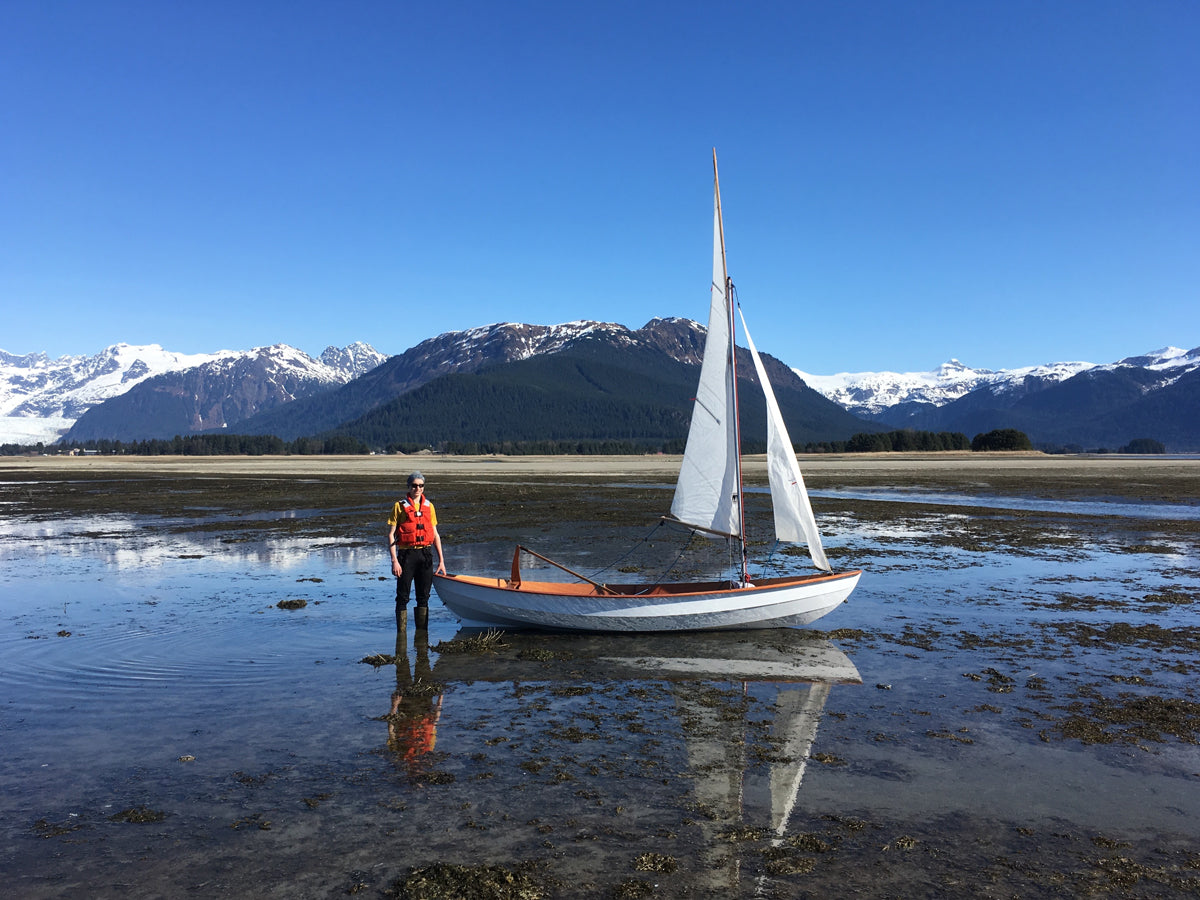Specifications
Performance
Stability
Speed
Cockpit Room
Payload
Ease of Construction
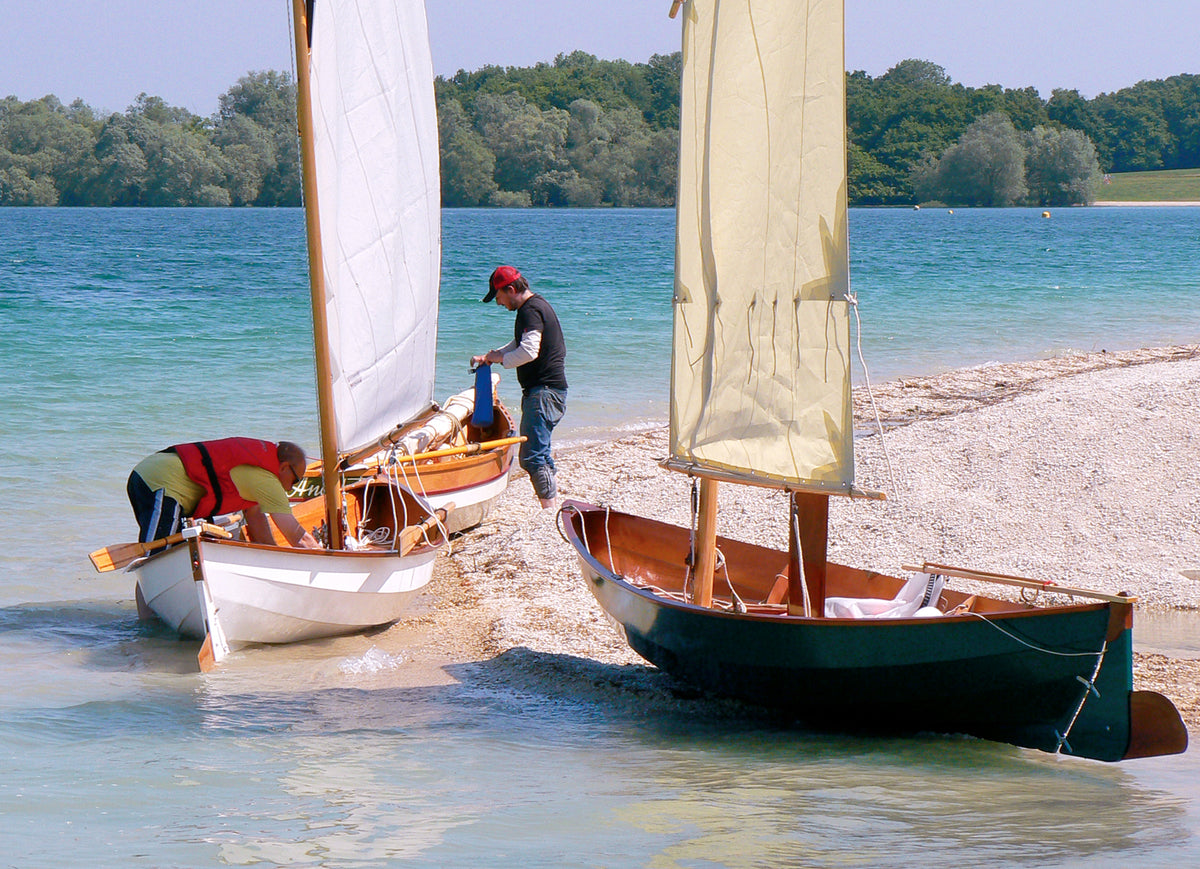
Overview
Easy to build, easy to row, and easy to sail: the Skerry is a boat with timeless good looks that is delightful to row and sail.
The Skerry design combines elements of traditional working craft of the British Isles and Scandinavia, with a little bit of American Swampscott Dory thrown in. This synthesis of historic designs with CLC's LapStitch™ construction method results in a beautiful hull with excellent performance under sail or oar that you can build yourself. This John C. Harris design is that rarest of small boats that rows and sails with equal affinity. Sail when there's wind, row when there's not. You'll cover the miles either way.
The Skerry is an ideal first boatbuilding project, and a good boat in which to learn to sail or row. The Skerry will take you for a relaxing afternoon sail, yet she has the capacity and performance to go “beachcruising”—sailing or rowing by day and pulling up on a secluded beach each evening to camp. The Skerry’s feather-light weight and shallow draft mean that you can poke into quiet waters, pull the boat over a sandbar, and explore that hidden cove. Her flaring sides make the Skerry stable and dry under sail. She's stiff and comfortable and lifts easily over choppy waves.
Three sailing rigs are available:
The sprit rig is the most faithful to the Norse small craft that inspired the Skerry design. It's the easiest and least expensive of the rigs to build—there are no tapers in the spars, for example—and also the quickest by far to set up on the beach. It stows inside the hull for transport. The boom is set high enough that the boat can be rowed with the sail up, extremely handy when maneuvering close to shore.
The balanced lug rig is the best compromise between easy construction, performance under sail, and ease of rigging. Of the three rigs it is the easiest rig to set up and douse while on the water, and the easiest to reef if the wind comes up.
The gunter sloop rig is intended for sailors for whom speed is of paramount importance. The Skerry is a docile and fun boat no matter which rig she carries; the 78 square feet of the sloop rig will elevate her into racing-dinghy-level performance, though with the performance comes the racing dinghy's rigging complexity.
Under oars, the Skerry has a long, easy glide and excellent tracking. Two rowing positions permit the Skerry to be rowed with one, two, or three adults on board.
With a weight of just about a hundred pounds, the Skerry is easy to handle ashore. Given sturdy roof racks and two average adults to do the lifting, the Skerry can be cartopped with ease. Or, if you use the boat by yourself most of the time, the lightest, simplest boat trailer or dolly will work.
The Skerry is a plywood-epoxy composite boat, assembled using Chesapeake Light Craft’s exclusive LapStitch™ technique. The sides are 6-mm Okoume, while the bottom is 9 mm, sheathed with fiberglass for those hard beach landings. The interior includes 9-mm okoume frames and sealed air tanks at the bow and stern for buoyancy. The matrix of high-quality plywood and marine epoxy allows great strength and a glossy finish. To build a Skerry, all you need is a pair of sawhorses and a warm place for a shop. No mold, no lofting, and no odd tools beyond a block plane, a drill, a bucket of clamps, and a sander.
The daggerboard trunk is included in, and integral to, the "base model" rowing kit—it supports the center seat. Thus all builders are ready for the sailing rig from the start. Or leave the trunk sealed and add the rig later.
The Skerry measures 15'0" overall and 4'6" wide. Draft is 5", or with the daggerboard down, 30". The rudder kicks up easily for beach landings. The Skerry is steered with a traditional Scandinavian push-pull control. Everyone who has ever spent time in a Skerry has lauded the push-pull tiller as it opens up the interior for flexible seating. The more common pivoting tiller limits the seating options, effectively blocking off the rear third of the cockpit. We do see the more common tiller arrangement fitted on Skerries that are sailed hard without concern for seating flexibility; many of the large fleet of Skerries in France are rigged that way.
Early in the Skerry's run it was noted that the design had much promise as a cruising dinghy. In 2008, John Harris modified the Skerry by adding a deck with more flotation and storage. The first of these modified and uprated Skerries was rowed and sailed more than 6000 miles by adventurer John Guider, completing the circuit of North America known as "The Great Loop." This version, now known as the Skerry Raid, is available in kit form and many have been built. We later developed that concept of an Expedition Skerry further, the result of which is aptly named The Guider, after the man who inspired it.
A little about the name "Skerry": The term is related to the Old Norse "sker," an Orkney word, the local name for a "rugged . . . sea-rock, covered by the sea in high water or in stormy weather." It was also the name given (c 1540) to "little punts or boats that will carry but two apiece." (Both quotes from the OED.) "Skerry" is now common in Irish, and is found in the Rosalie Fry children's book The Secret of Ron Mor Skerry. That book, in turn, became the famous John Sayles film The Secret of Roan Inish.

Read featured articles about the Skerry in Small Boats Nation:

What builders are saying
Main Gallery
Construction Gallery
Line Drawings
Videos
Frequently Asked Questions
Sail and Row the Skerry Almost Anywhere
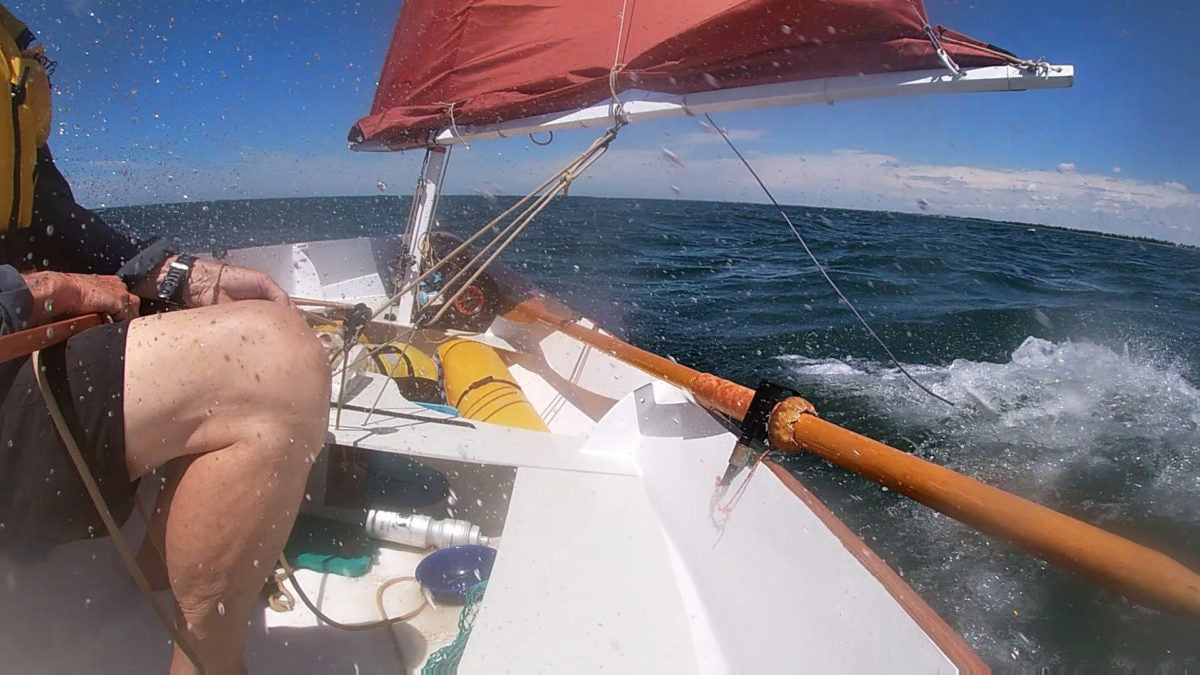
DERRY – 15′ CLC Skerry
Take One of our Boatbuilding Classes
We offer classes for many of the boats we sell. Teaching sites stretch from Maryland to Washington State and from Maine to California. Click here to find out more.
View Classes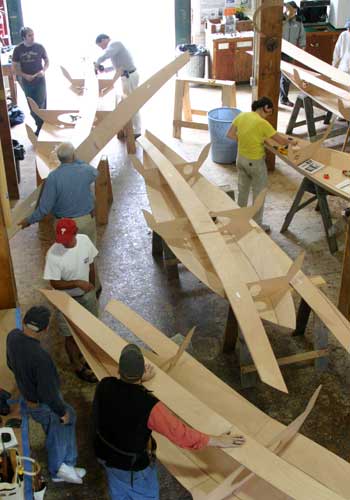
Need Help Building it?
We’re here to help with any questions you might have during the build process.
